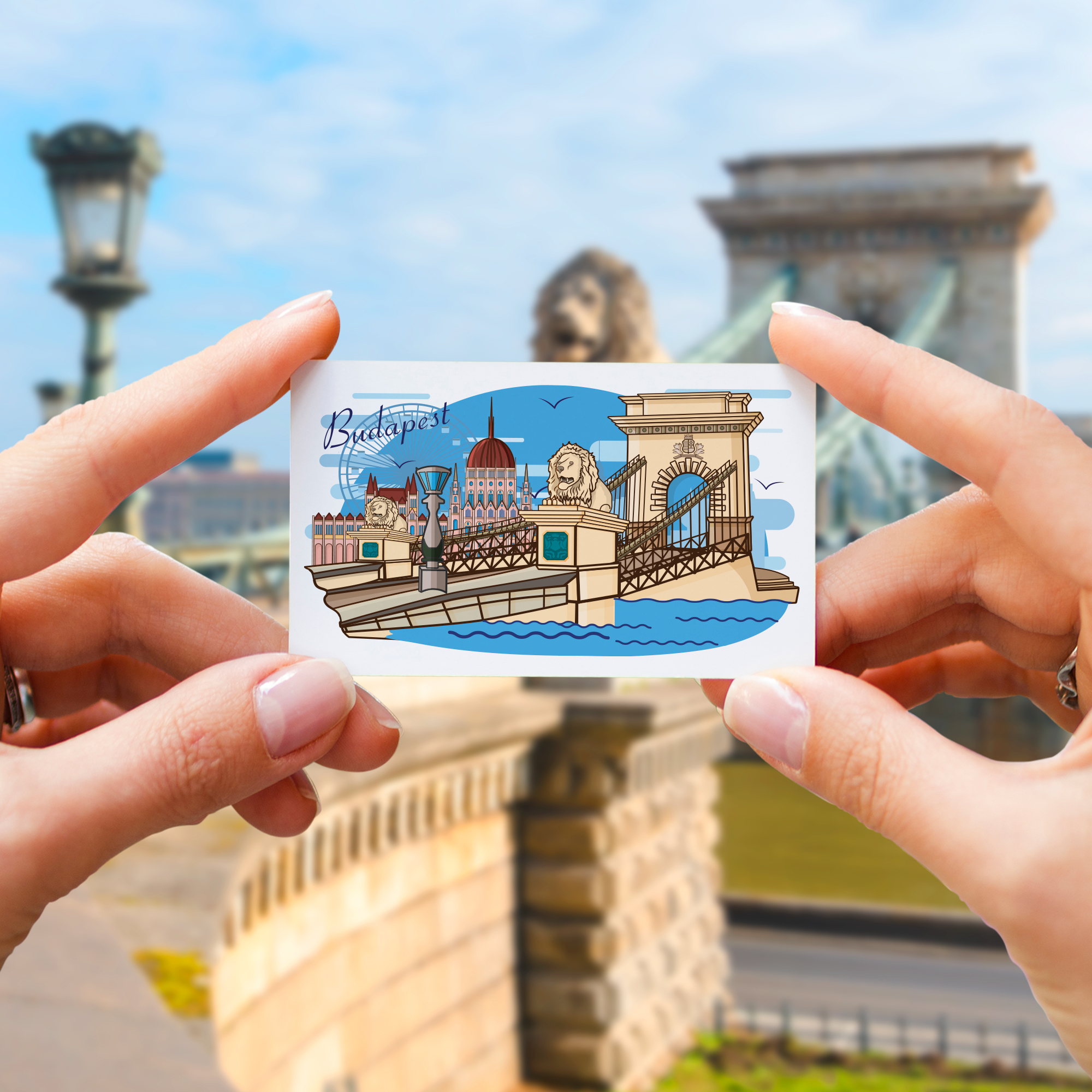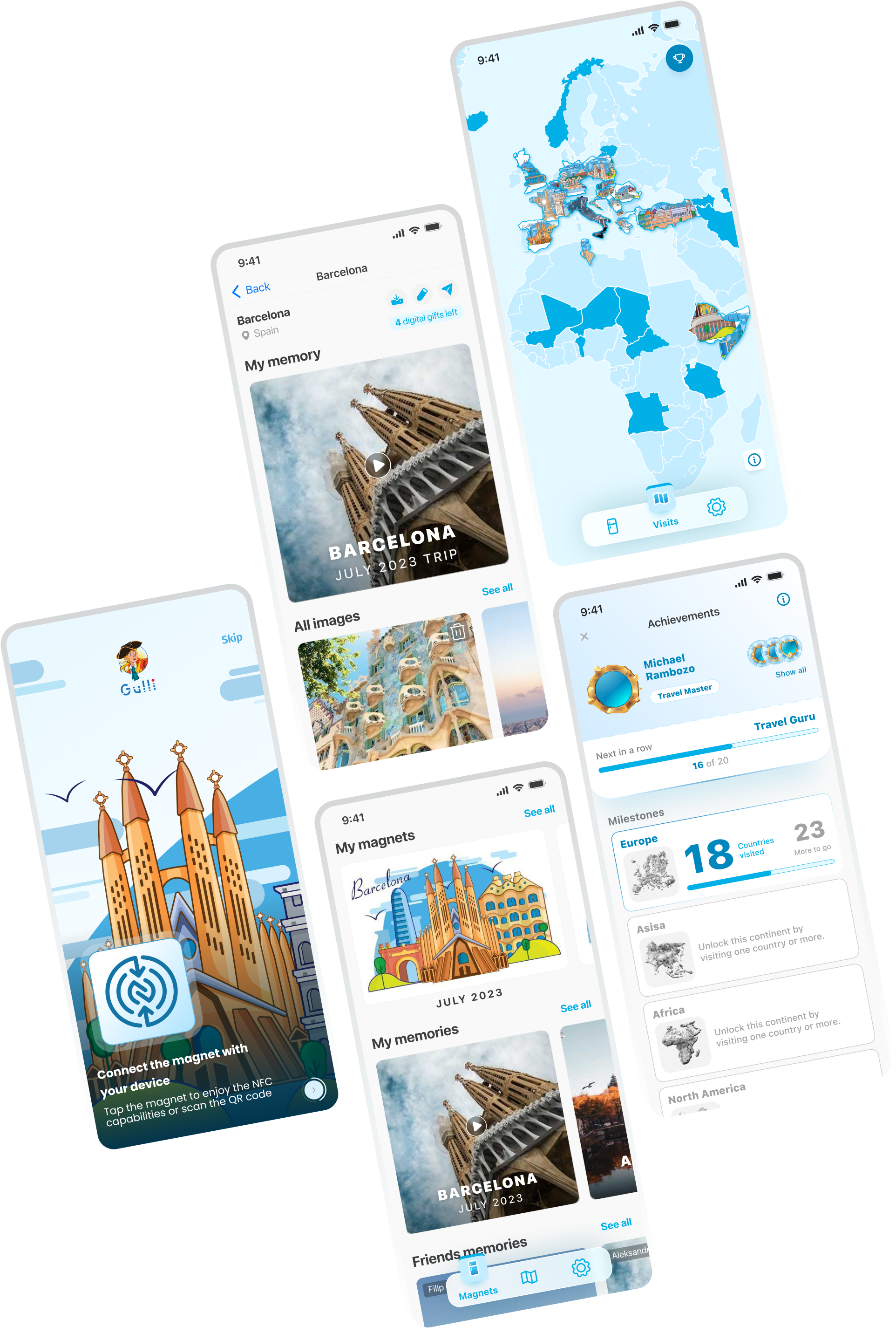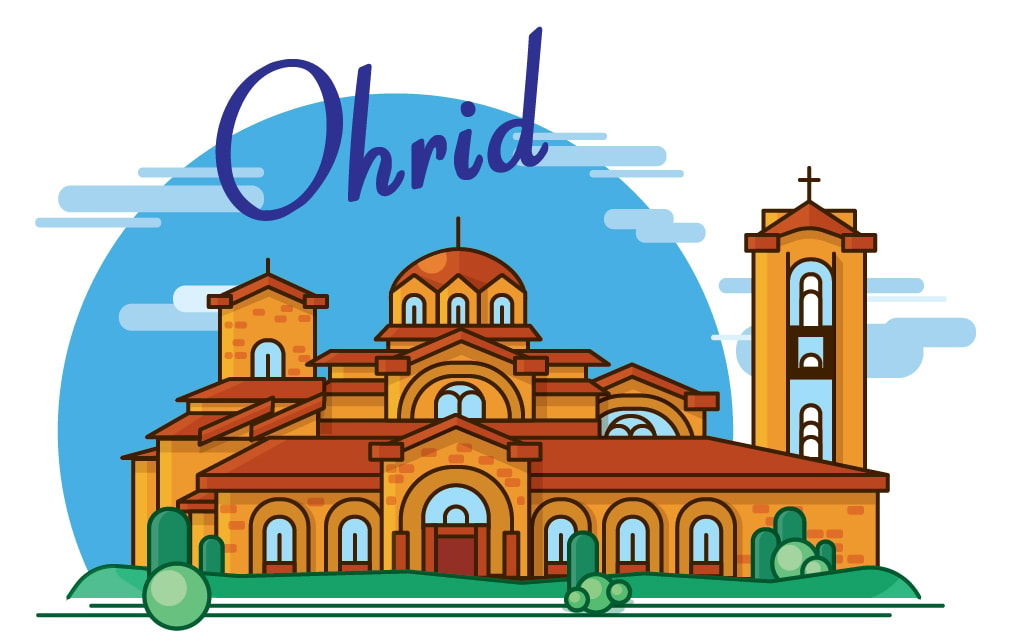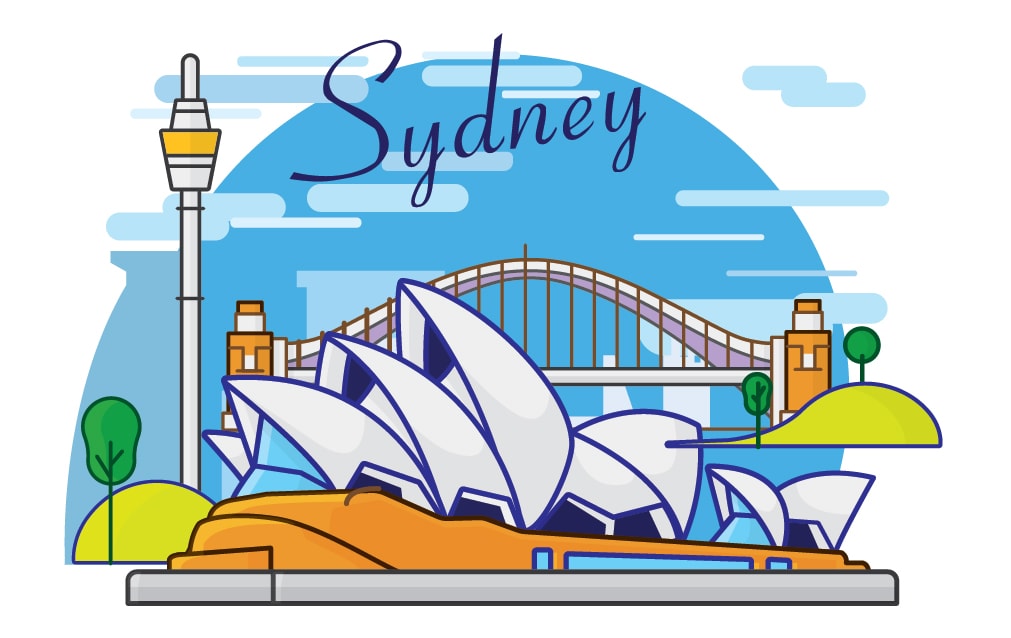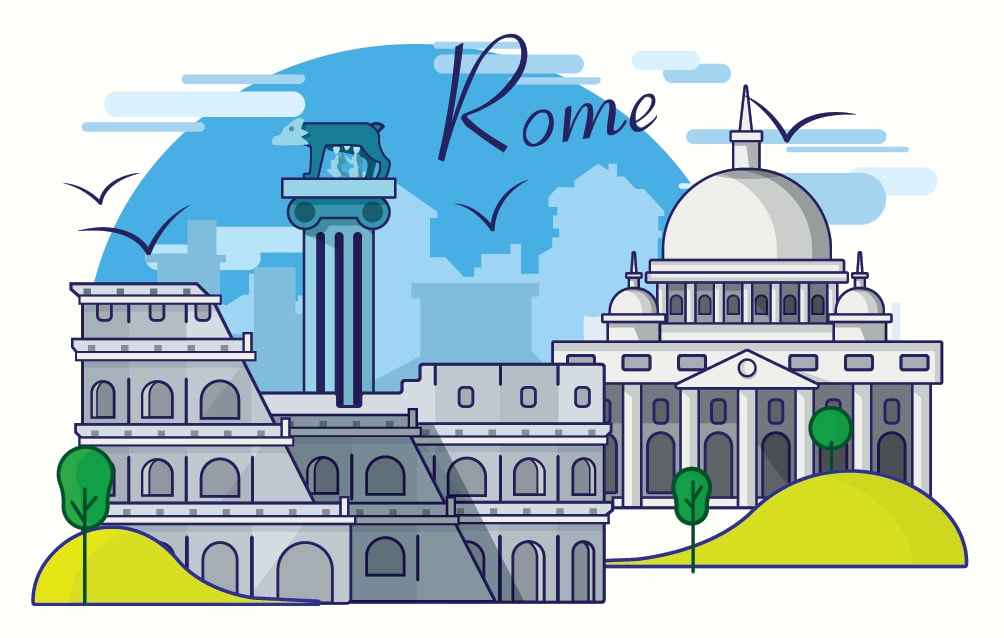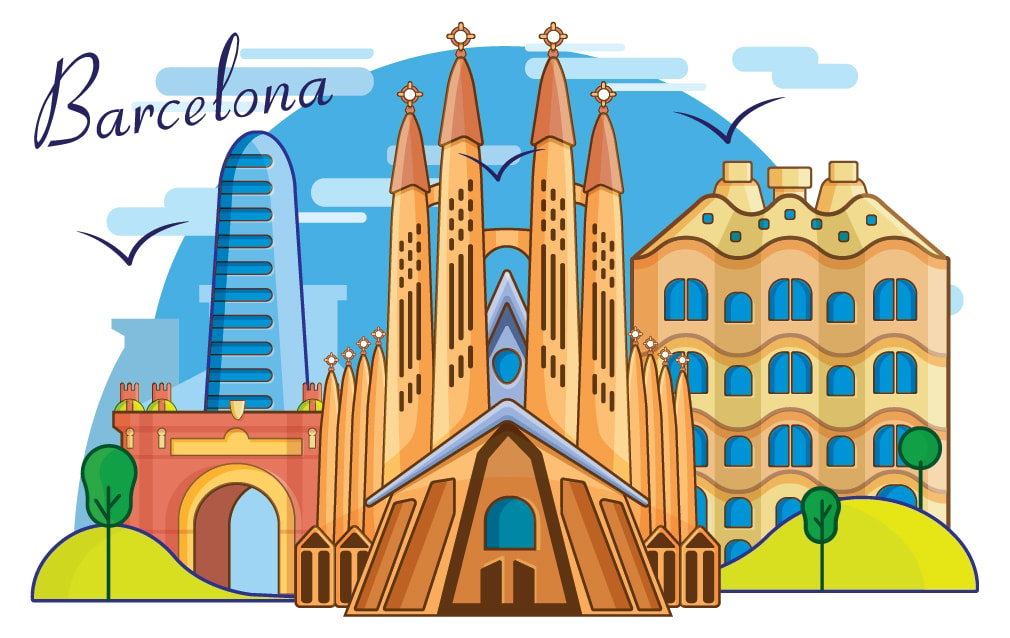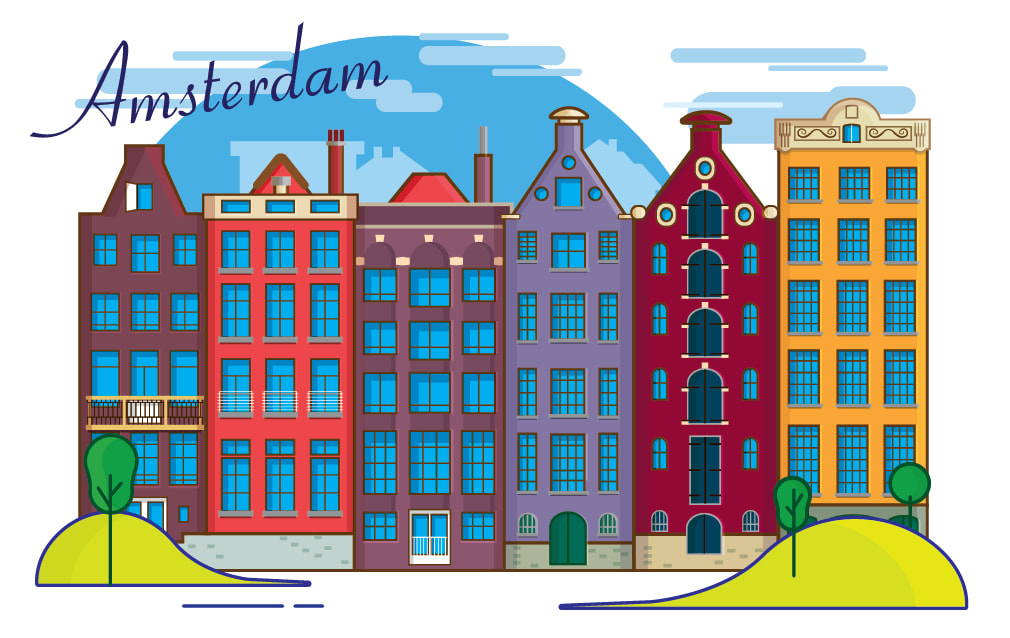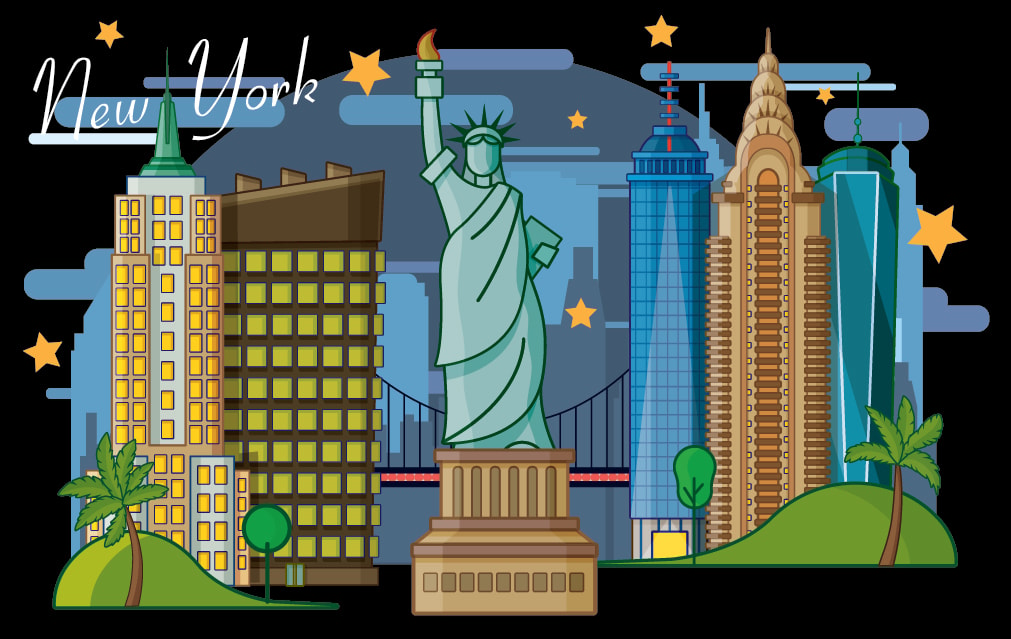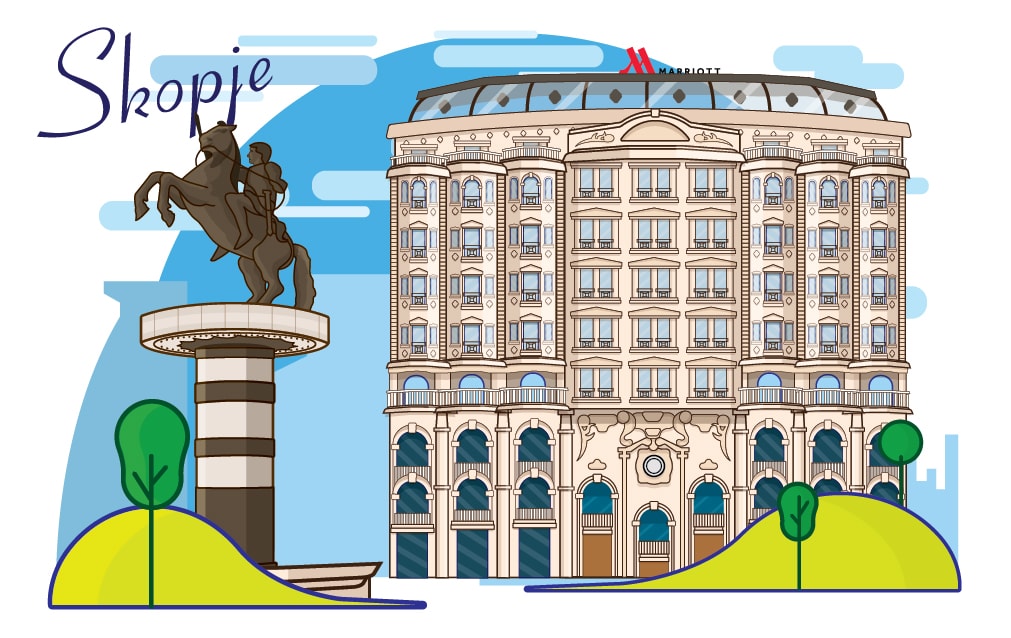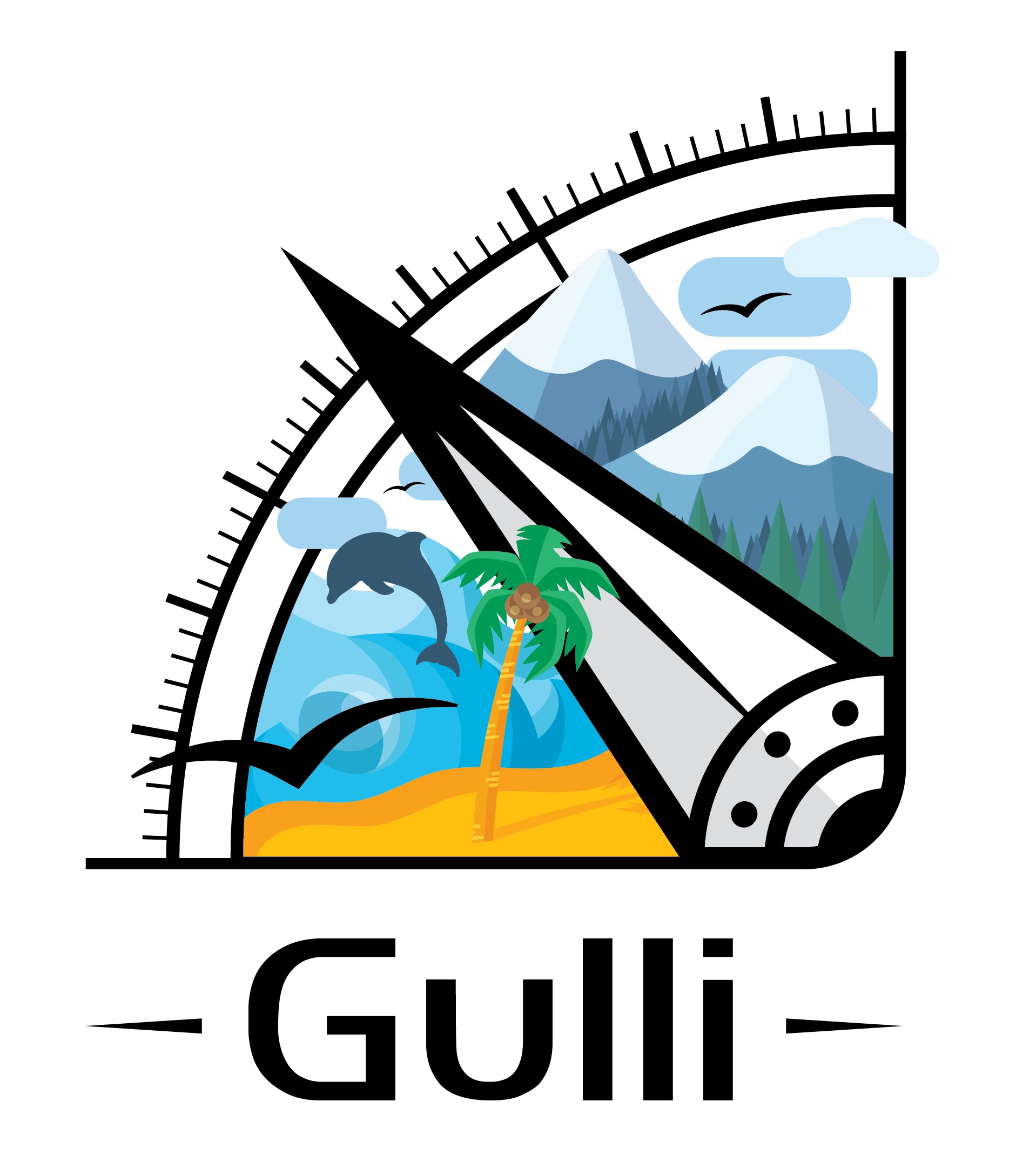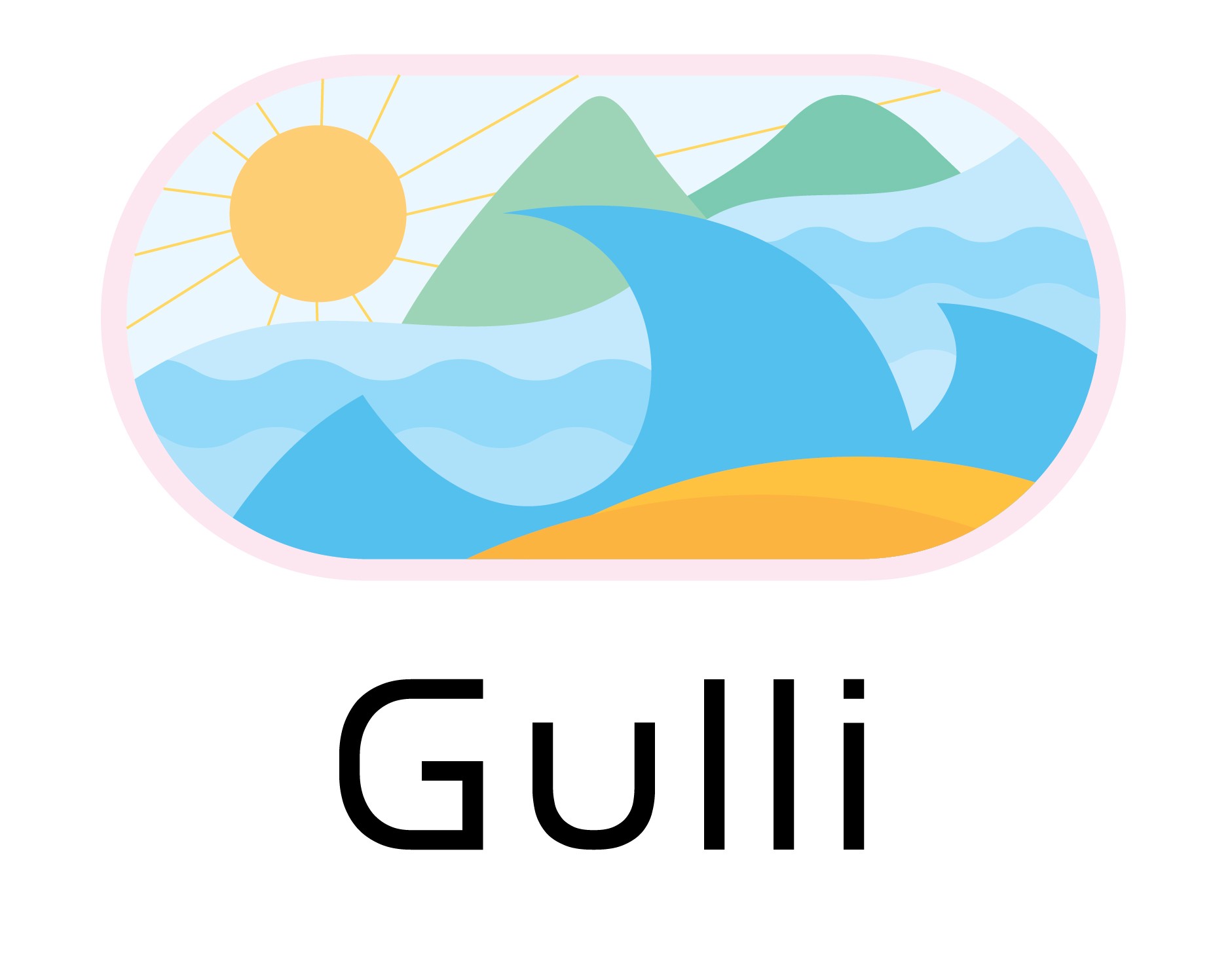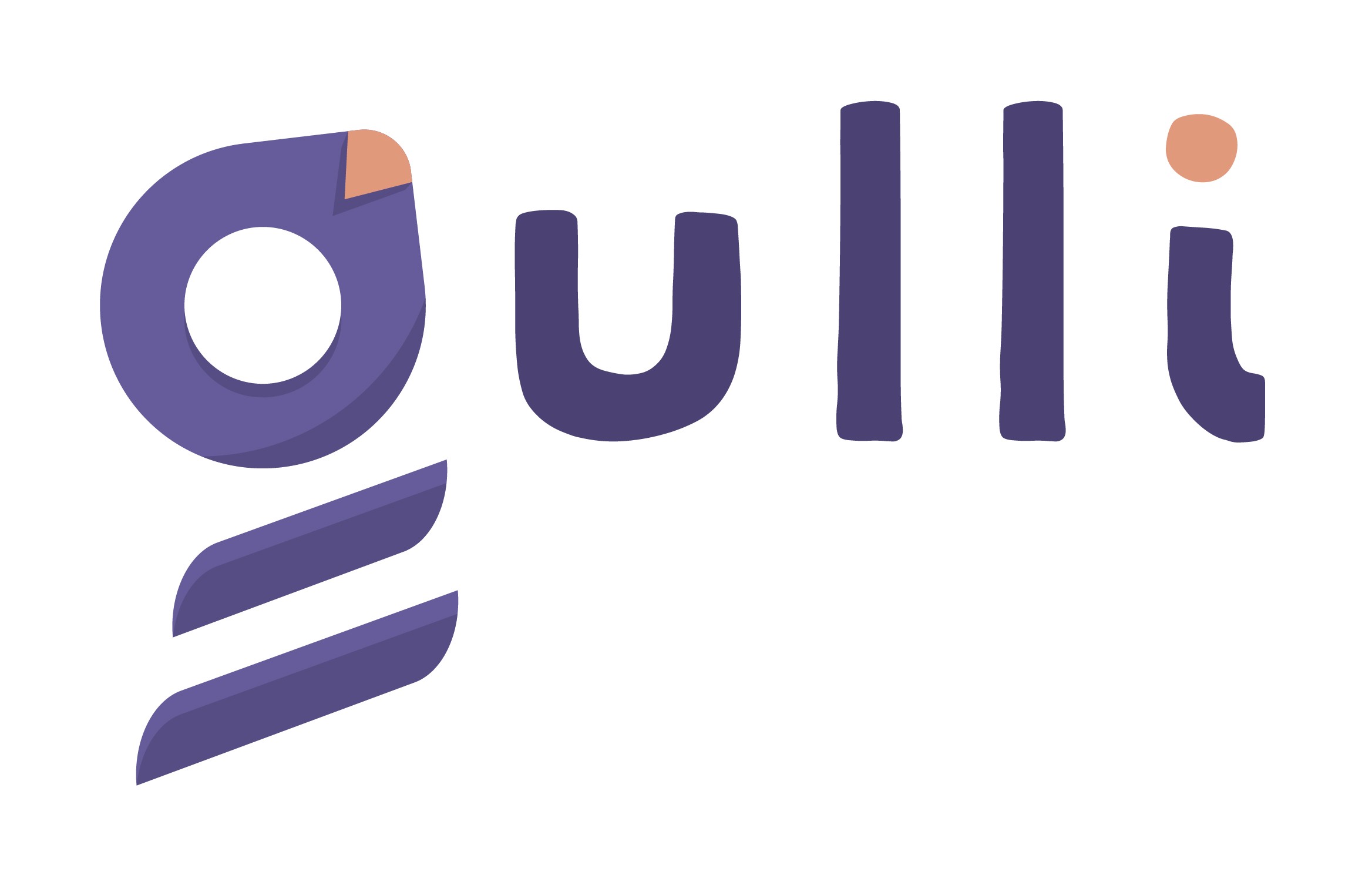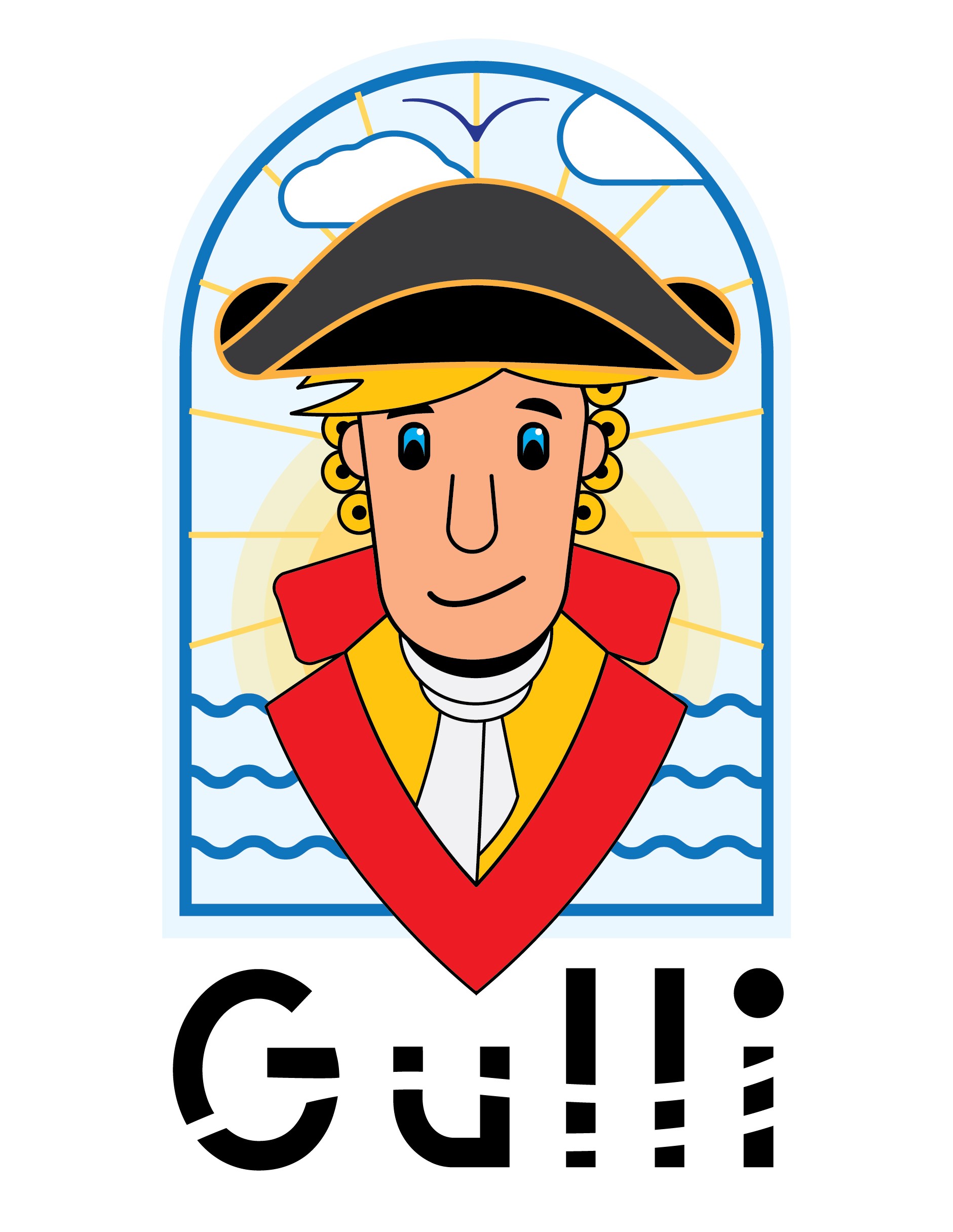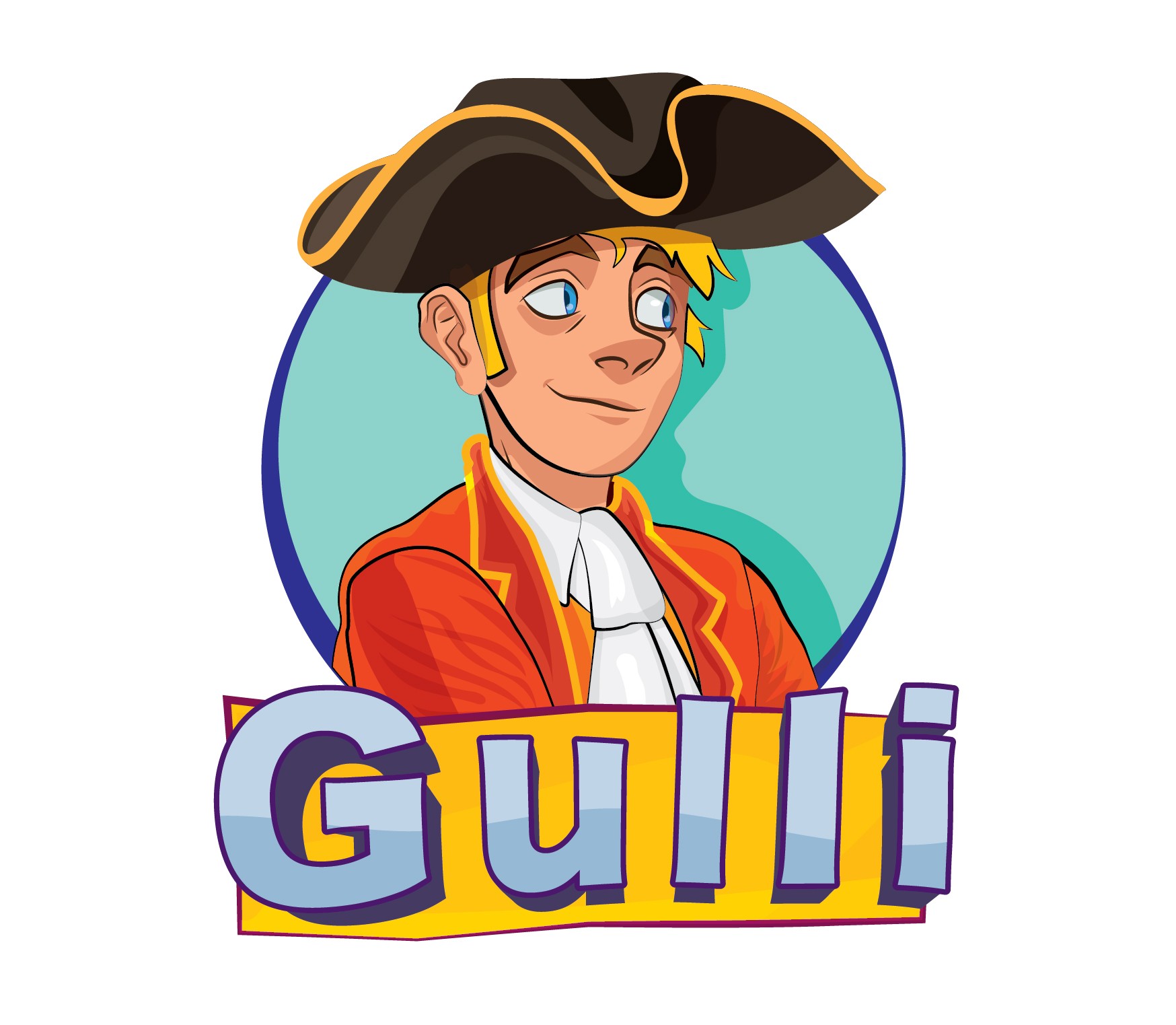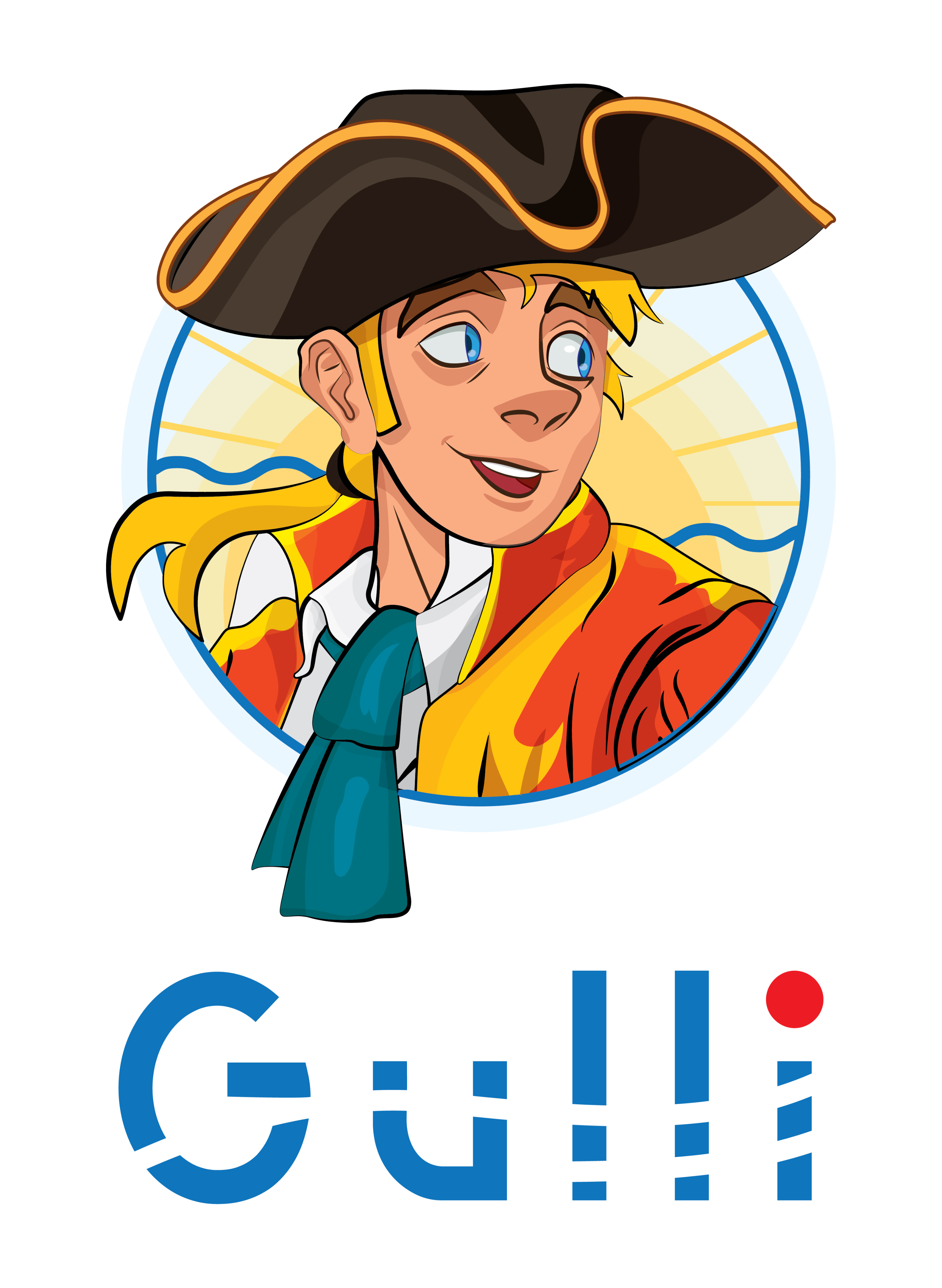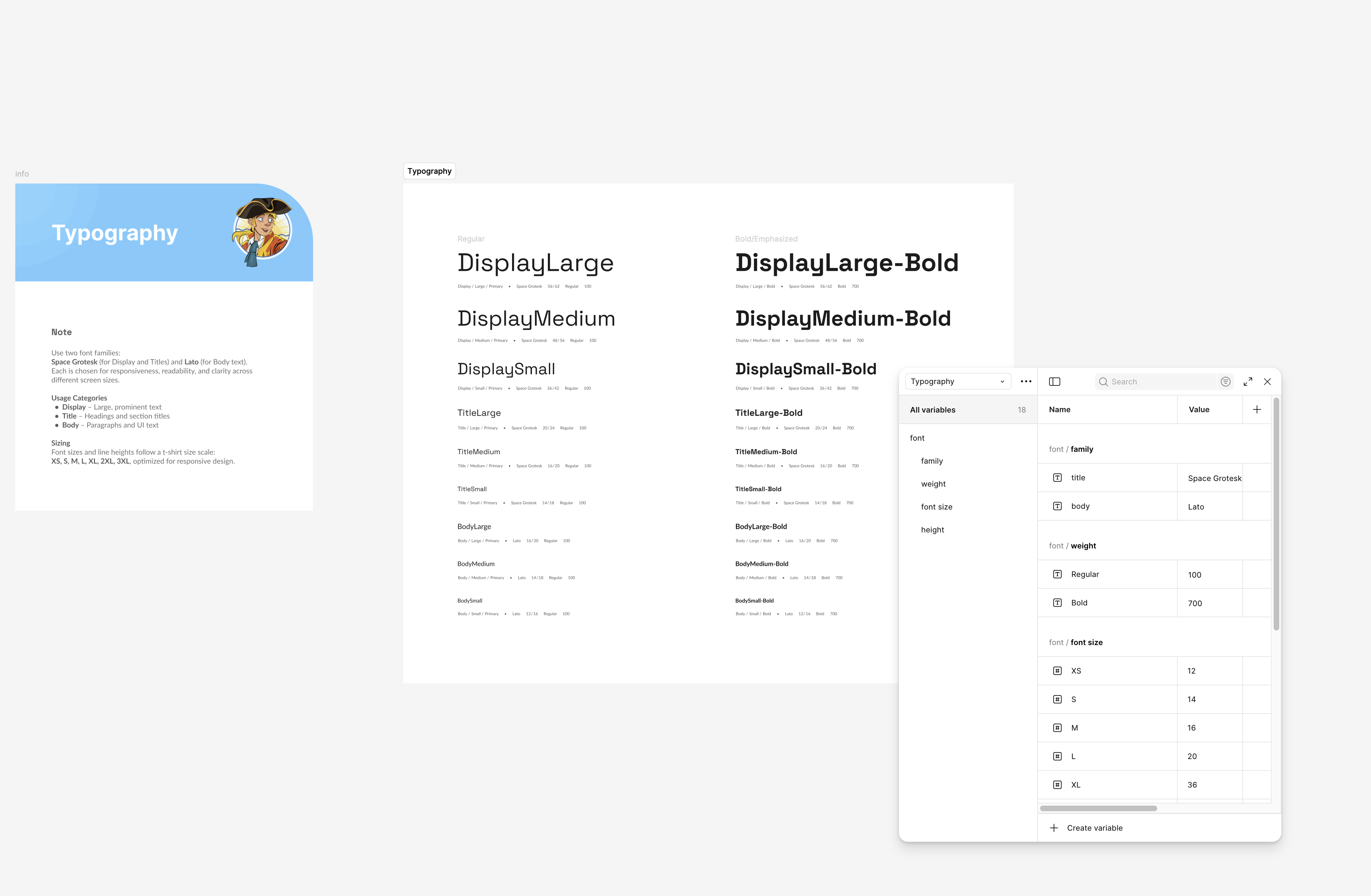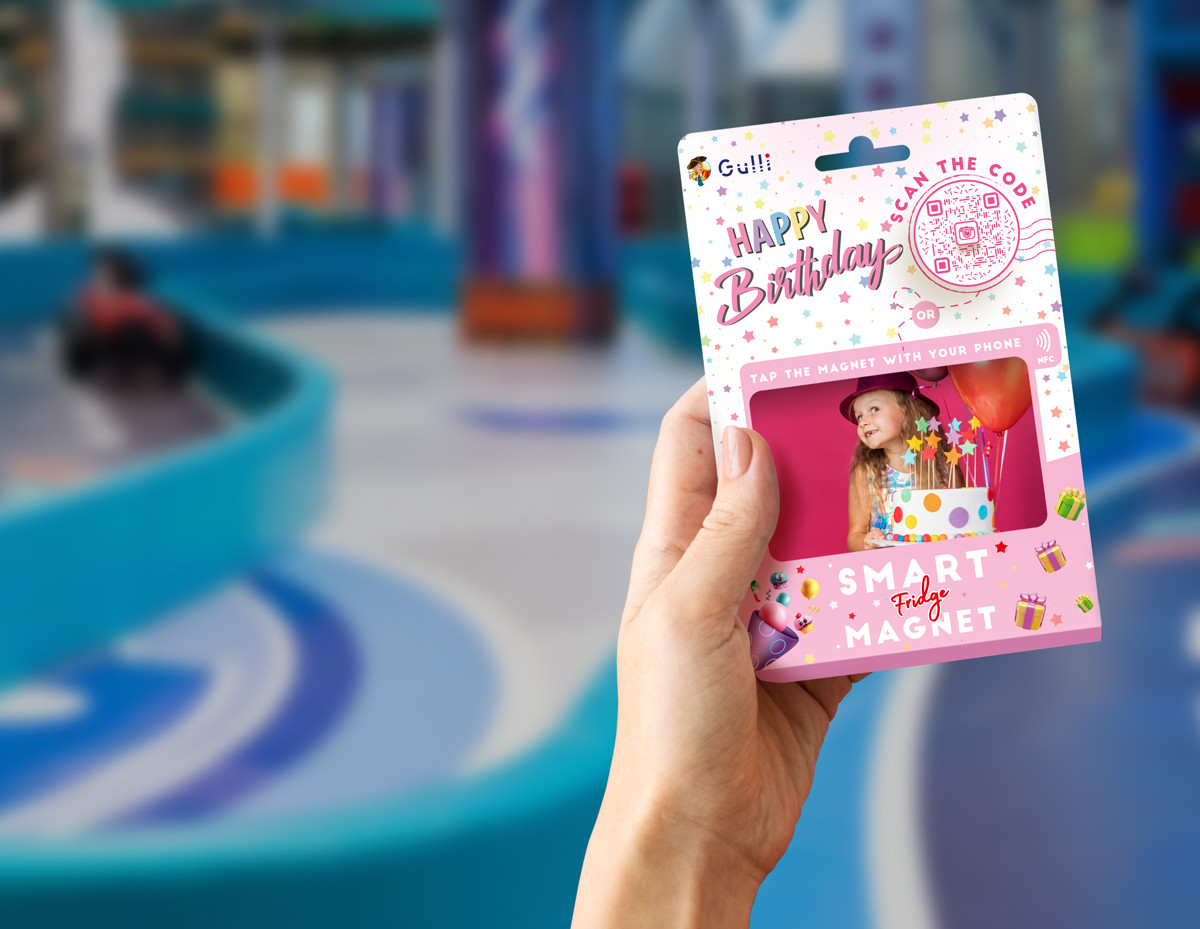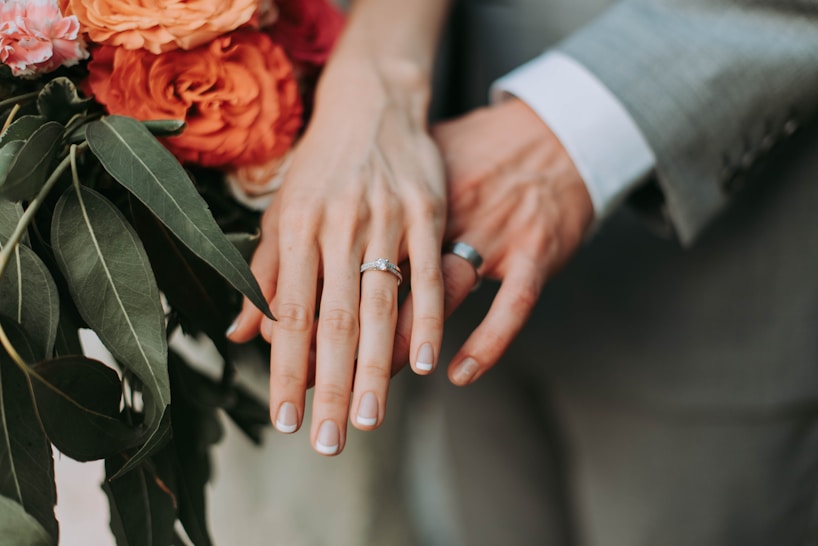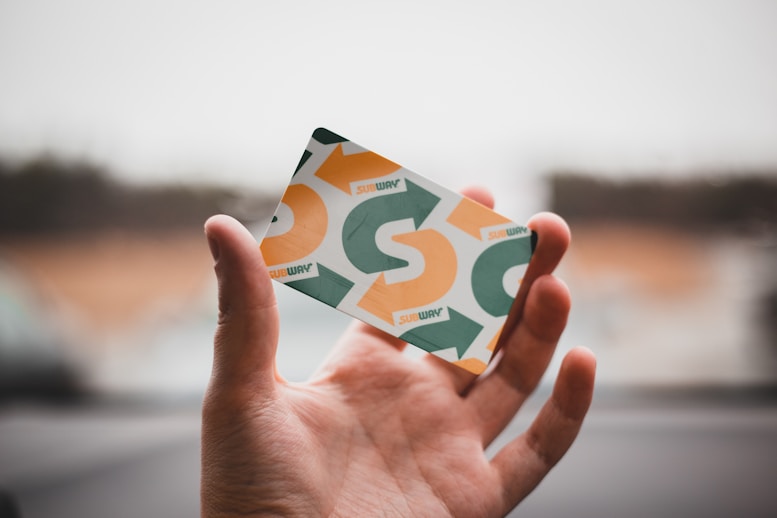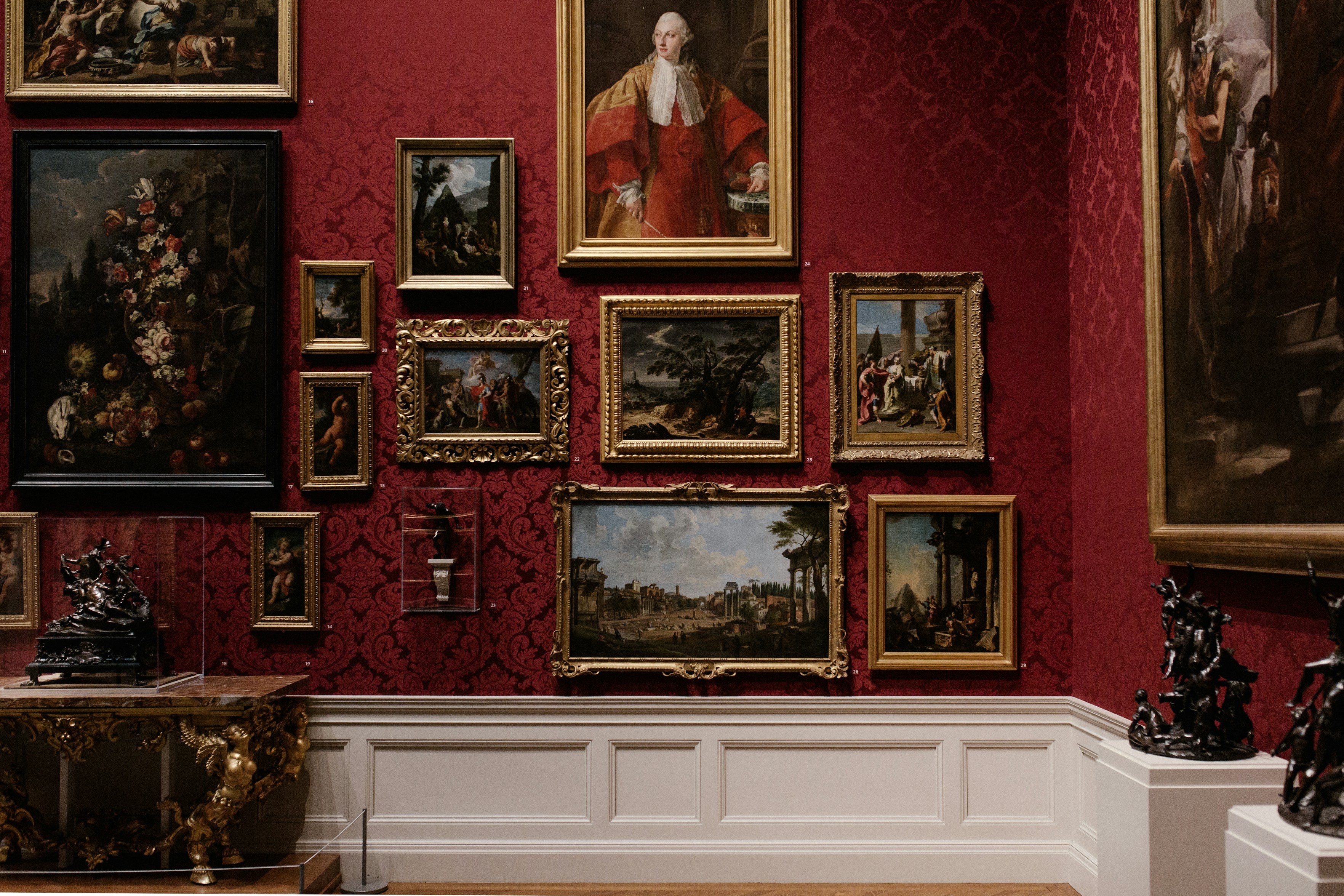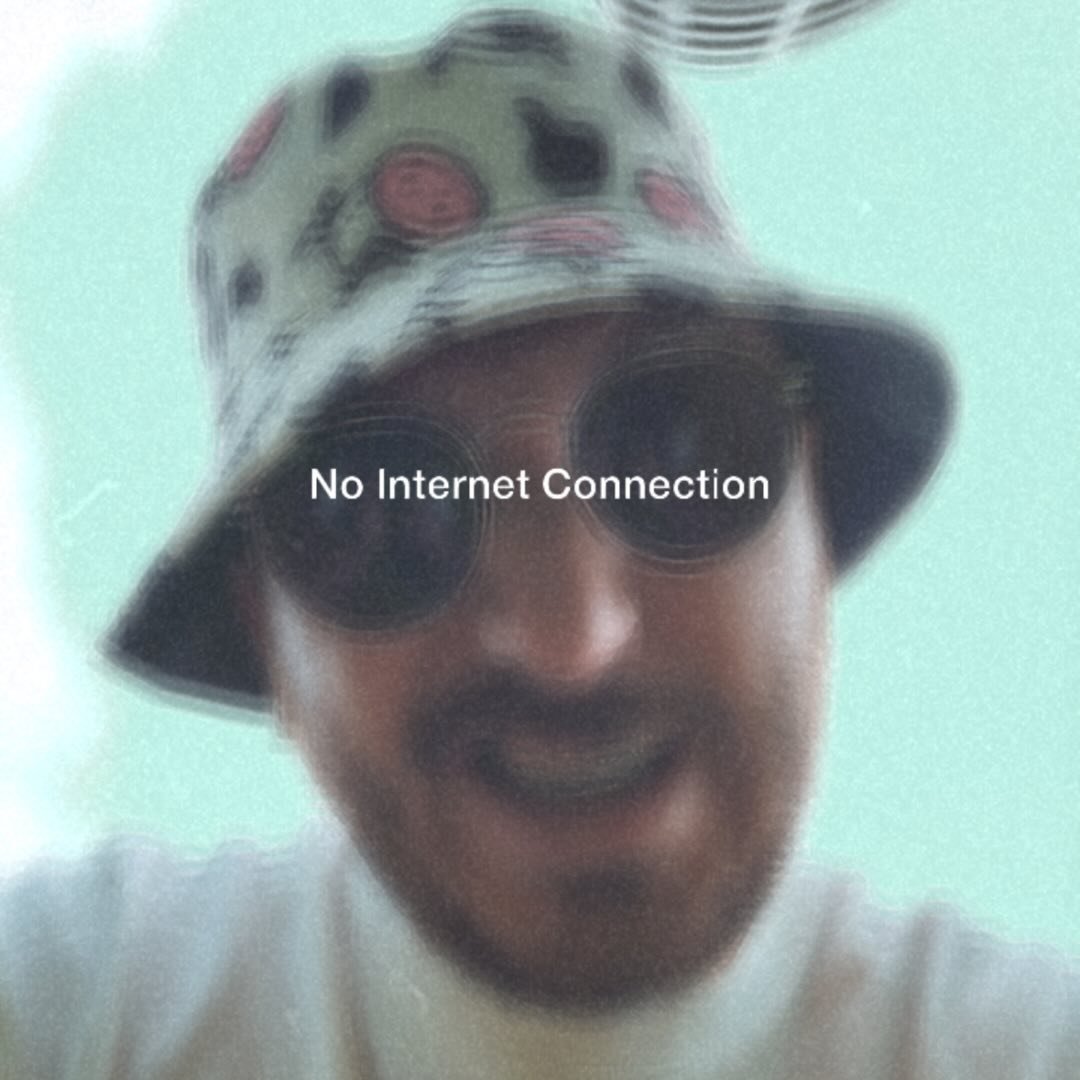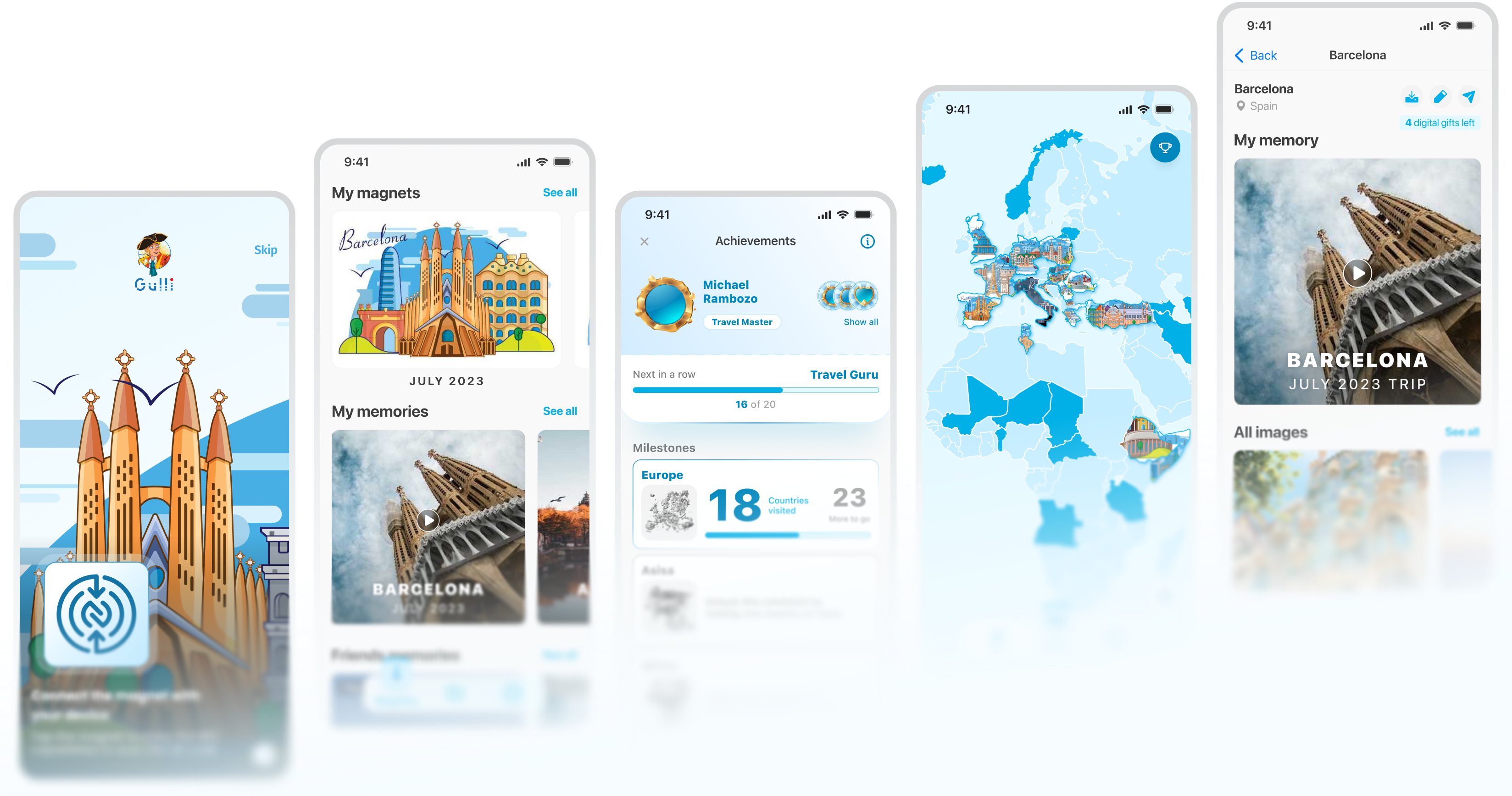What started as a sketch turned into a global keepsake. In 18 months, Gulli Magnets grew into a hybrid product sold in 40+ countries, with 480,000 magnets in homes and 24,000 memories gifted. By combining research insights with branding, SaaS design, and physical product execution, I built an ecosystem that bridges travel, emotion, and technology.
User interviews
What we learned from our users
I conducted interviews across four categories, speaking with travelers about how they captured memories, their feelings toward souvenirs, and their openness to physical–digital hybrids.
The results were clear:
- 92% preferred illustrated magnets over generic photo-based ones.
- 88% loved the idea of tap-to-memory without downloading an app.
- 81% said gifting made memories more personal.
- 73% found gamification motivating and engaging.
These insights didn’t just validate the vision—they directly shaped the features I designed, from the onboarding flow to gift interactions.
1
Travel & Memory Habits
Questions
- Can you tell me about a trip that meant a lot to you? What made it special?
- How do you usually keep memories from your travels?
- Do you collect anything when you travel (e.g. magnets, postcards, tickets)?
- How do you feel when you look at a souvenir or photo from your travels?
Answers
- Yeah, my solo trip to Japan. I didn’t speak the language, but everything felt like an adventure. I met people I still talk to today and found a lot of peace just walking through Kyoto’s temples.
- Mostly through photos and short notes in my phone. Sometimes I write in a journal if I have time. And I keep all the tickets — trains, museums, even receipts sometimes.
- Always magnets. It started randomly, but now my fridge is full of places I’ve been. I also grab postcards, even if I don’t send them — I just like the designs.
- Honestly, I feel this warm rush. Like I’m briefly back there. It’s a mix of nostalgia and pride — like, “I’ve really lived that moment.”
2
Visual Storytelling
Questions
- What would make a travel souvenir more meaningful or personal to you?
- If you could carry your favorite travel stories in your pocket, what would that look like?
- How do you feel about travel magnets that are illustrated instead of photos?
- Do illustrated representations of cities/landmarks speak to you emotionally or creatively?
Answers
- If it had a story behind it — like something handmade, or if it reminded me of a specific moment or feeling. Personal touches always win over generic stuff.
- Maybe small cards or magnets with tiny illustrations and a quote or phrase that brings me back. Like a visual diary I can hold.
- I actually love that! Illustrations feel more timeless and unique. Photos can be generic, but a drawing feels like someone’s perspective, not just a snapshot.
- Definitely. They often capture a vibe more than a literal scene. It sparks imagination — like, “What’s the story here?” Makes me want to revisit or daydream.
3
App + Magnet Combo
Questions
- What do you think about the idea of an app that lets you collect illustrated travel magnets and order physical ones for your fridge?
- Would you rather have digital-only memories or physical ones you can gift or stick on your fridge?
- How important is it for you to personalize or “unlock” magnets based on places you've actually been to?
Answers
- That sounds really fun and nostalgic! I’d love a mix of digital collecting and being able to turn the special ones into real magnets. It’s like merging memories with art.
- Definitely physical. Digital is great for collecting, but there’s something special about holding it or seeing it every day. Plus, they make cute gifts for friends and family.
- That makes it more meaningful, honestly. If I could “earn” or unlock a magnet only after visiting a place, it would feel like a little badge of honor — a reward for the adventure.
4
Validation & Improvement
Questions
- What’s missing from how you currently capture or celebrate your trips?
- Would you recommend an app like this to a friend? Why or why not?
- How would you describe Gulli Magnets in your own words after hearing about it?
Answers
- I usually just take photos, but then they get buried in my phone. I wish there was a more fun or creative way to relive the highlights — something more visual and personal than just scrolling through albums.
- Yeah, for sure! Especially to friends who travel a lot or love collecting things. It’s different, artistic, and adds a playful twist to remembering trips. Plus, the physical magnets are such a nice touch.
- It’s like a mix between a travel journal and an art collection — but for your fridge! It’s a fun way to turn your memories into something you can see, touch, and even share.
User insights
Validating the vision with users
92 %
of users preferred illustrated magnets over generic photo-based souvenirs.
88 %
said they’d love to unlock magnets based on where they’ve actually been.
76 %
of users said they often forget or lose access to travel photos stored in their phone/cloud.
68 %
shared that they already collect something physical during trips (e.g. magnets, tickets, postcards).
The Problem
Traditional souvenirs are one-dimensional — they show where you’ve been, but not what it felt like. Travel memories often get buried in phone galleries, and sharing them digitally can feel impersonal or disconnected. What travelers really crave is something more meaningful — a way to relive the emotions behind their trip, not just the location.
The Goal
The mission was to design a collectible that blended physical charm with digital storytelling. My vision was simple: turn every illustrated magnet into a living memory capsule powered by NFC, with an effortless, app-free experience. From packaging to platform, every detail needed to feel cohesive, intuitive, and fun.
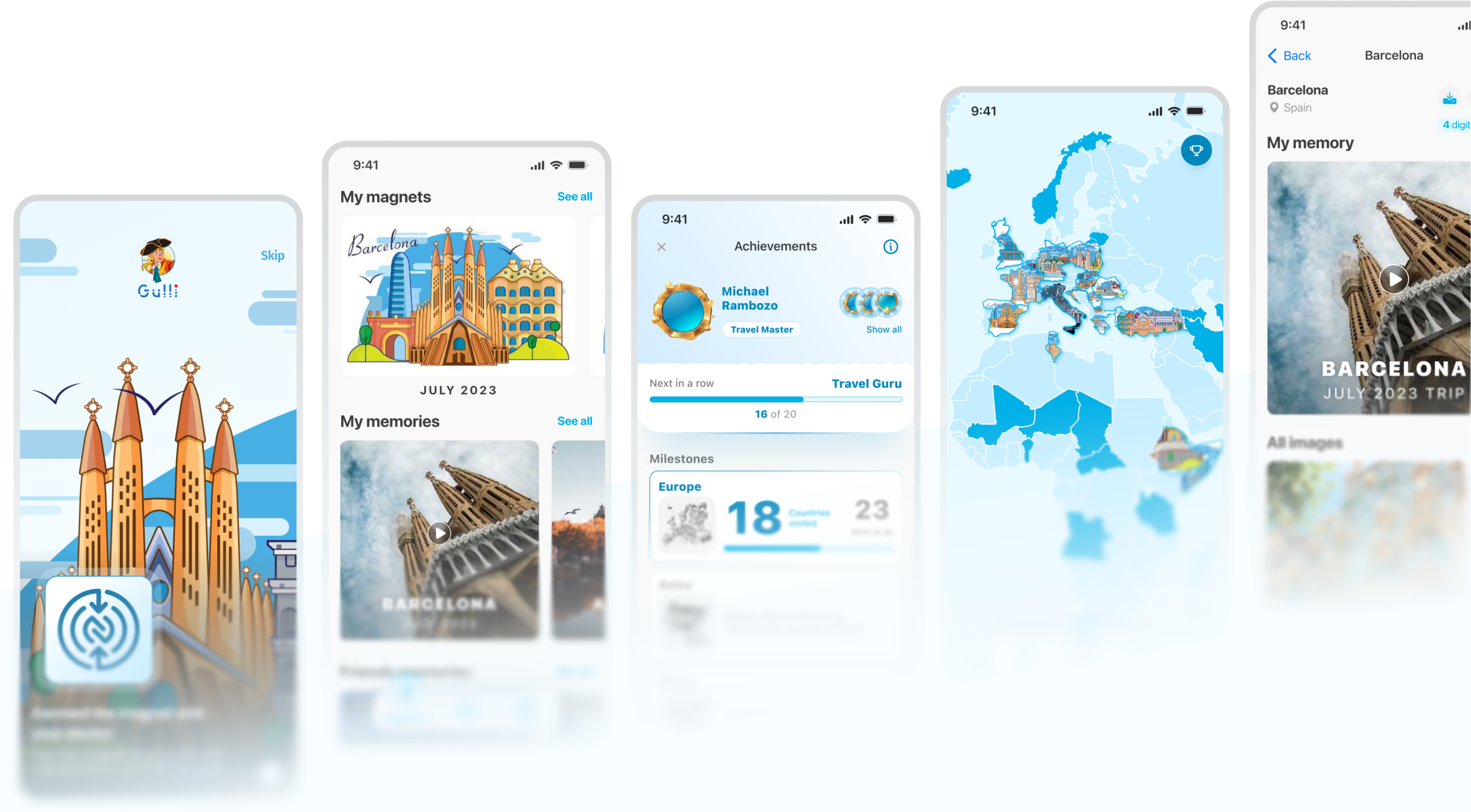
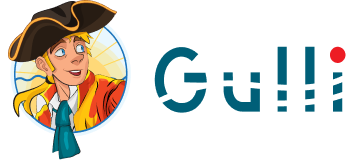
ABOUT THE PROJECT
Travel memories fade, but keepsakes don’t. Gulli Magnets were born to capture that feeling — NFC-powered collectibles that turn moments into living stories. I led the design end-to-end — from creating over 30 illustrated cities and building the brand identity to designing onboarding flows, gamification elements, and the Admin SaaS platform that powers it all. My role was to shape both the emotional side for travelers and families, and the functional side for hotels and admins.
Role
Lead UX/UI Designer
Scope of work
Illustrations
Visual Design
Packaging
Prototyping
Research
Client
Gulli Magnets
Type
iOS & Android Apps
Timeline
Q2 2022 - Q1 2025
The Spark
Where the spark began
The idea itself
When I joined Echo LTD (the parent company of Gulli Magnets), there was already an app in development under the codename Magic Memories. It had a basic logo and some initial color foundations, but there was no sign of illustrated magnets—or even the idea of magnets at all.
Then I heard the concept: digitizing travel memories and making them accessible with just a tap of the phone, ideally through an App Clip. That’s when something clicked. Around the same time, my CEO was already envisioning souvenirs with embedded NFC chips. The pieces began to fall into place.
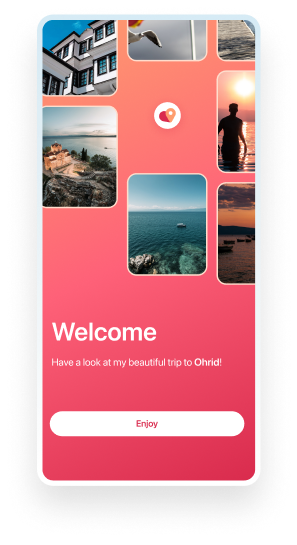
Before
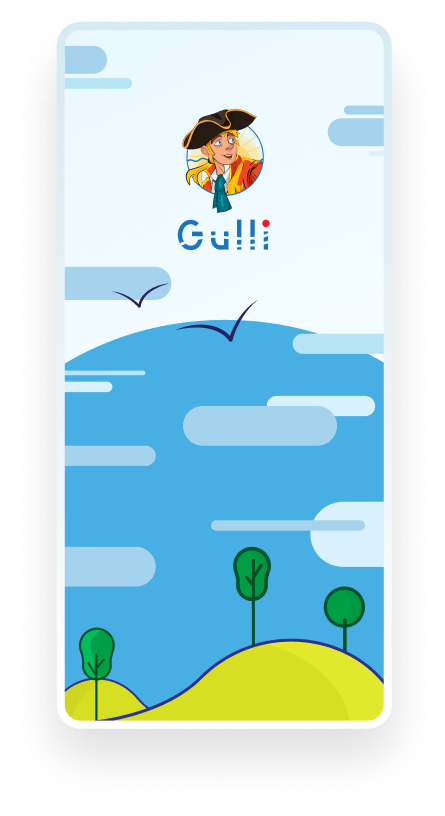
After
The magnets
From the beginning, I pushed for magnets without QR codes—I wanted the experience to feel seamless: just tap with your phone, and your memory is there.
The next challenge was shape and size. After rounds of informal testing with colleagues, I landed on ID card dimensions. Compact, familiar, and easy to slip into a wallet or pocket, they fit perfectly into a tourist’s journey home.
Draft illustration
Knowing myself, I was never going to be the guy who settled for basic, already-shot photos. I wanted to leave my mark—to create something meaningful and lasting. So, I switched into “drawing mode” once again, two years after my last NFT art show, and the first draft was born.
It featured Ohrid’s Plaosnik Church, vibrant colors, those now-signature birds in the background, a big sun with soft clouds, and little green hills in the foreground, all reflecting the core brand elements of Magic Memories at the time.
First ever illustration
Even though I thought it was just the first draft, it turned out that the Ohrid illustration became the first official version of our magnets. After that came Sydney, then Rome, Barcelona, Amsterdam and Skopje—and just like that, the Gulli Magnets concept was born. Well, not quite, the name wasn’t settled yet.
First ever Gulli Magnets illustration
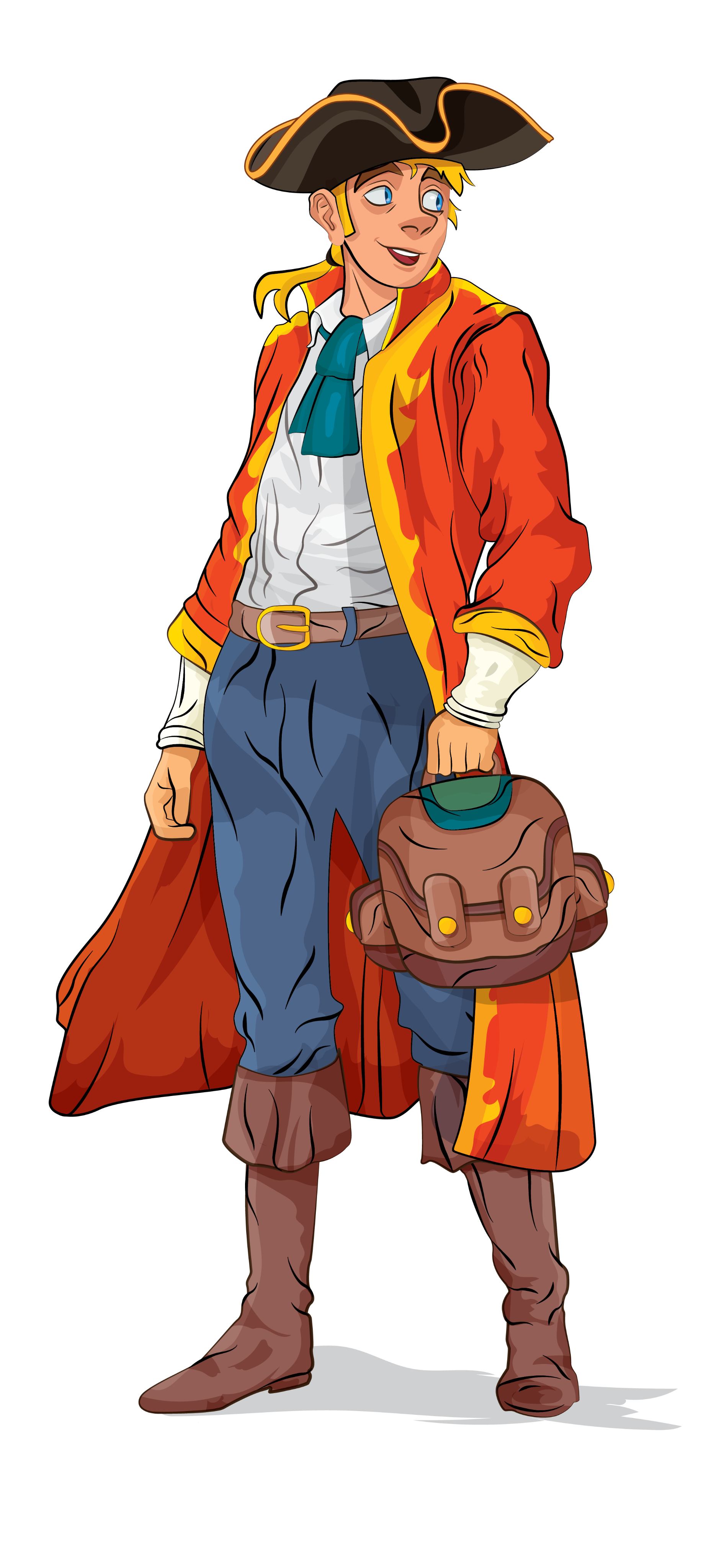
The name/
The logo/
The branding
Naming the Vision, Shaping the Brand
So, cool, we already had the app built (early beta phase), but we needed a new name.
Now, we had stories from our trips stored in fridge magnets so tiny they could fit in our pockets or wallets.
Well, Gulliver’s Travels, the book, was all about a doctor’s voyages to Lilliput and Brobdingnag. That’s when it clicked! Gulli Magnets was the perfect name for an app that blends travel, exploration, and curiosity about the world!
The initial pinkish color was immediately replaced with a bluish tone, representing the seas and the Earth itself, complementary colors for travel and a life of wanderlust.
As I started to think more about design system and building it, at least basic foundations in terms of colors, typeface and components, I was jugling between creating the logo which will be gold starting point for our brand identity.
After all the draft logos were done, I realized it would be even more awesome if Gulli were a character for his future adventures.
He could fly, talk to horses, and explore bizarre worlds, just like in the book. So, the final logo was created, along with Gulli with his suitcase, ready to explore and enjoy life!
Draft logo versions of Gulli
The design system
The glue behind the Gulli look
While shaping Gulli’s branding, colors, and identity, I also built a design system designed to scale, both for future designers working alongside me, and for every developer that’s ever been part of our team.
I’ll be honest, I’ve updated it many times. As Figma rolled out new features like variables, tokens, advanced prototyping, and conditionals, I kept refining the system to stay current and usable.
Colors and typography were fully defined, with local variables, booleans, numbers, and text strings clearly organized, making handoff to developers smoother and more reliable. I’ve used t-shirt sizing for spacing and sizing consistency, and every component came with usage guidelines and notes for devs.
I built it with the future in mind, to support growing complexity and evolving features. Because without a strong design system early on, we risk building blindly. And eventually, everything starts to fall apart.
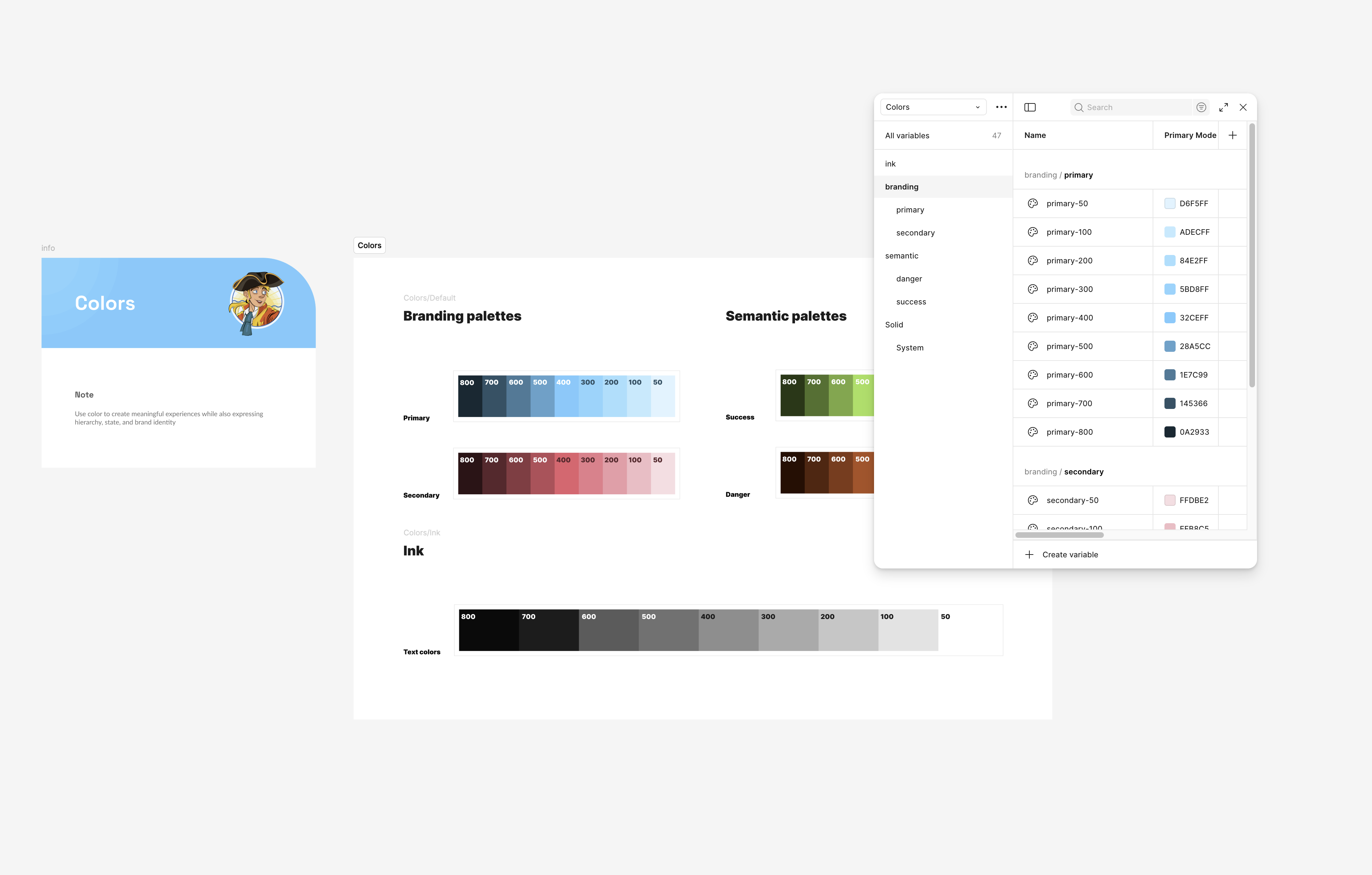
It’s been an absolute pleasure bringing your vision for Gulli to life as a real iOS app. Your designs were full of heart and thoughtful detail, and it was truly rewarding to help turn them into reality.
Nenad Ljubik
iOS developer @Gulli Magnets
As someone who's tested a lot of early products, Gulli stood out. The interface was stable, responsive, and clearly built on a well-structured design system. You can tell the designer thought about both user experience and developer implementation.
Igor Ilievski
QA tester @Echo LTD
User personas
Meet our travelers
After gathering the user data, the next step was creating user personas. Three to five is ideal, so I decided to stick with three personas for Gulli Magnets.
They include an freelance illustrator, accountant, and a UX designer, each with different needs, frustrations, and daily device usage habits.
Each persona had distinct needs, frustrations, and device habits—but together, they gave us a clear direction: build something memorable, effortless, and deeply personal.
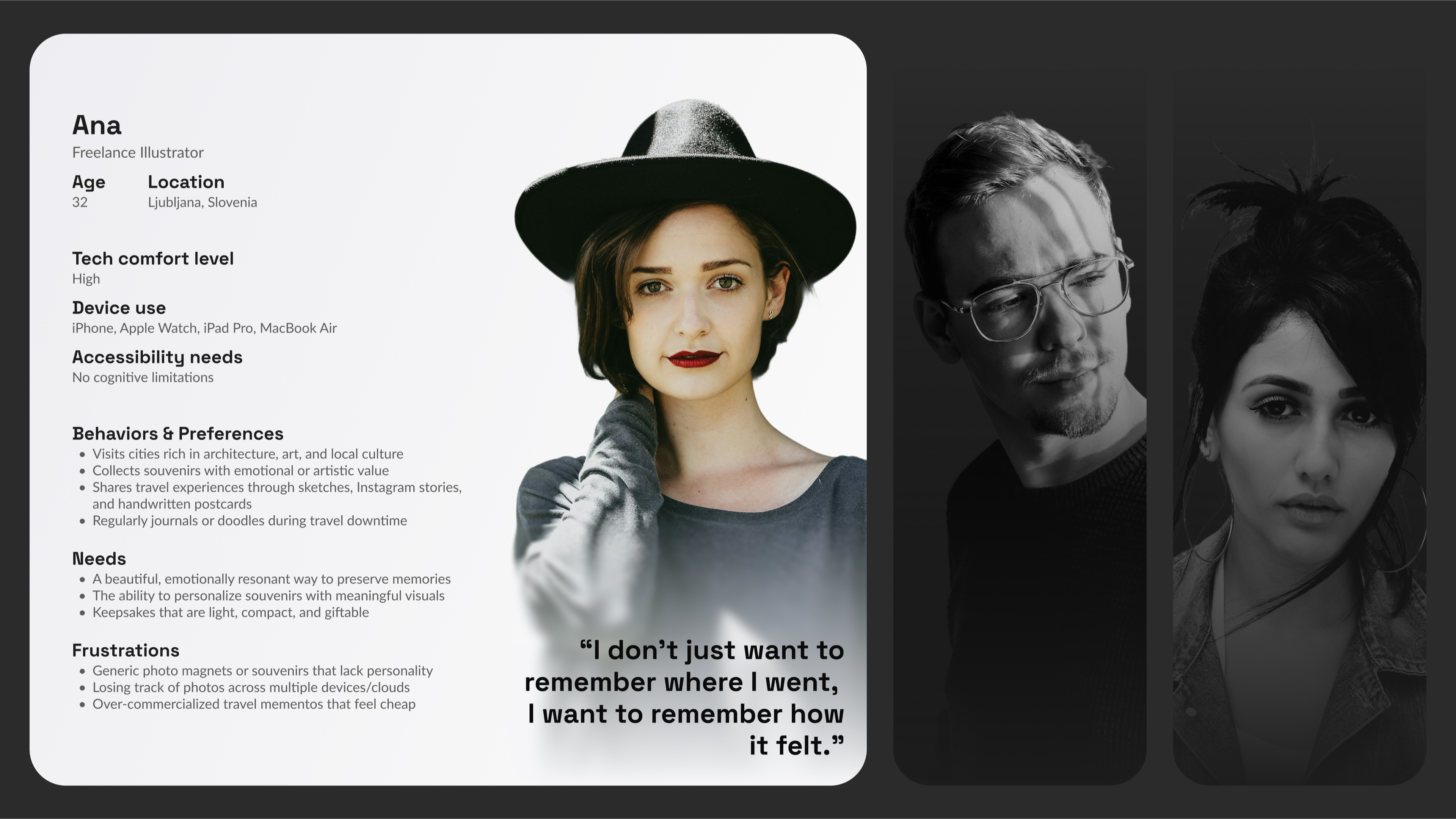
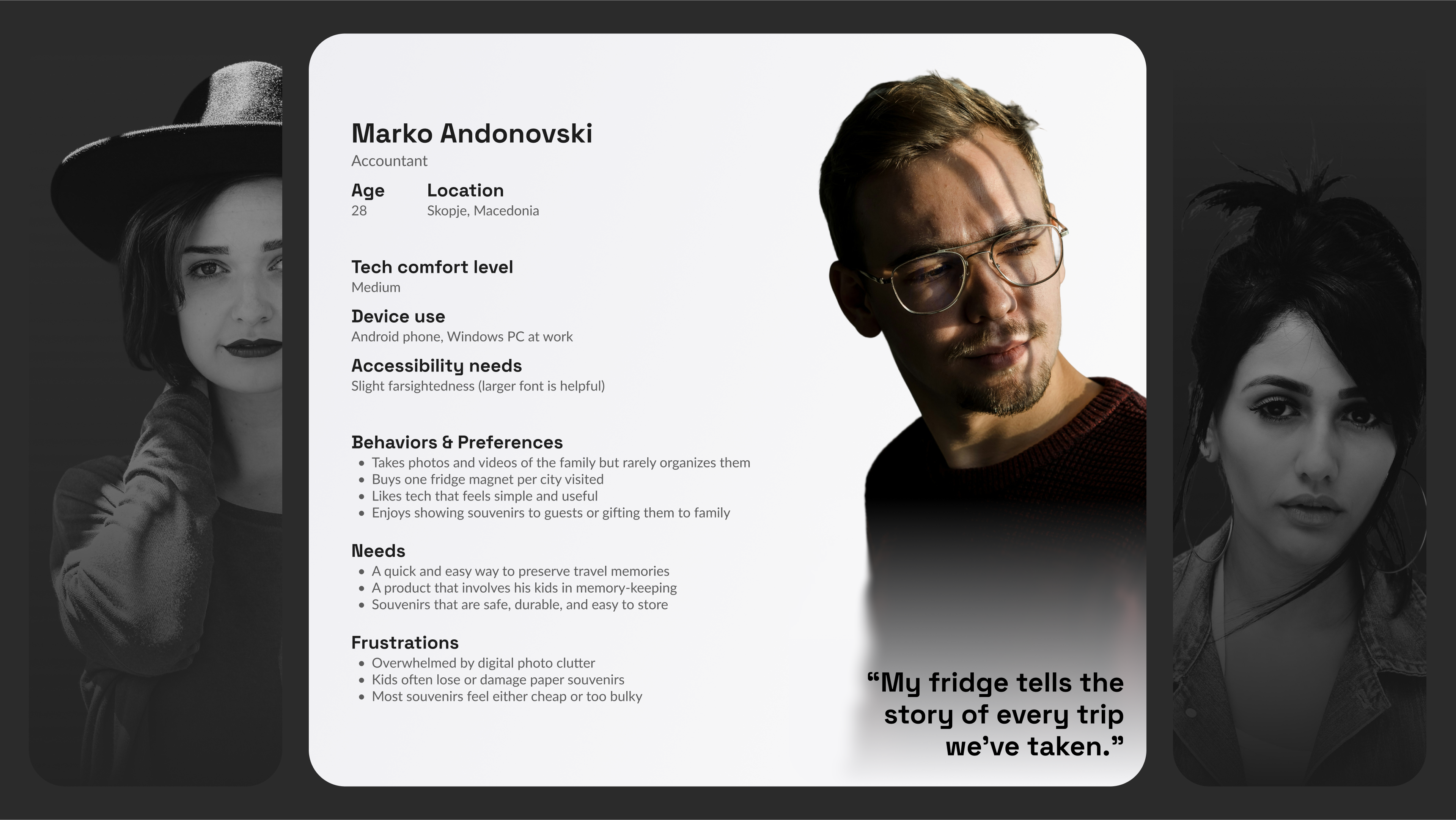
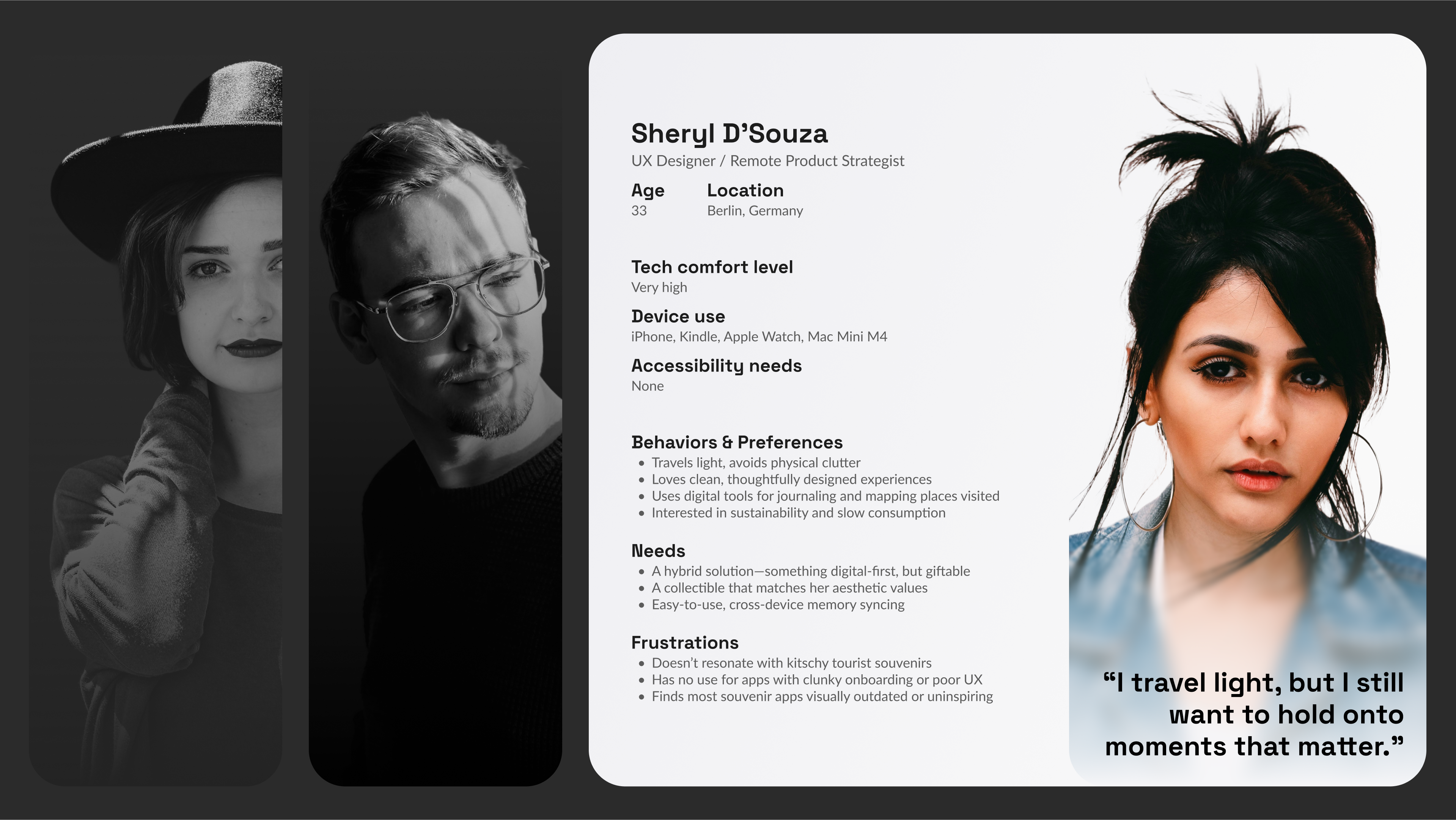
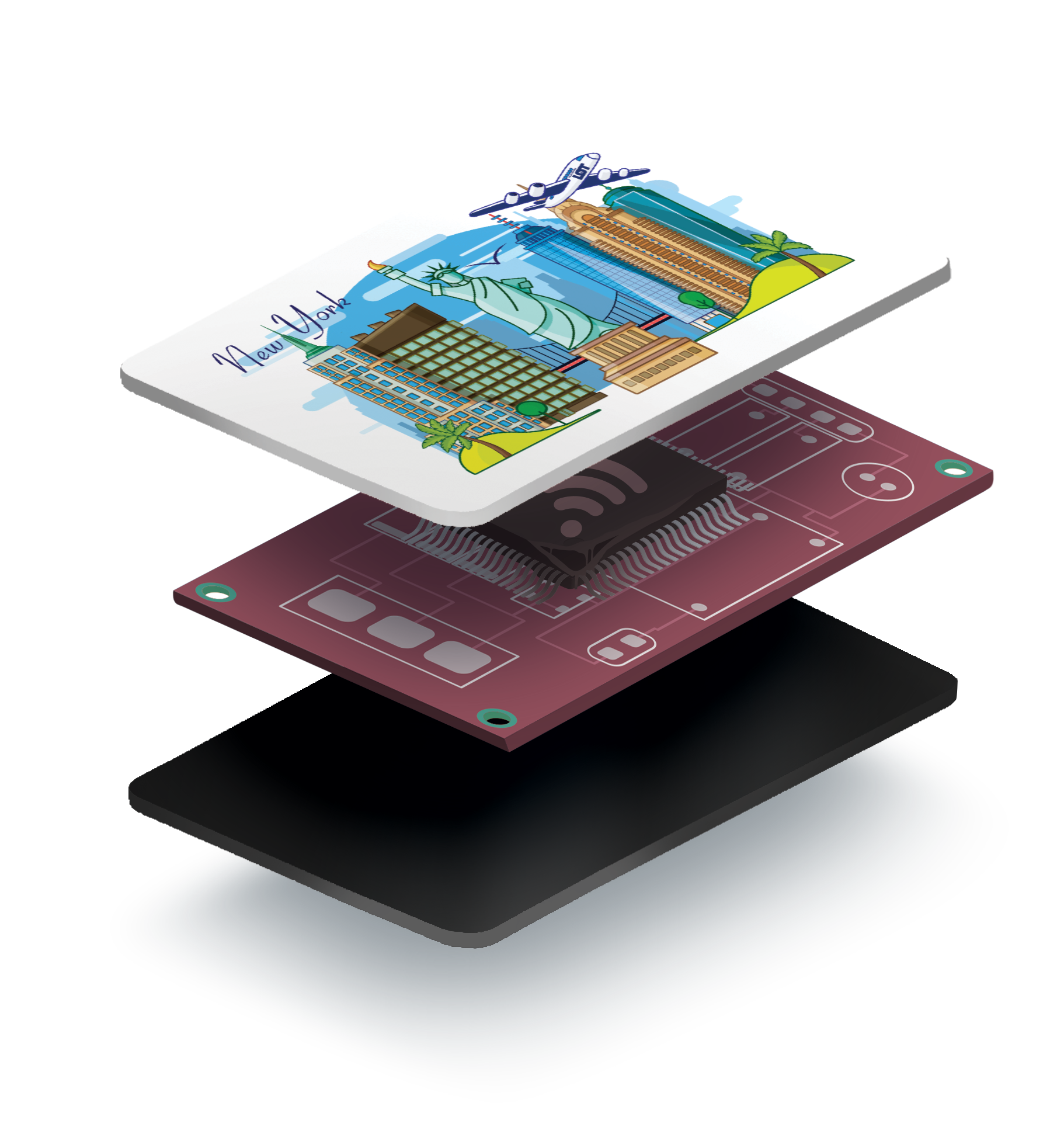
Main illustration
NFC chip
The magnet
Product
info
Dimensions
85.5 mm x 54 mm
Building
something unique
Not just another souvenir
I set out to design more than just a better magnet—I wanted to create a keepsake that people would interact with again and again.
One that blended art, storytelling, and seamless tech in a way no other souvenir had done before. The result was Gulli Magnets—a product that doesn’t just hang on your fridge, but unlocks memories, sparks conversations, and keeps the spirit of travel alive long after the trip ends.
Gulli Fridge Magnets
NFC-enabled, digital storage
Store photos, share them as gift
Tap with a phone to access content
Update photos and content anytime
Scratch-resistant, long-lasting
No need for reprinting, reusable
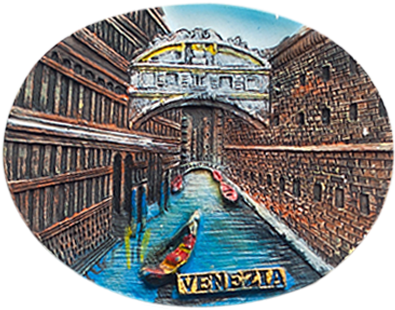
Classic Fridge Magnets
Static, no tech features
Holds only printed images
Just for decoration
Permanent, no changes possible
Can fade, peel, or break over time
Often plastic-based, disposable
Visits
The first screen inside the full Gulli app is Visits: a dynamic map that visualizes every country the user has traveled to.
- At a glance, color highlights show where they’ve been.
- Zooming in reveals more detail—narrowing from countries to specific cities.
- For each location, users can see how many photos and stories are tied to it.
It transforms a static map into a living journal, letting users relive their journeys through place and memory, not just pins on a screen.
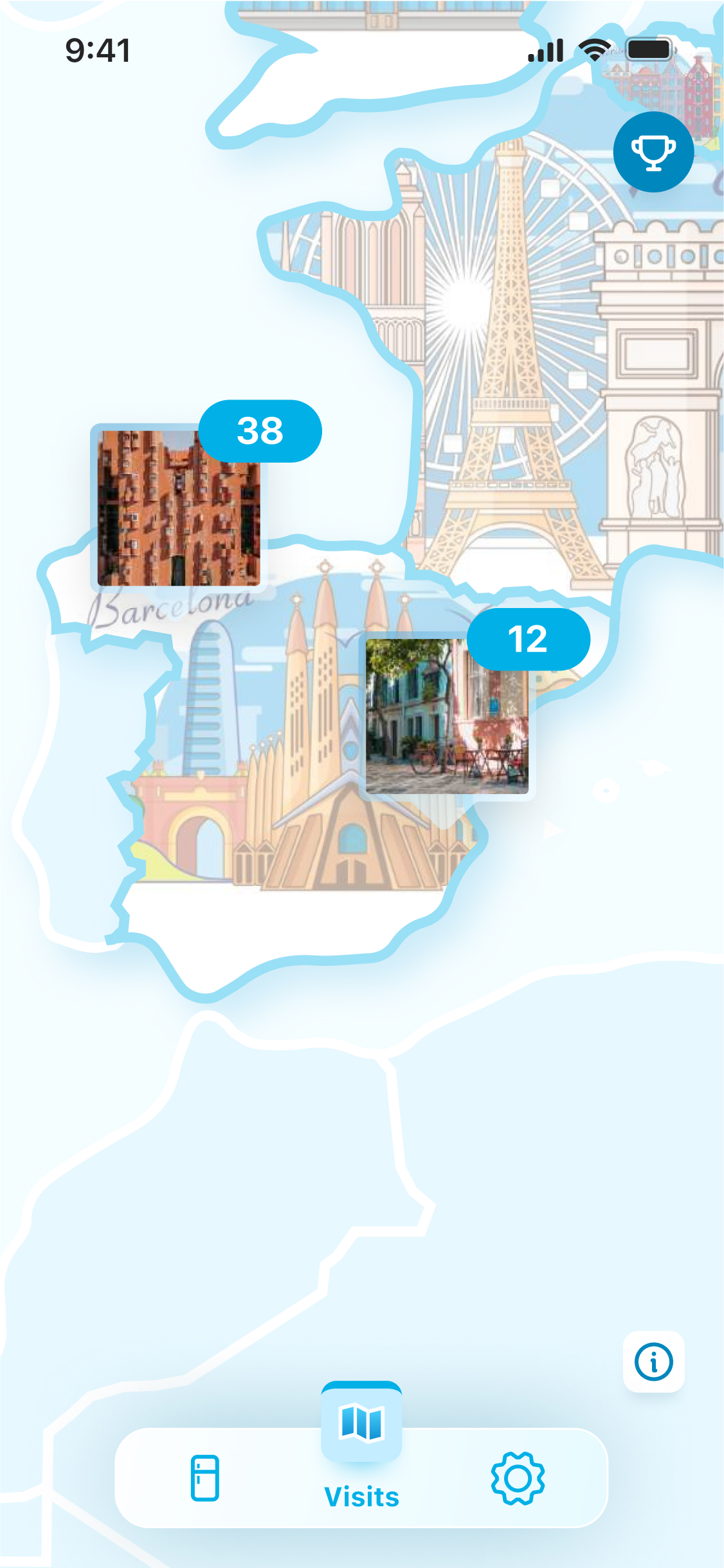
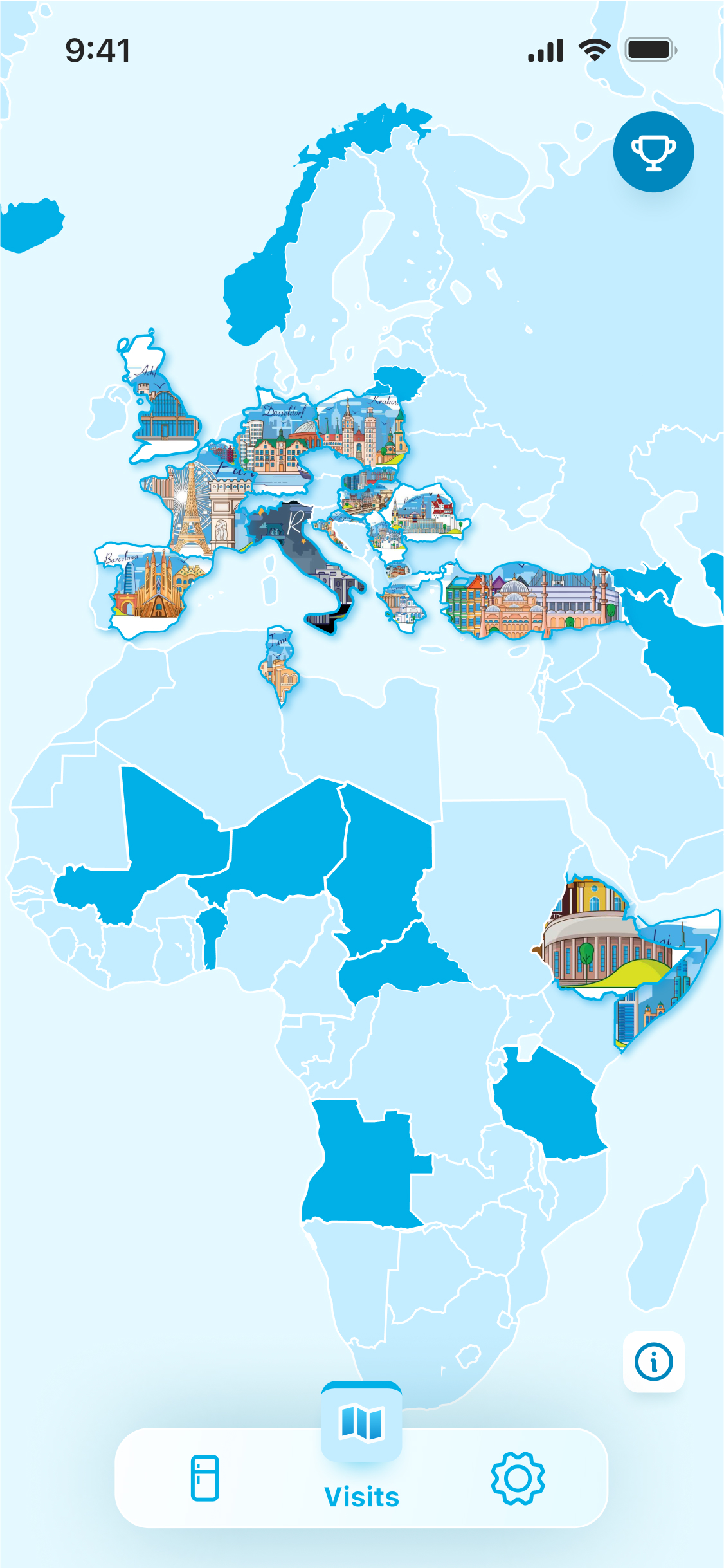
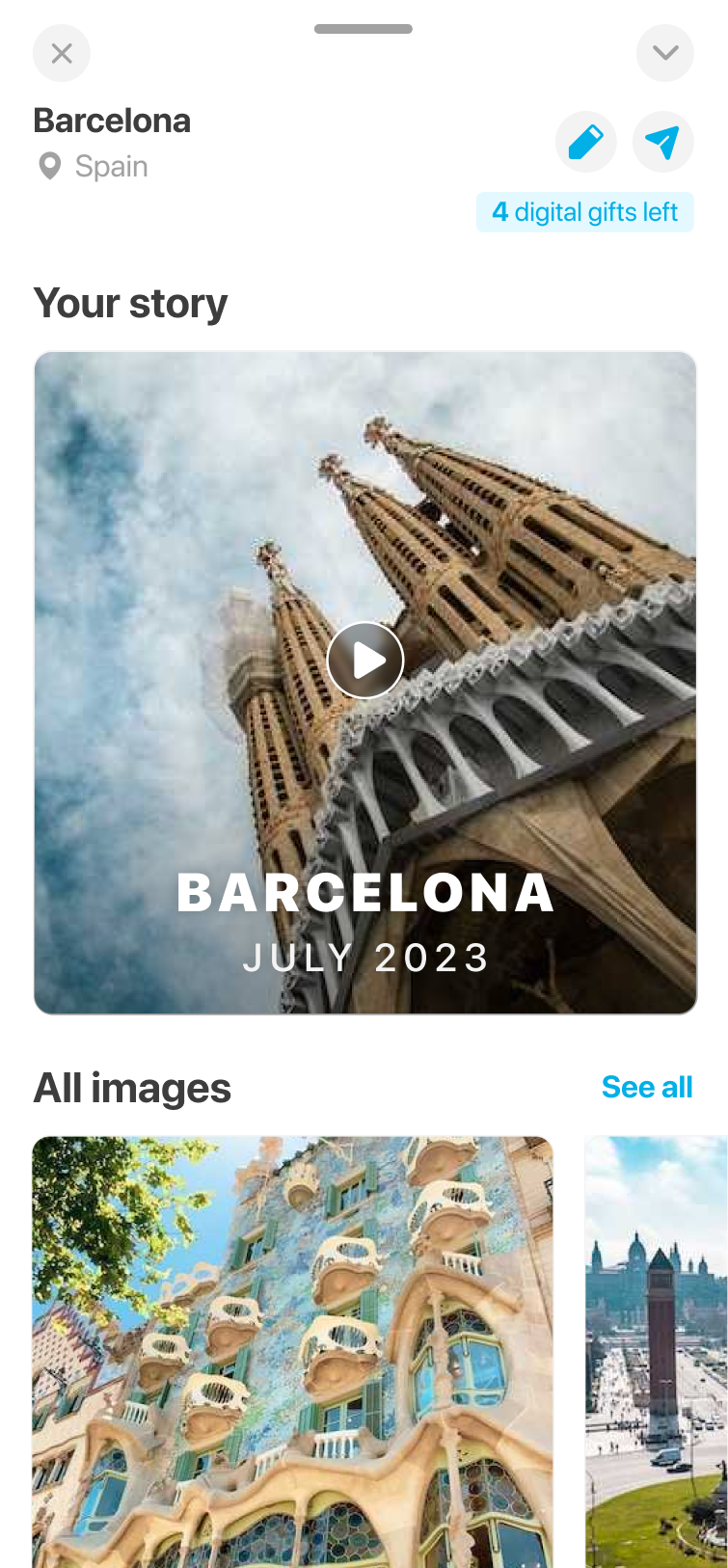
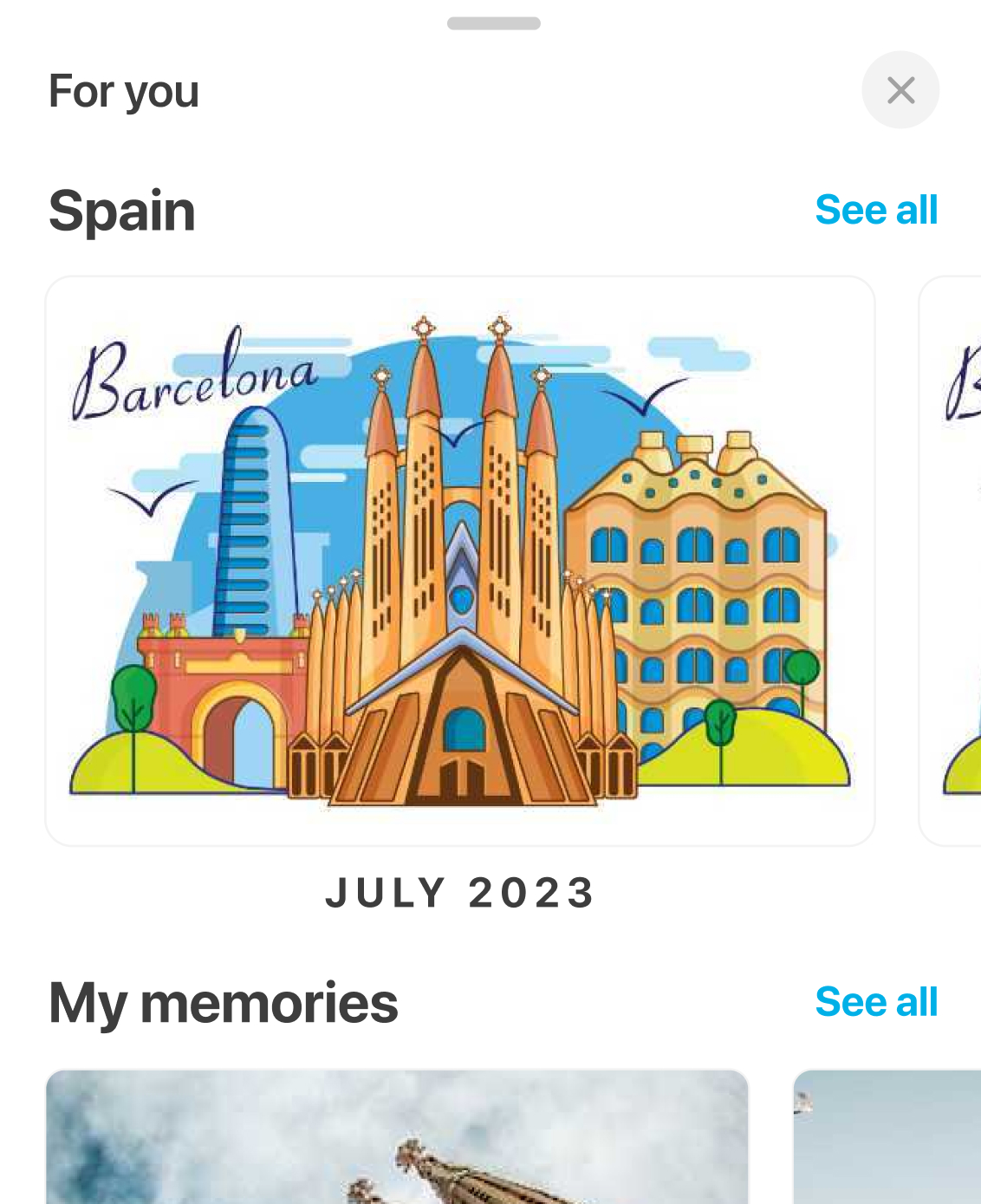
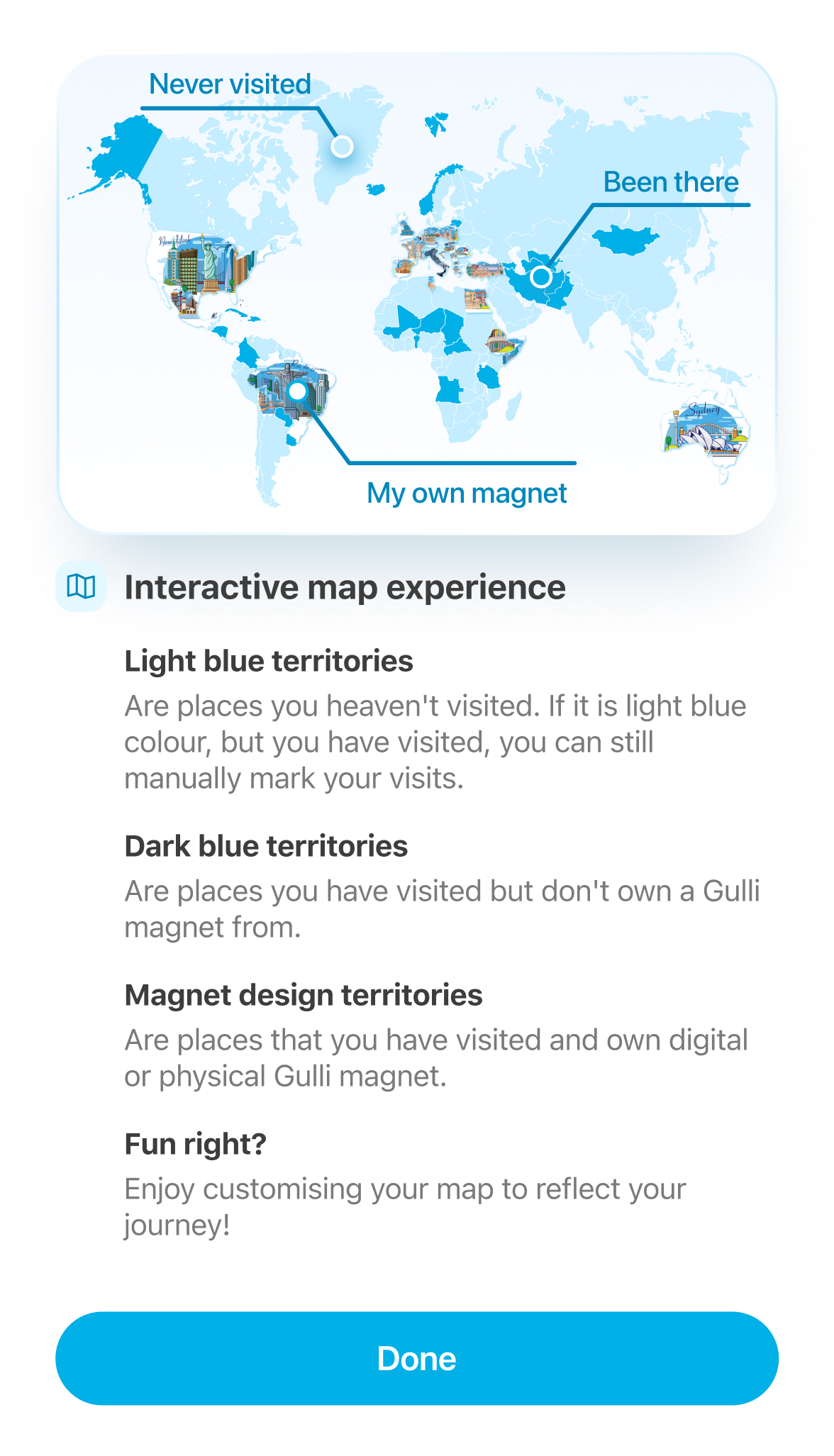
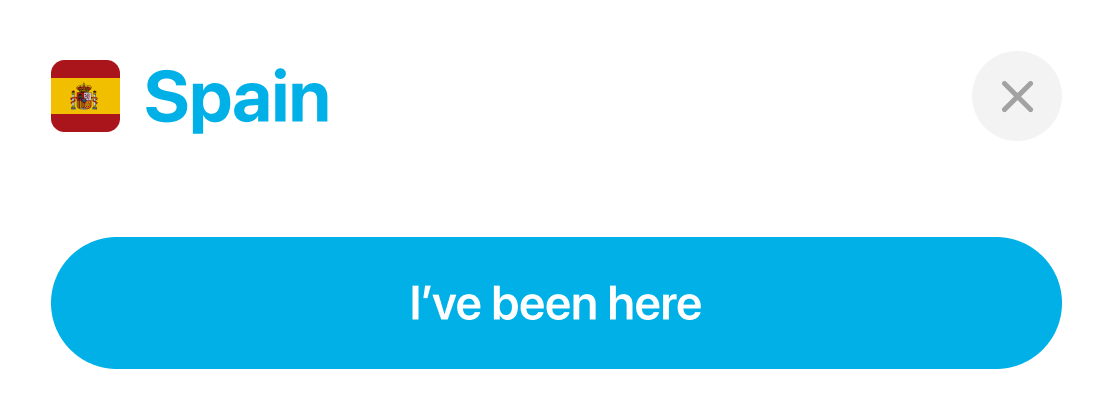
Gifts
Research showed us that 81% of users valued gifting, so we made it a core feature. The Gift Flow was designed to feel personal, celebratory, and easy:
- A dedicated flow with playful animations and a “Congrats” screen.
- Automatic story sharing that adds the memory to the recipient’s profile.
- Two ways to gift:
- Physical — order a duplicate magnet to share with friends or family.
- Digital — send the memory instantly from the app.
Instead of endlessly digging through photo folders or sending links, gifting turned memories into something tangible, meaningful, and delightful—for both the giver and receiver.

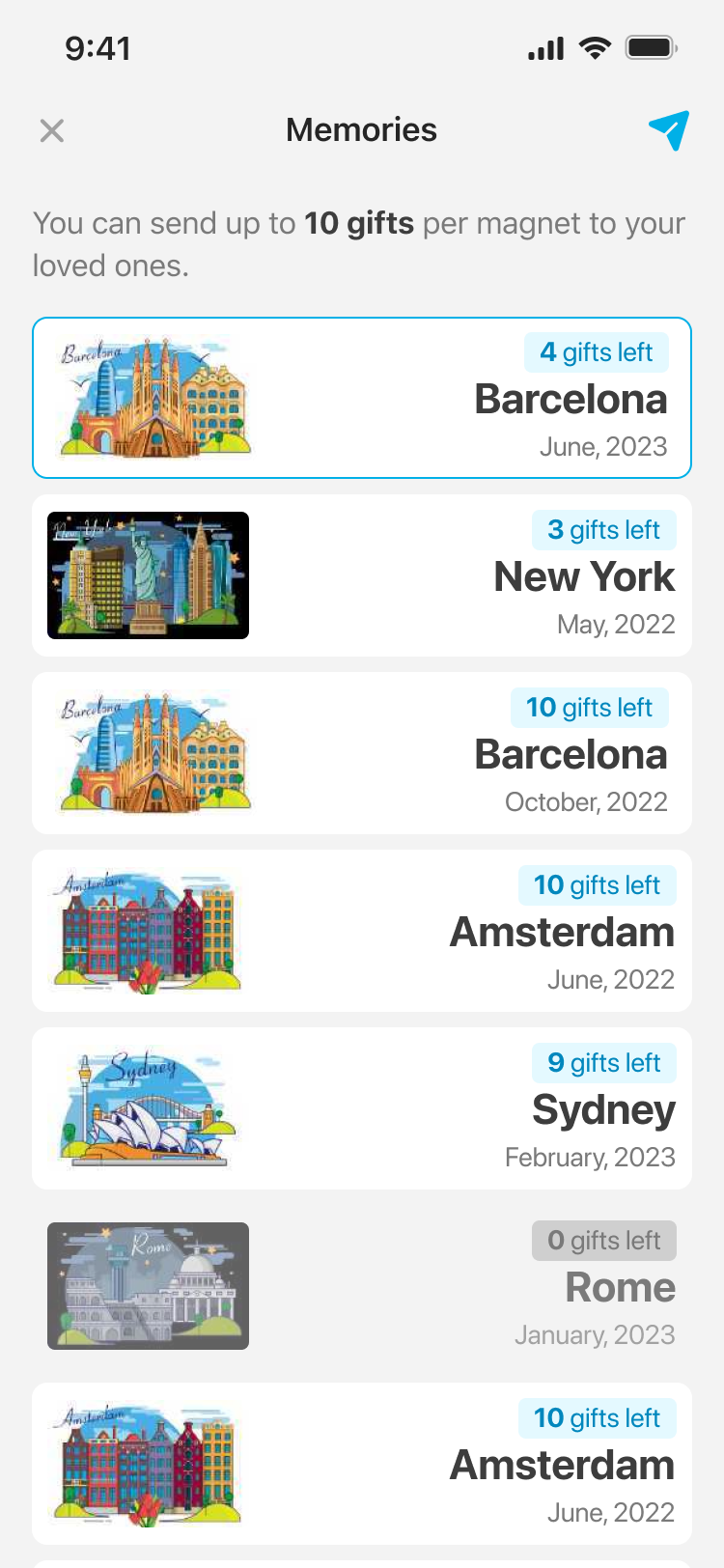
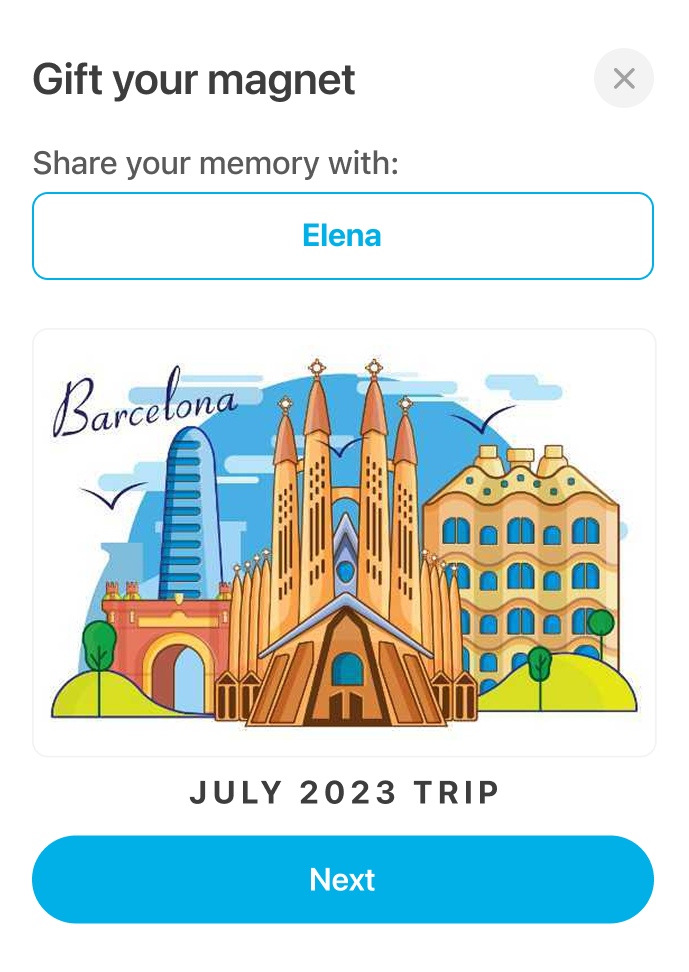
Gamification
Memories count. Literally!
73% of travelers said gamification would motivate them to engage more. We introduced milestone badges and a continent progress tracker to turn memory-collecting into an achievement system.
As someone who’s been a gamer almost my whole life, this was one of the features I was most excited about.
Sure, we had the world map, we had memories and pins, and users already knew how many countries they’d visited
so far.
So we thought, why not make that progress count? Why not create something that motivates users to travel more, collect more magnets, and share their adventures
with friends?
We introduced continents as major milestones—and each country within a continent adds to that progress.
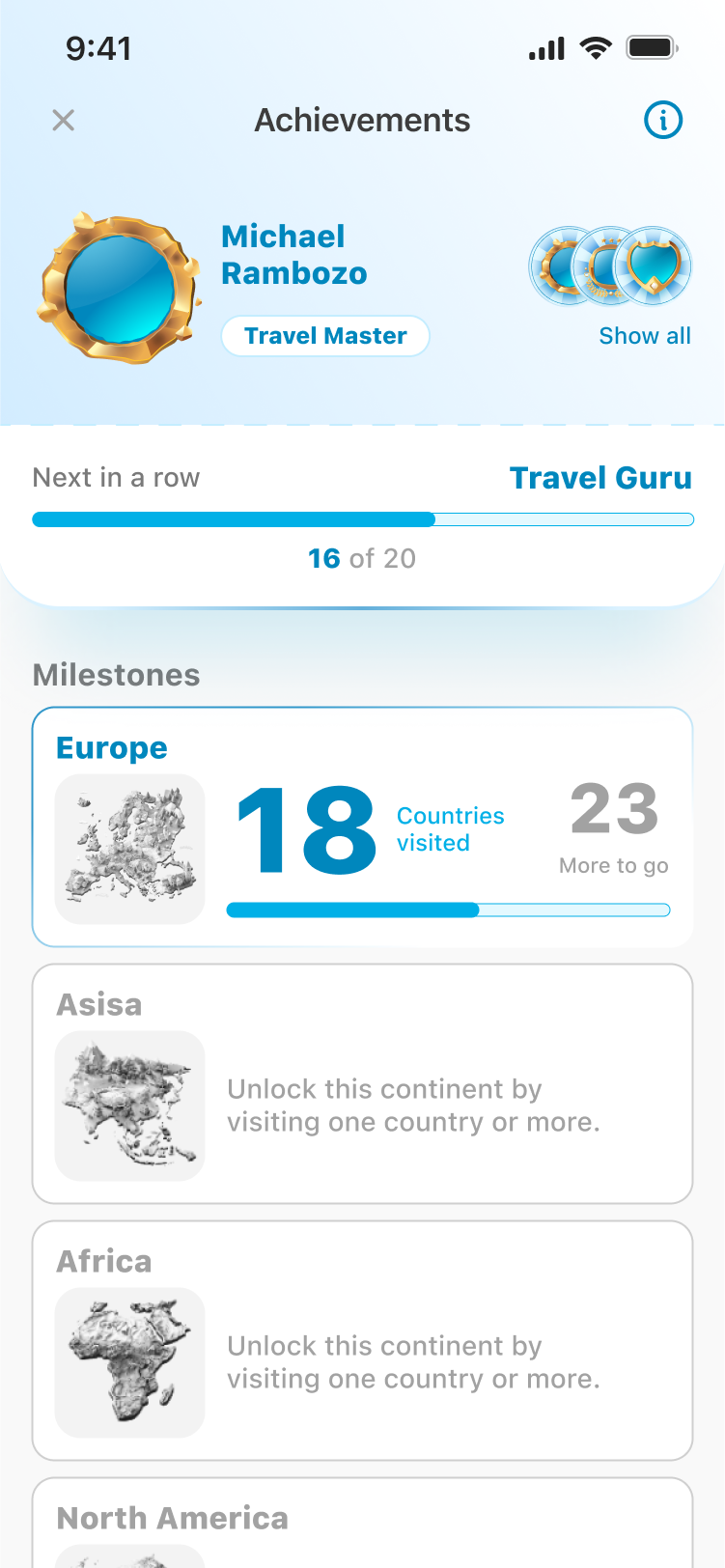
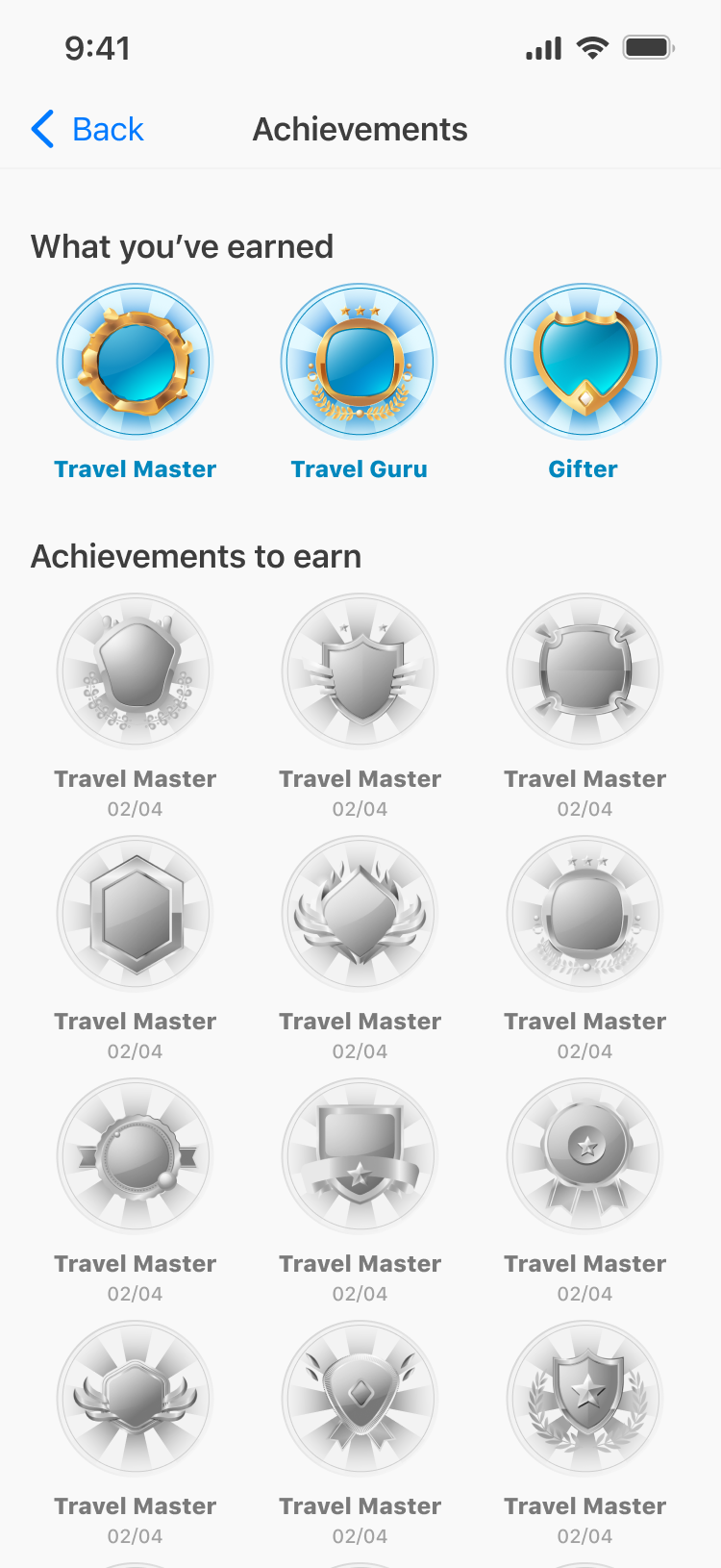
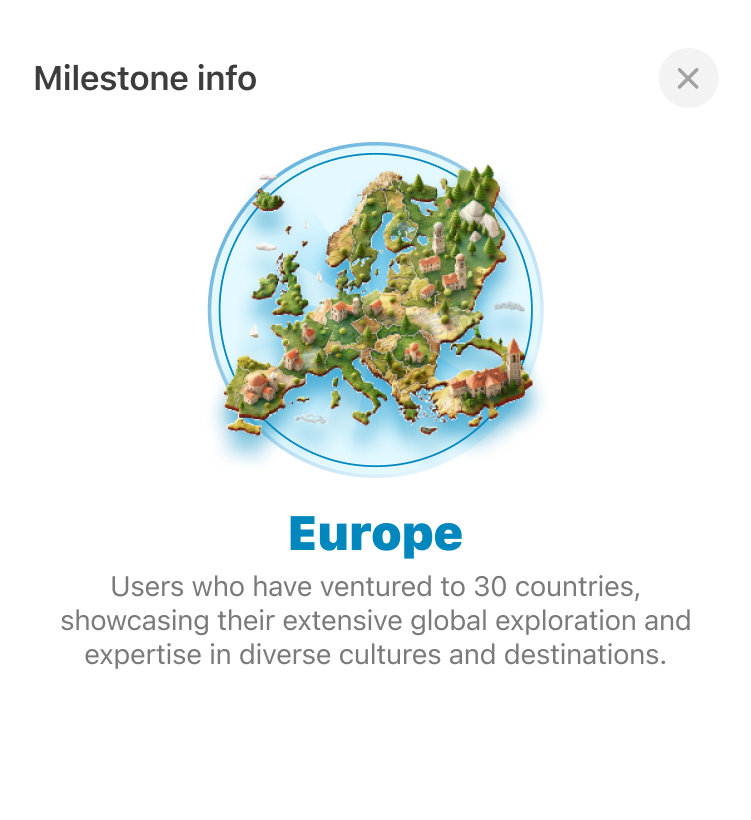
Together with the development team, we discussed whether leaderboards would be a good addition something for users who wanted to chase points and rankings.
But based on our user interviews, most people were looking for a more personal, journal-like way to track their achievements. So, we decided to focus on milestones and progress, rather than competition.
That said, we still added 50 collectible badges so users could proudly showcase where they’ve been and what they’ve experienced around the world.
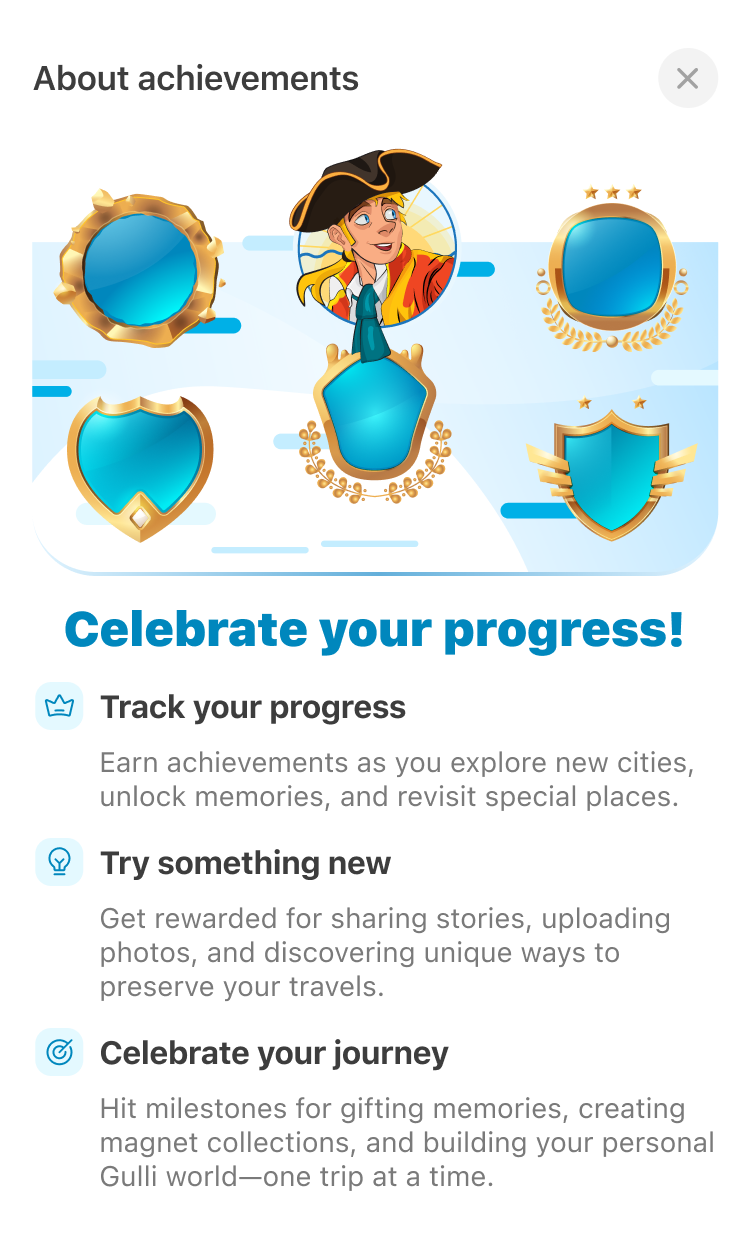
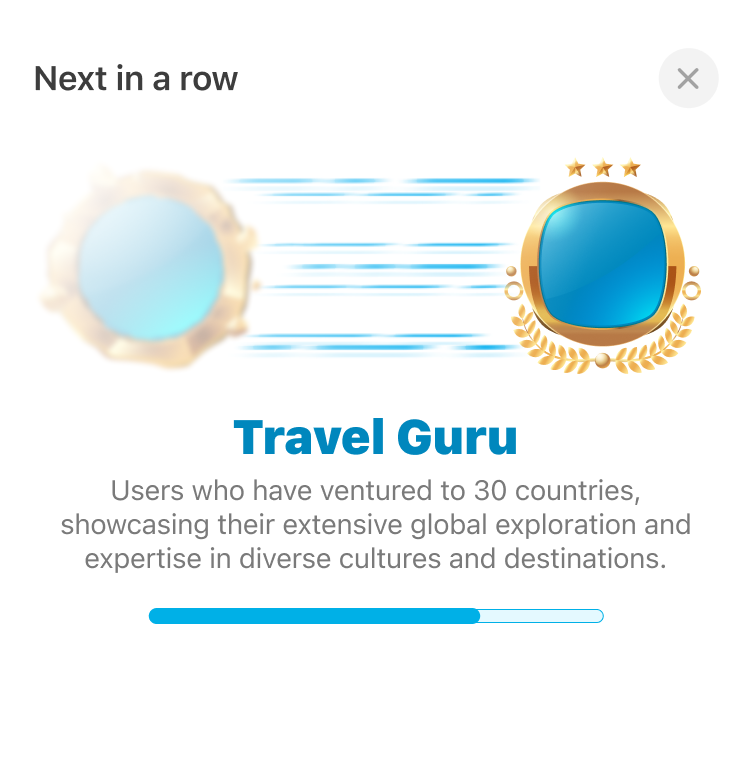
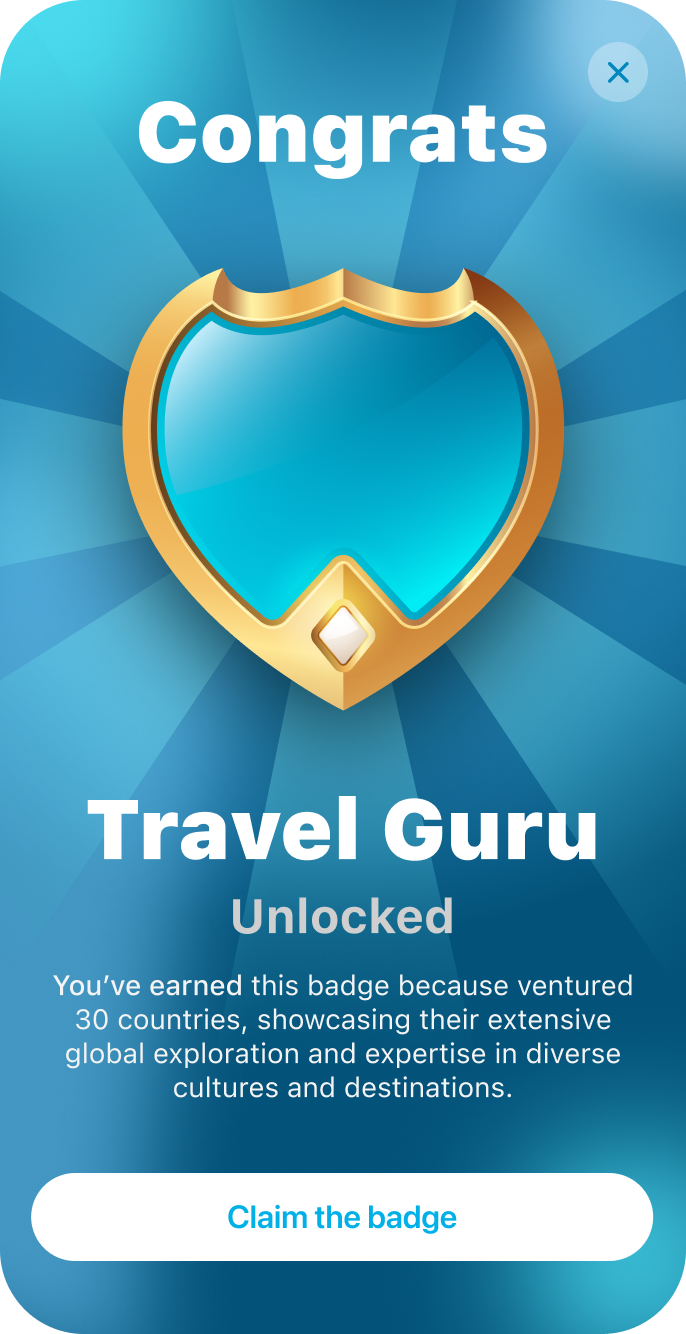
Pivot:
From Souvenirs
to Celebrations
A new direction, same destination
While Gulli started as a travel keepsake, we quickly realized its potential stretched far beyond tourism. Travel memories were powerful, but the same mechanics could create value in hospitality, events, and even family celebrations.
I designed an Admin flow that allowed “admin” users—such as hotels or event organizers—to upload photos. Instantly, all instances of their magnet could display these shared memories.
Hotels, yachts, and event businesses embraced this as a marketing solution. Soon, Gulli Magnets were being used not only for travel, but also for weddings, birthdays, and business trips—anywhere memories deserved to be celebrated.
Birthdays
Celebrate birthdays with personalized Gulli magnets—for everyone!
Occassions
Gulli magnets bring a personal touch to celebrations—ideal mementos!
Weddings
Gulli magnets add a personal touch to every wedding—perfect for guests!
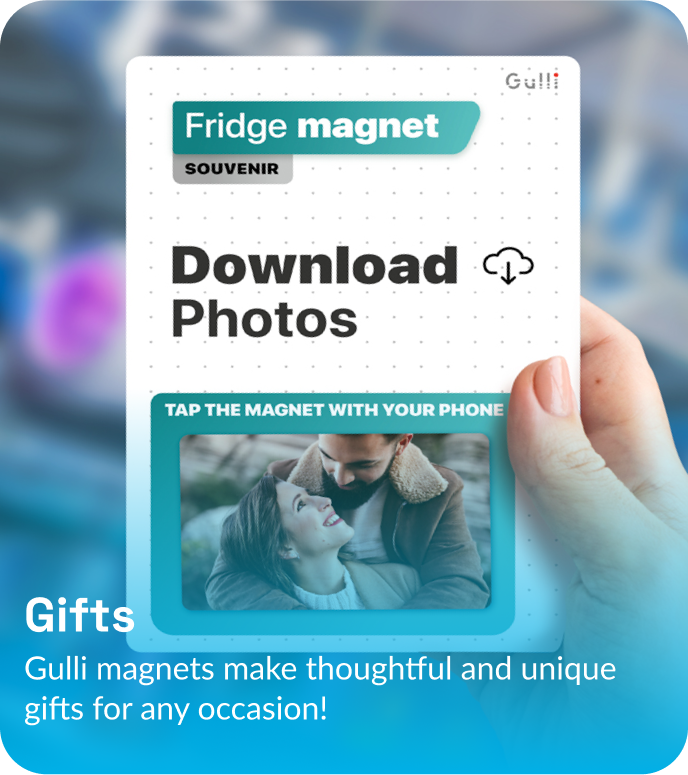
Personal branding
Boosts personal brand with custom Gulli magnets—unique and memorable!
Birthdays
Tap. Smile. Happy Birthday.
In Dubai, birthday culture includes “reversible gifts,” where families give something back to their guests. Gulli fit perfectly into this tradition.
Playgrounds and family venues quickly adopted it:
- Kids loved the playful, personalized magnets.
- Parents loved the effortless way to capture and share moments.
- Playgrounds were amazed by the added engagement and loyalty.
For this iteration, I designed a tailored onboarding flow, explaining the birthday-specific features. We also added:
- A dedicated promotional feed for events and activities.
- A voucher & discount system to reward families and drive repeat visits.
What started as a souvenir became a tool for joy, marketing, and community building.
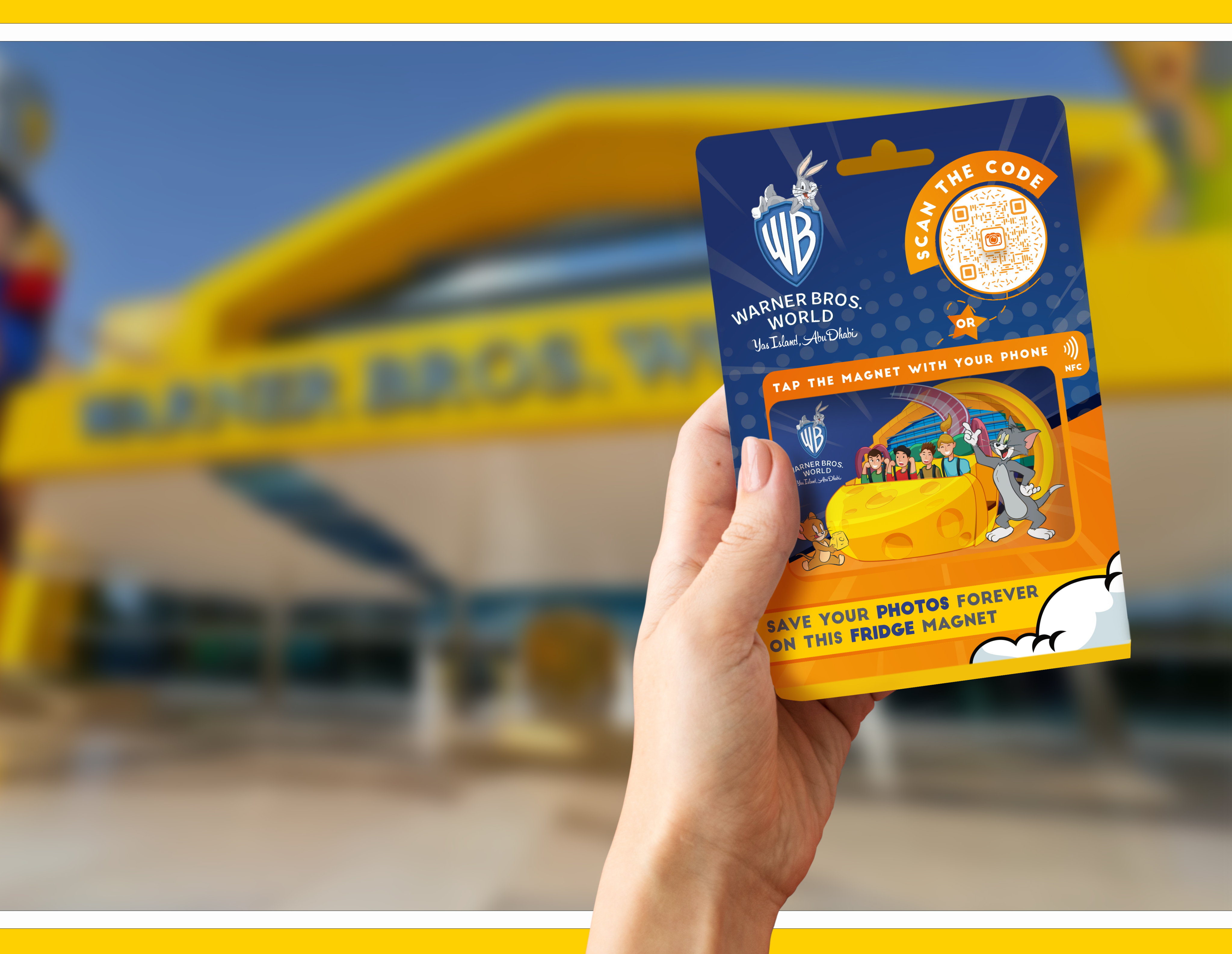
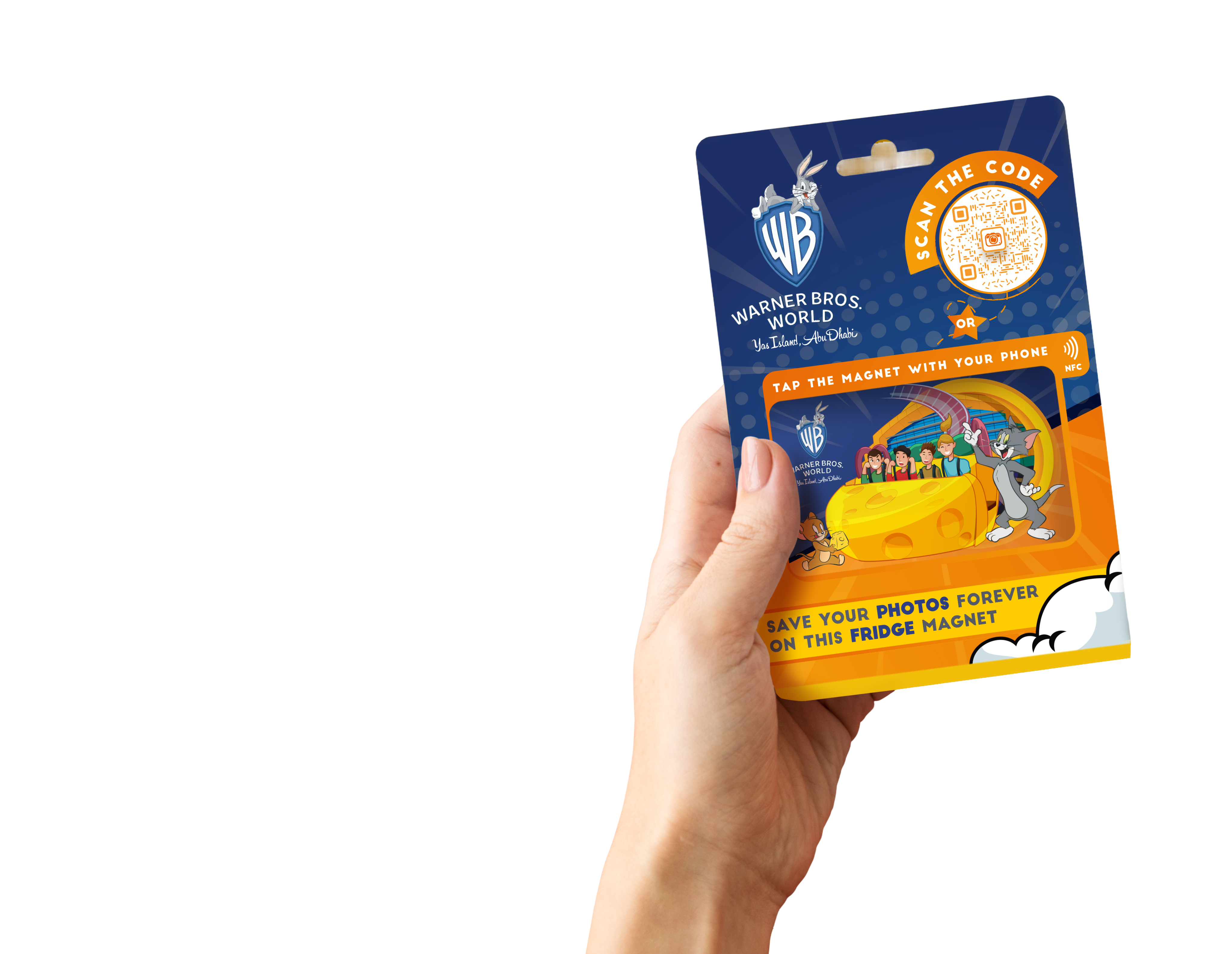
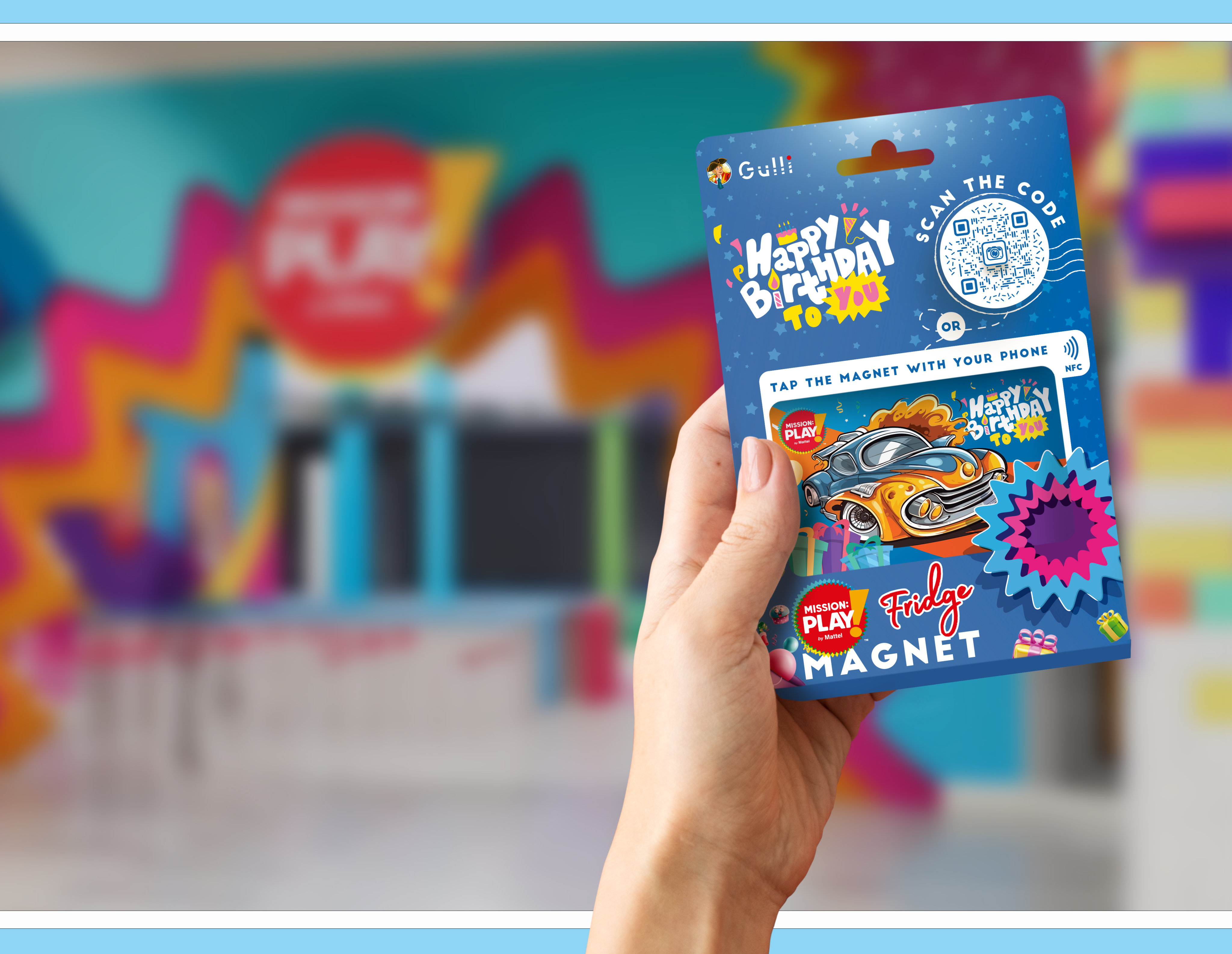
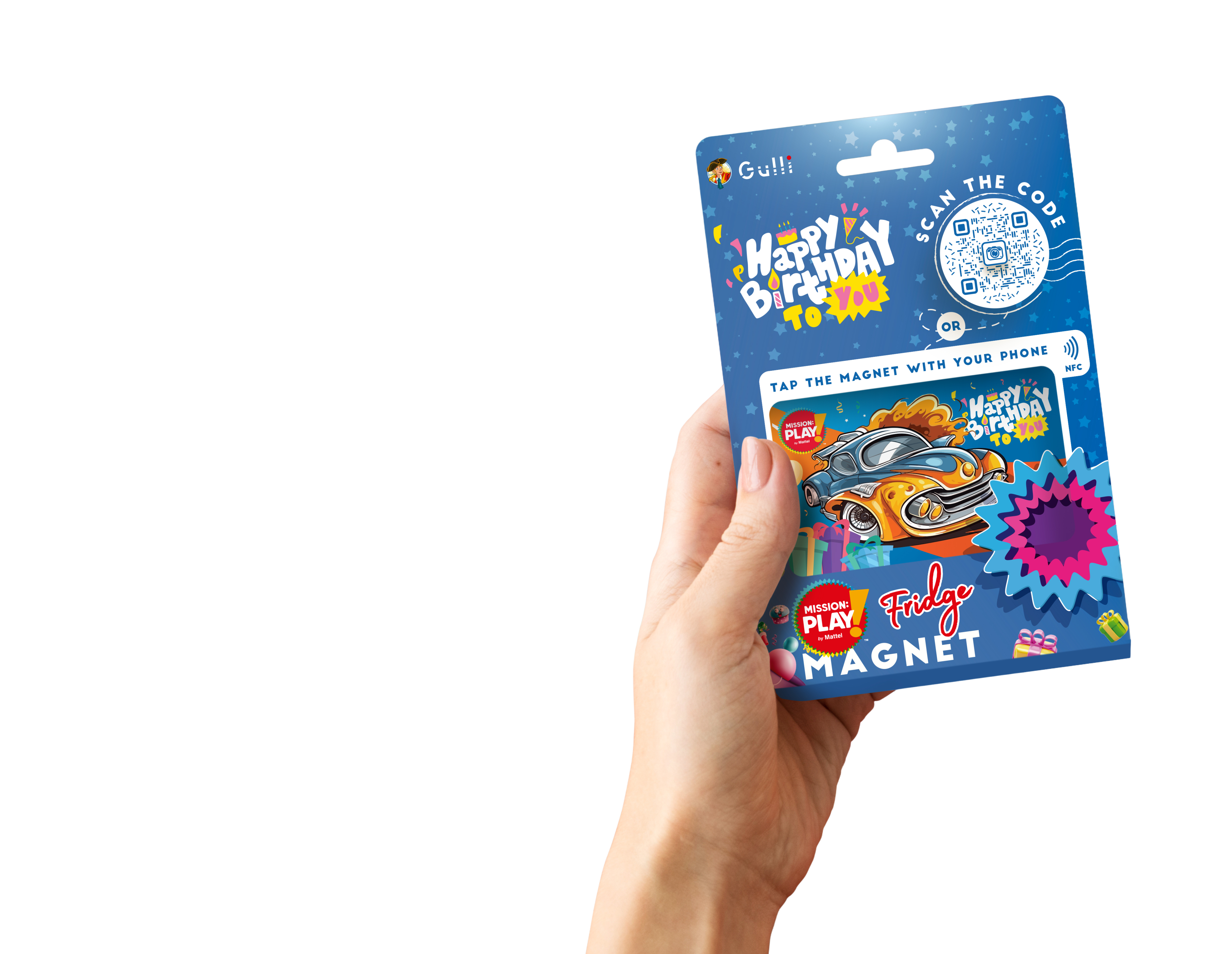
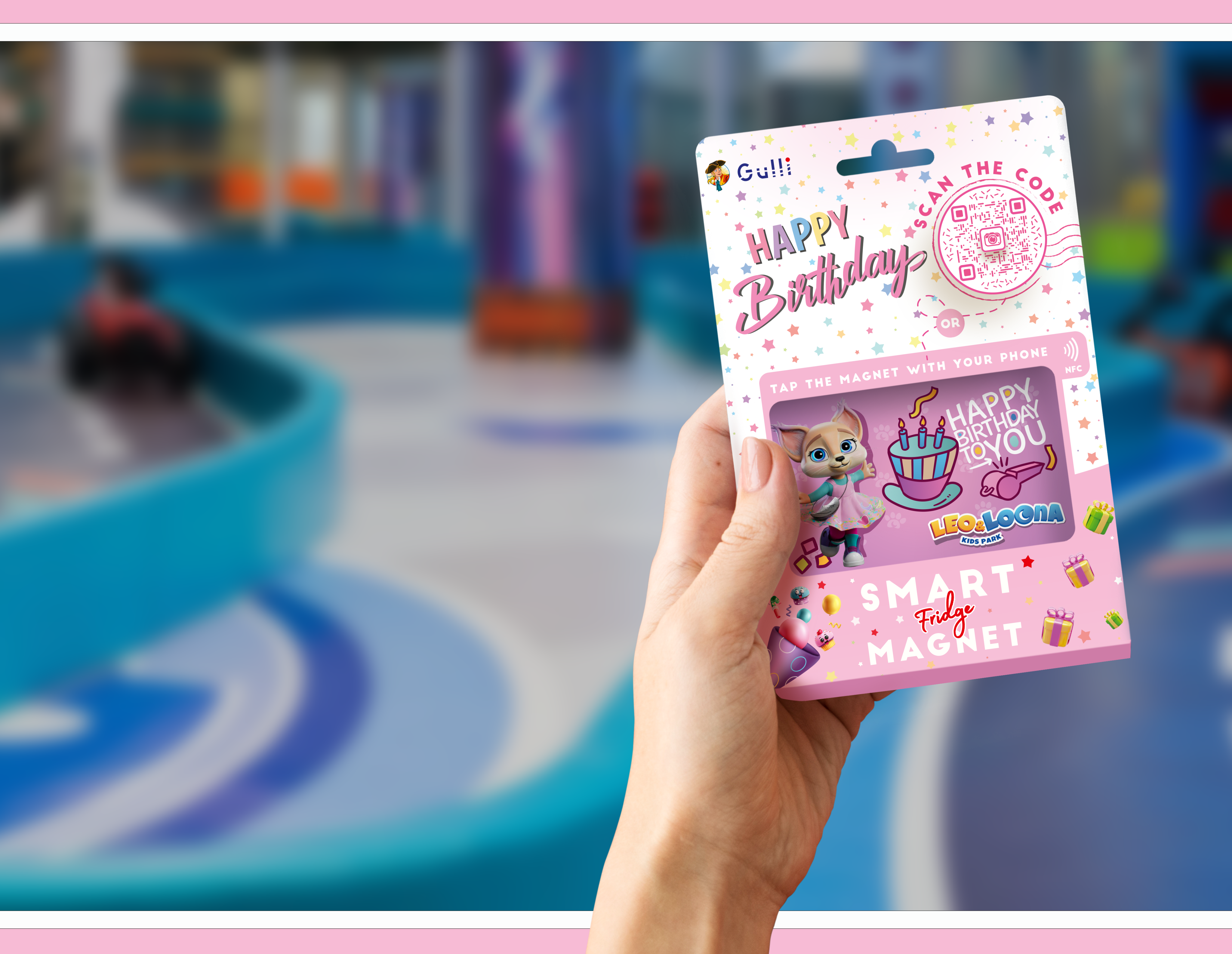
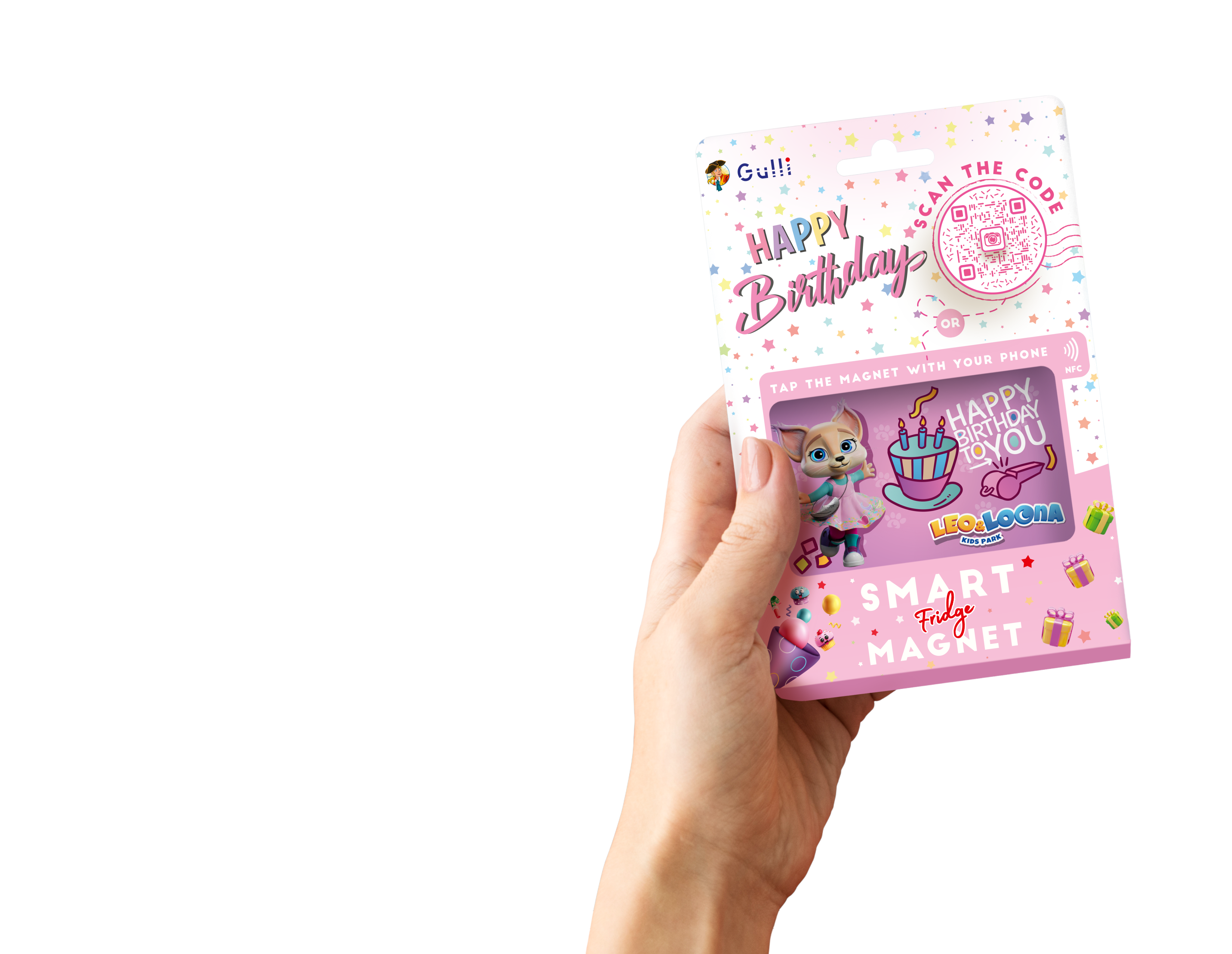
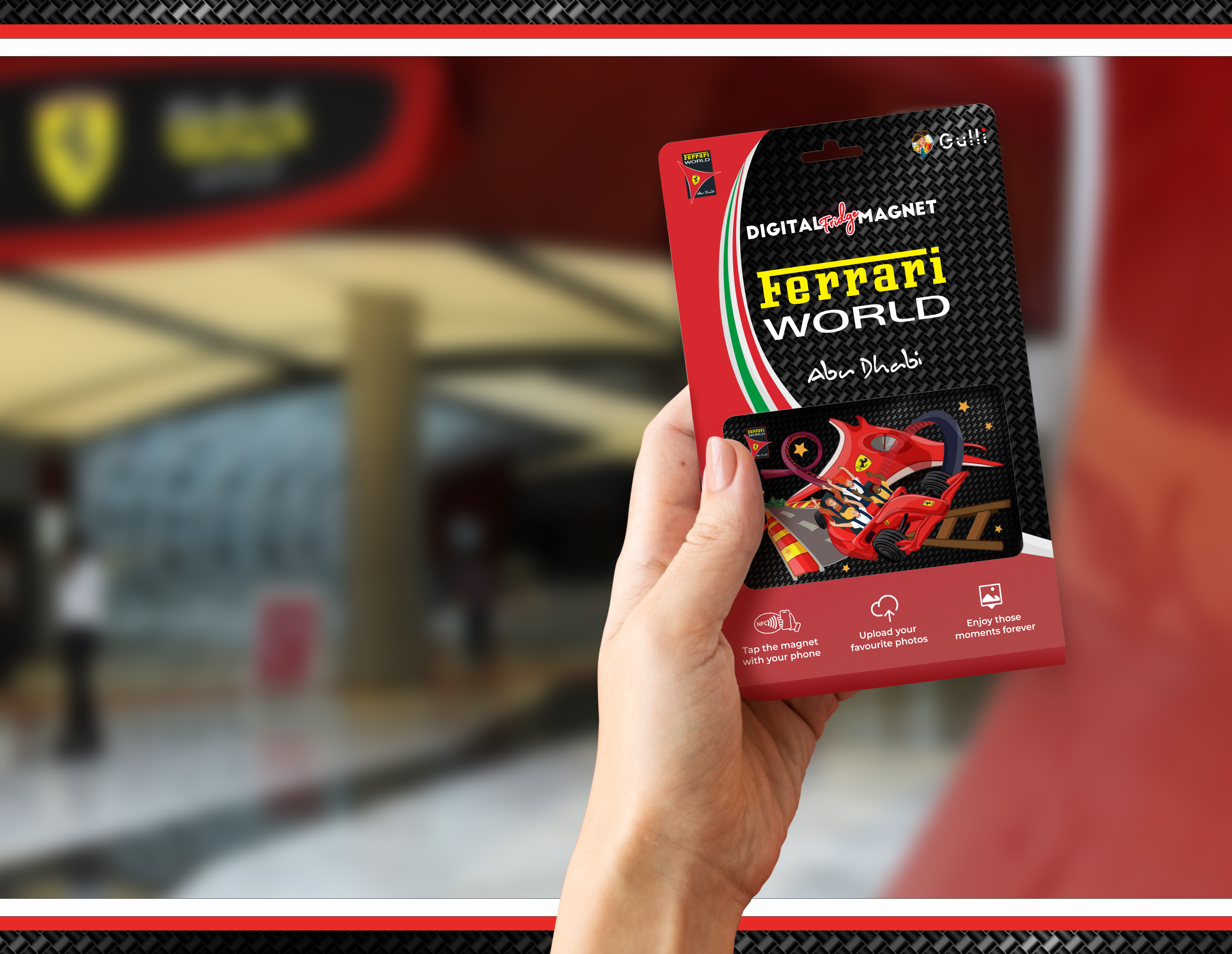
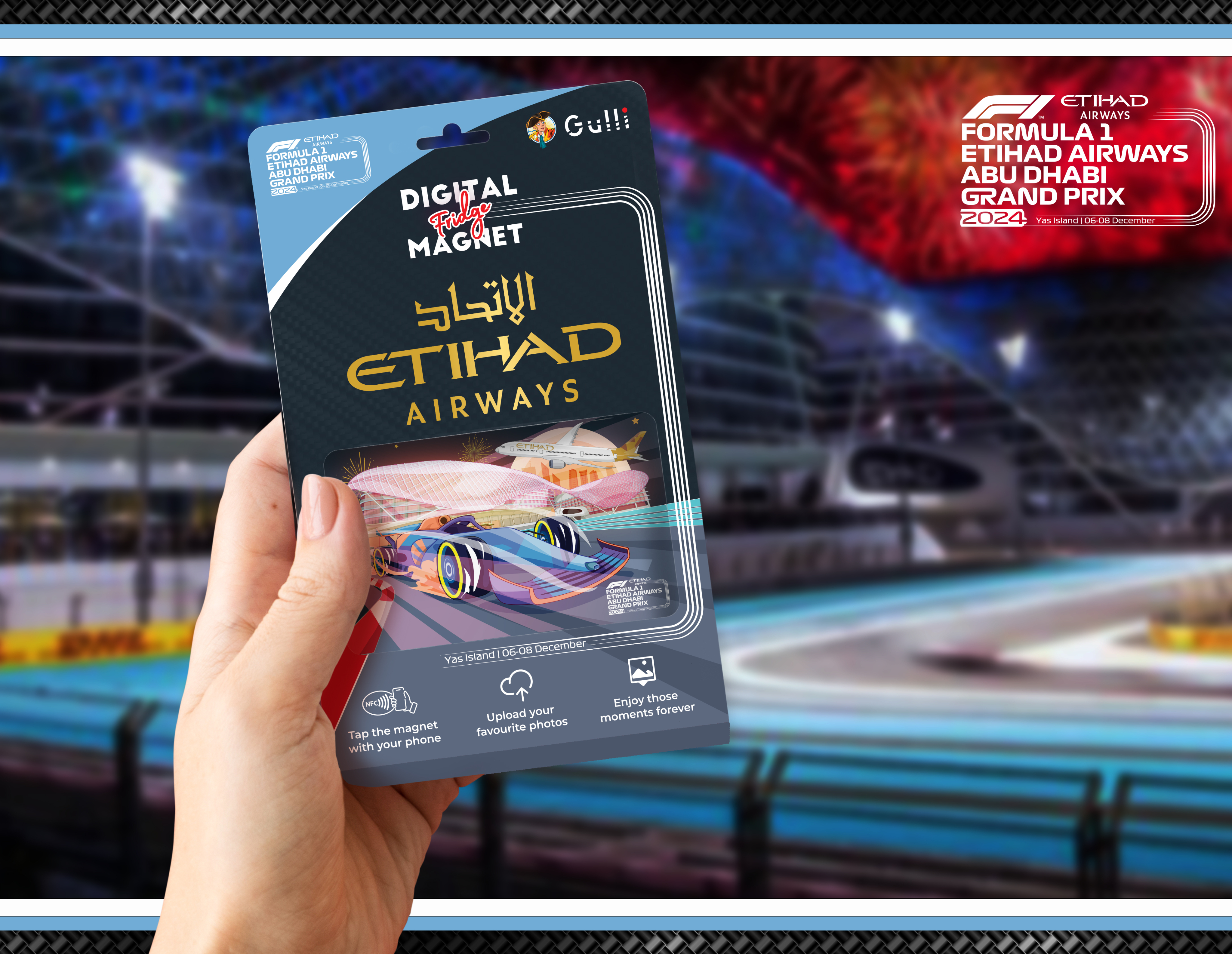
Onboarding
So, in this special “kids” iteration of Gulli, I created a different onboarding flow, one that clearly explains what this version of the app can do, and what kind of extra features it includes.
Playgrounds were amazed, right?Extra features? Oh yeah.
We added a dedicated feed for all promotional content from playgrounds, their events, activities, and announcements.
And on top of that, we built a brand-new feature for vouchers and discounts.
Next? Well, someone had to manage all of these new options, right? But I’ll get to that in a minute.
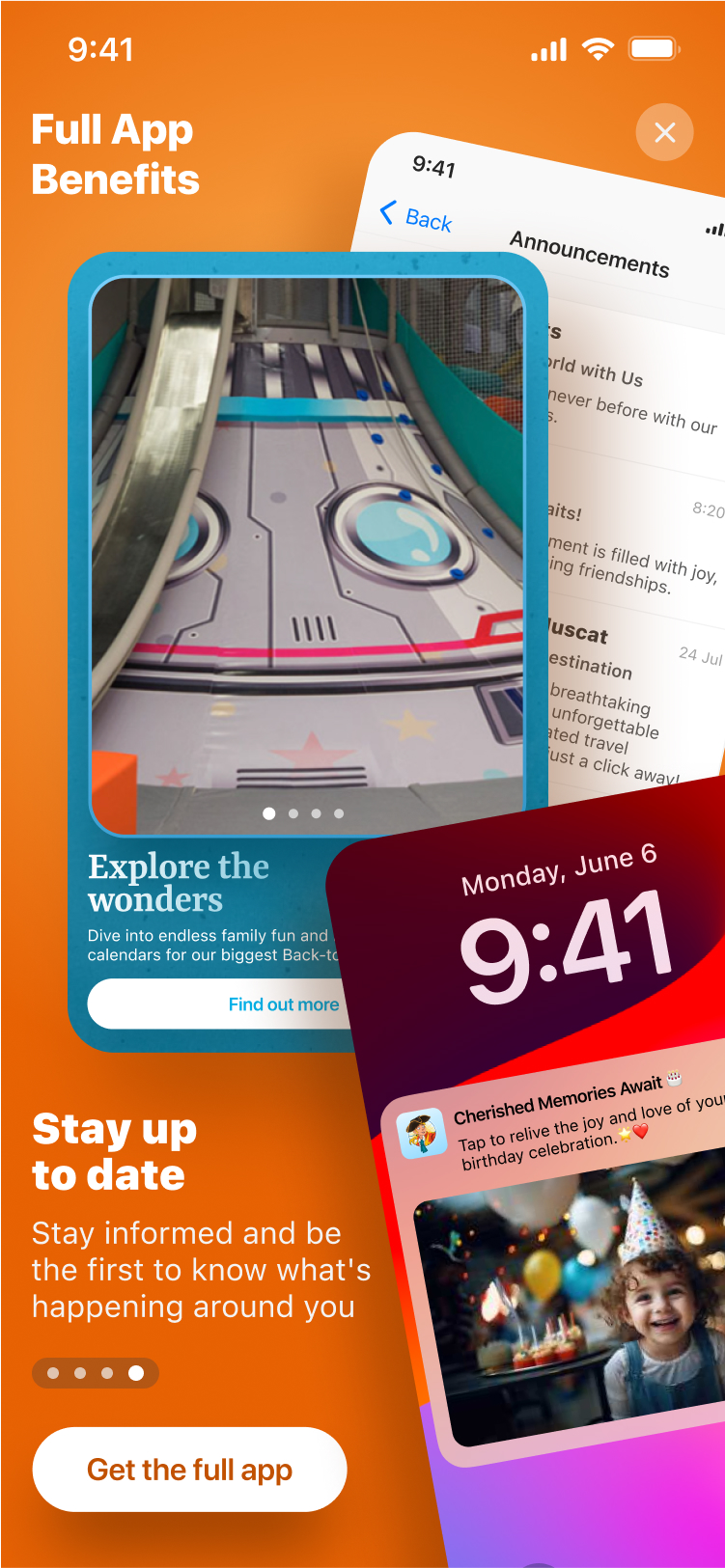
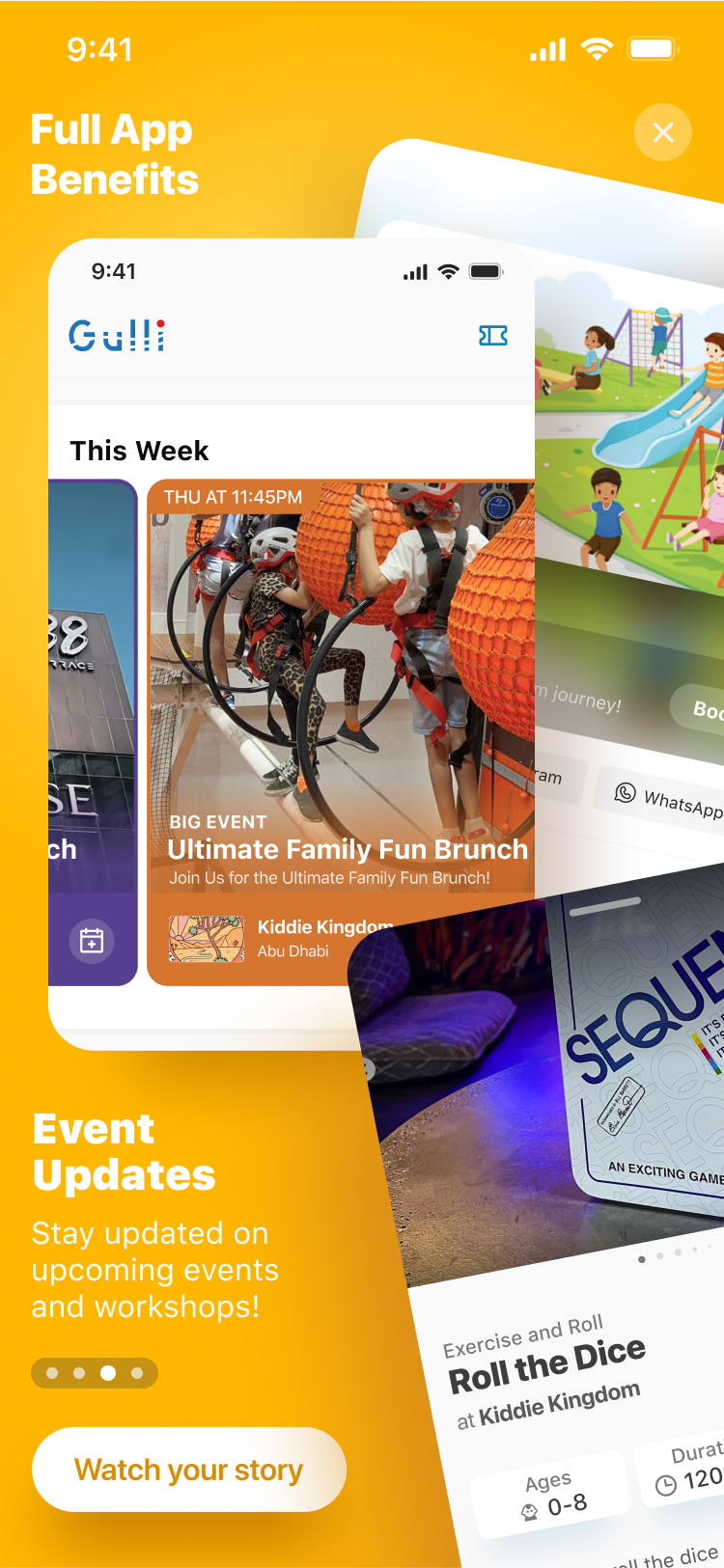
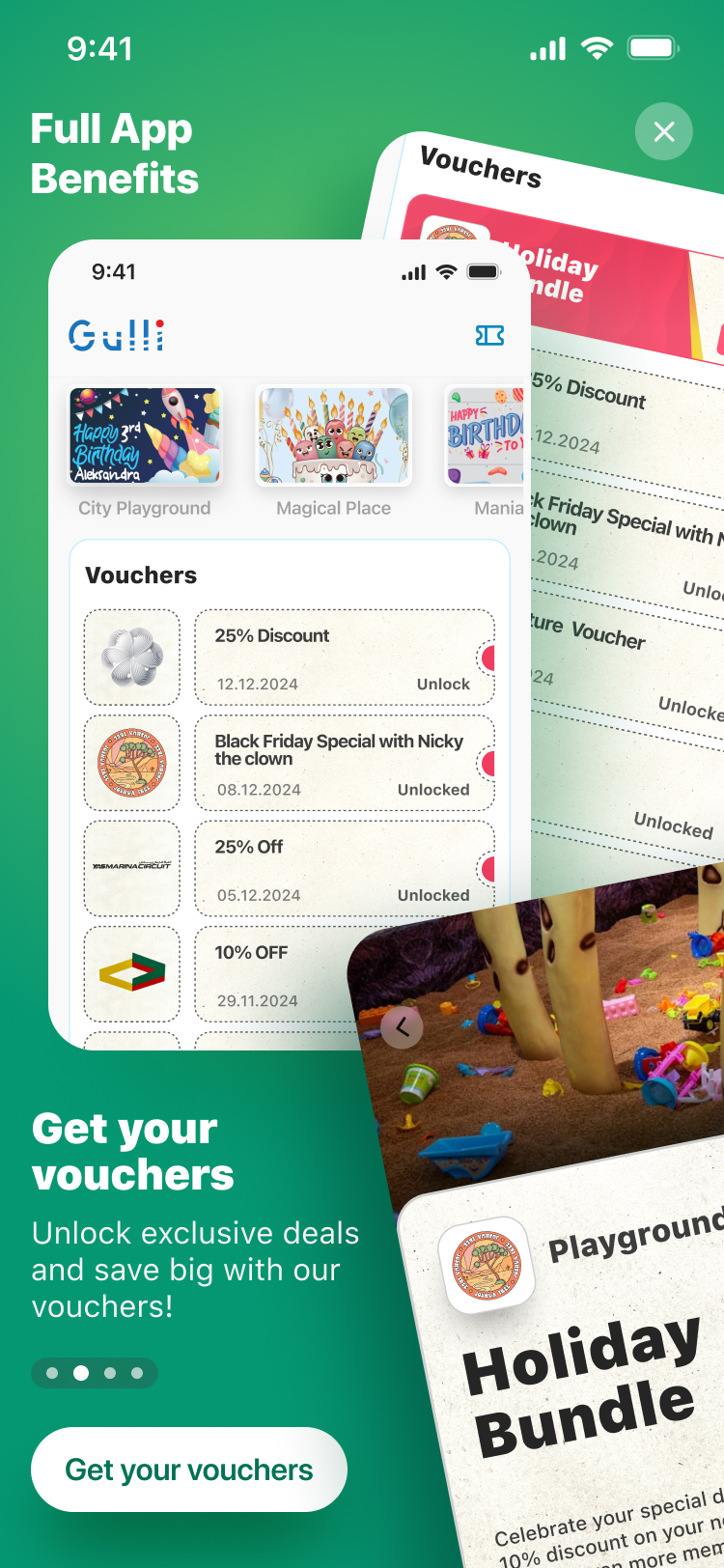
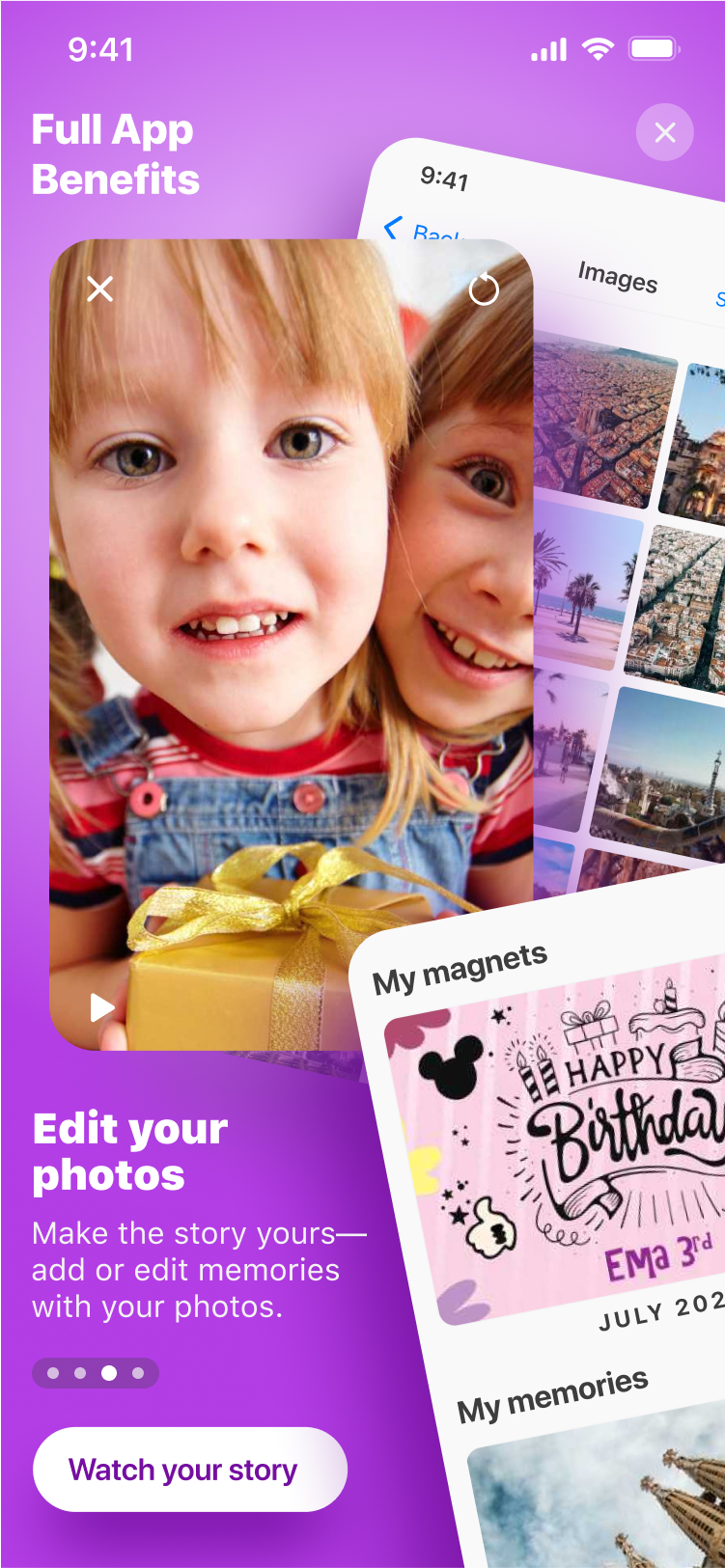
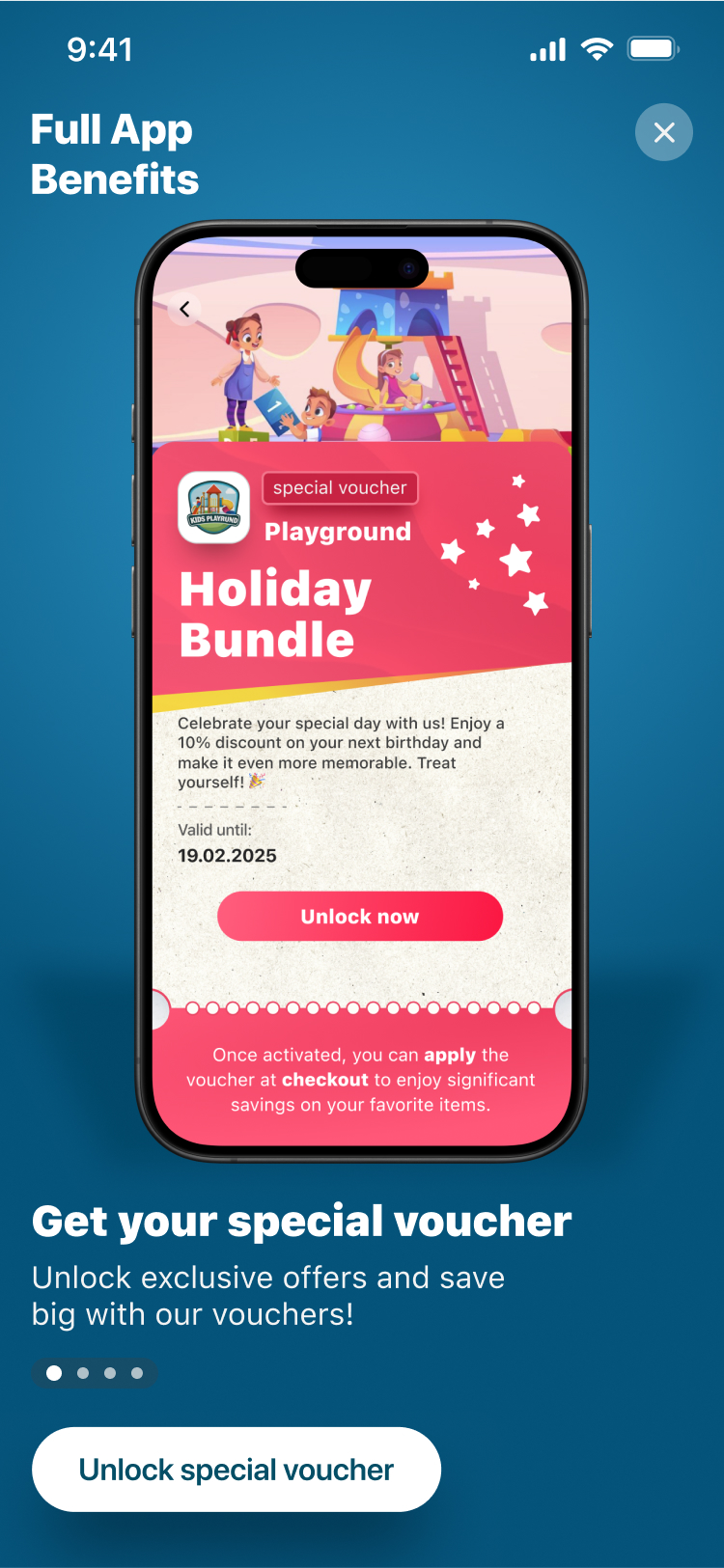
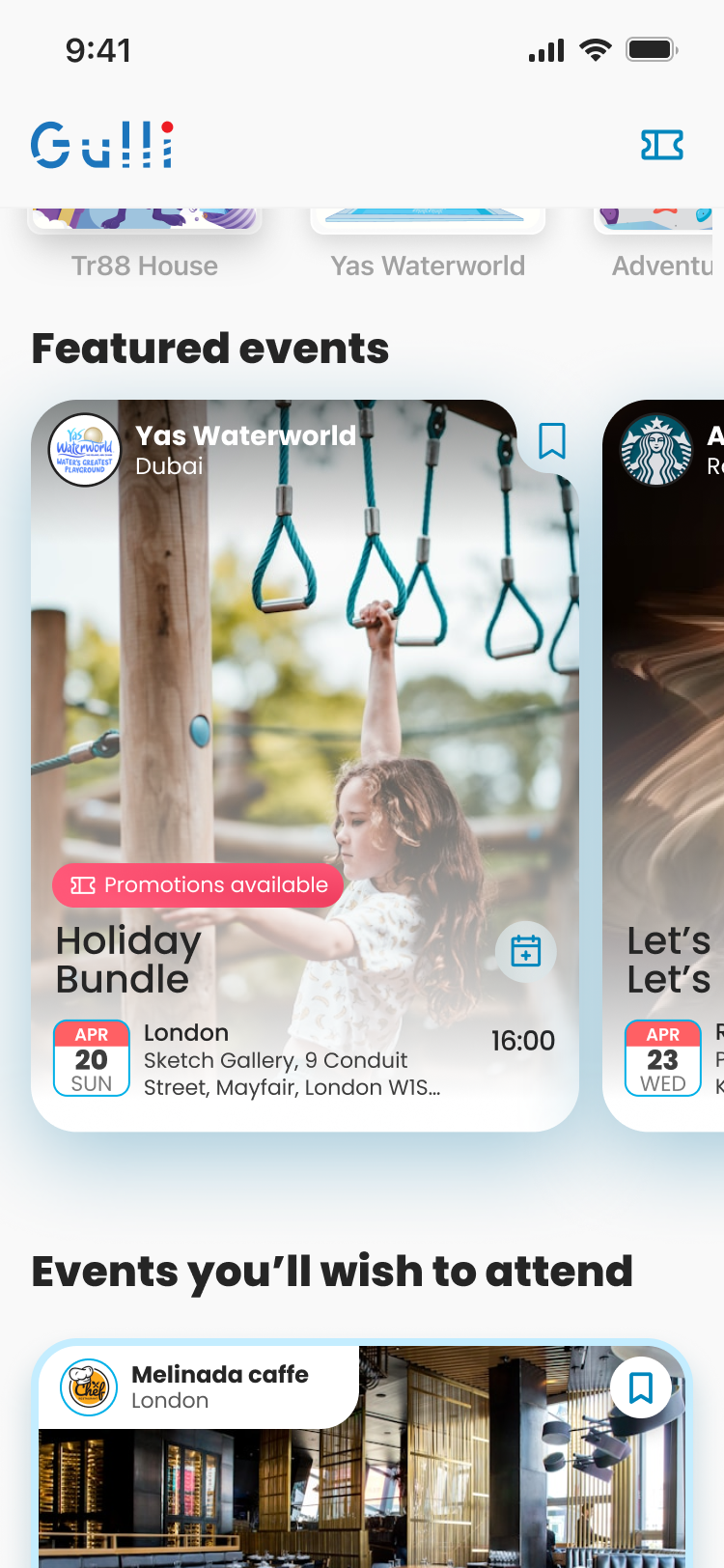
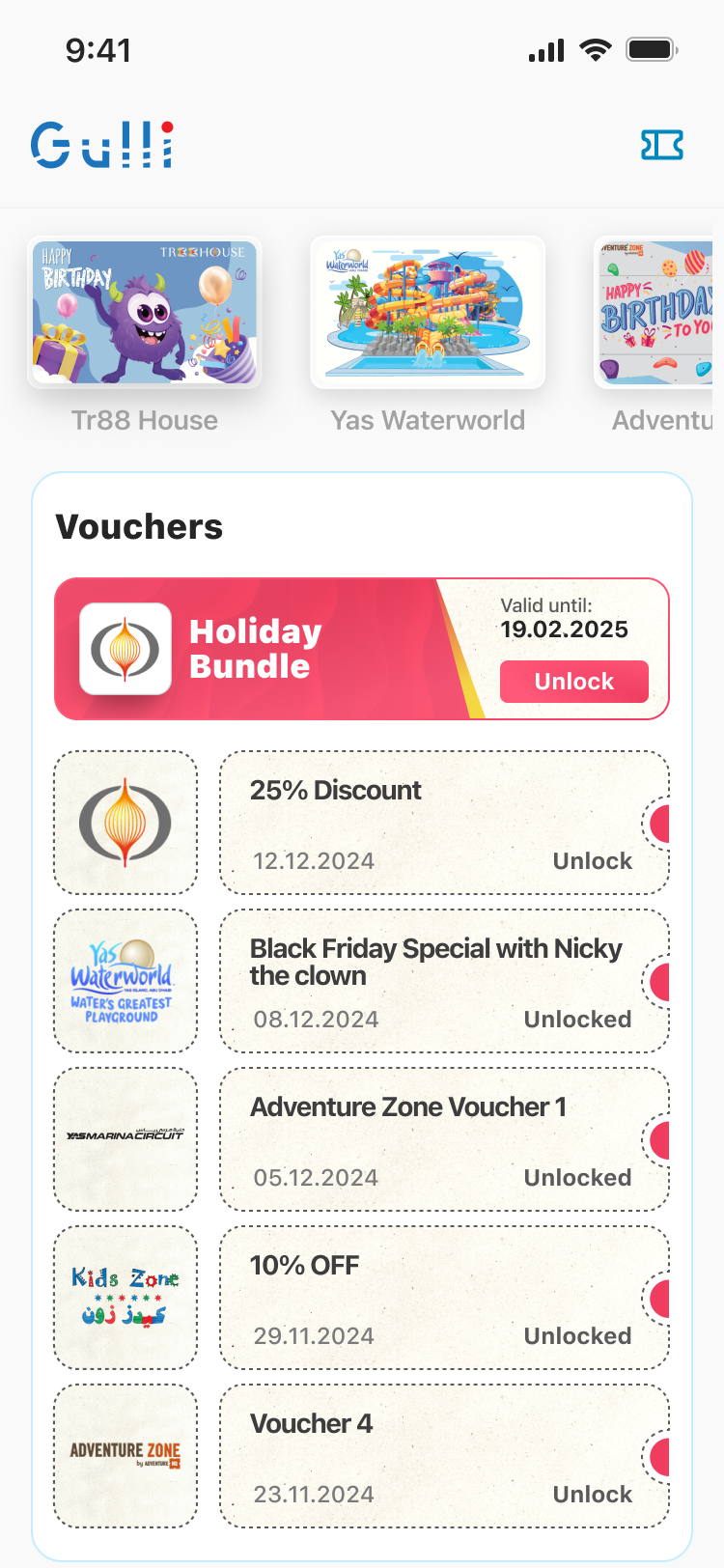
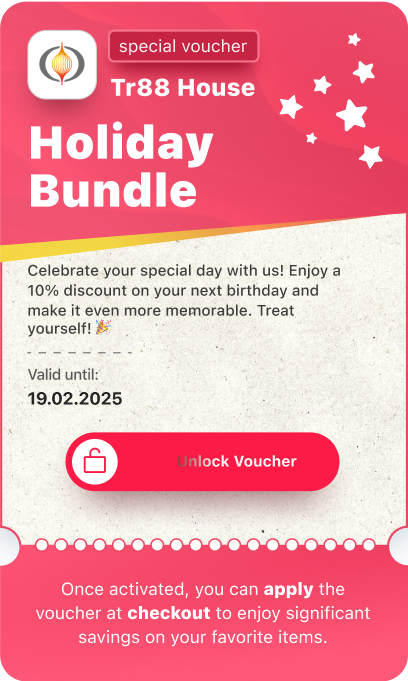
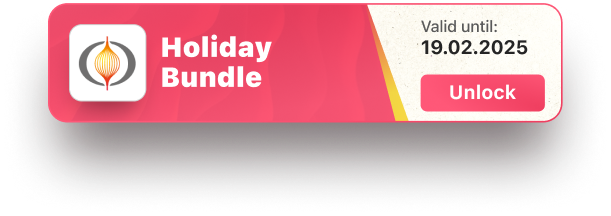
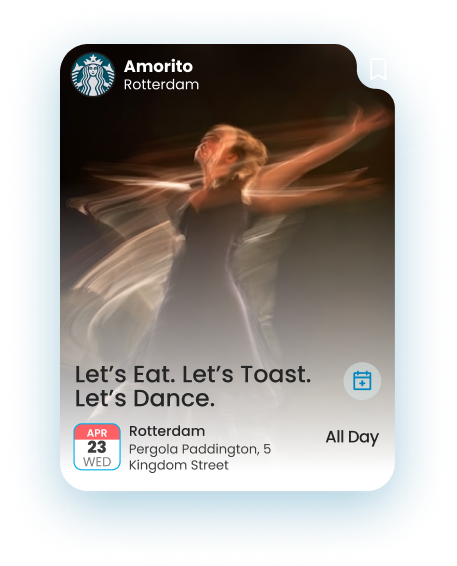
Gulli Admin Panel
One panel to rule all the magnets
To manage these new use cases, we needed more than magnets and an app—we needed a full platform. So I designed Gulli Admin, a SaaS panel built for playgrounds, hotels, and event organizers.
From one dashboard, they could:
- Add vouchers, manage bookings, and set room availability.
- Upload events, activities, and promotional content.
- Send push notifications directly to parents and guests.
- Track analytics like views, engagement, and notification performance.
This transformed Gulli into a two-sided platform:
- On one side: families, travelers, and guests reliving memories.
- On the other: businesses powering those experiences with data and tools.
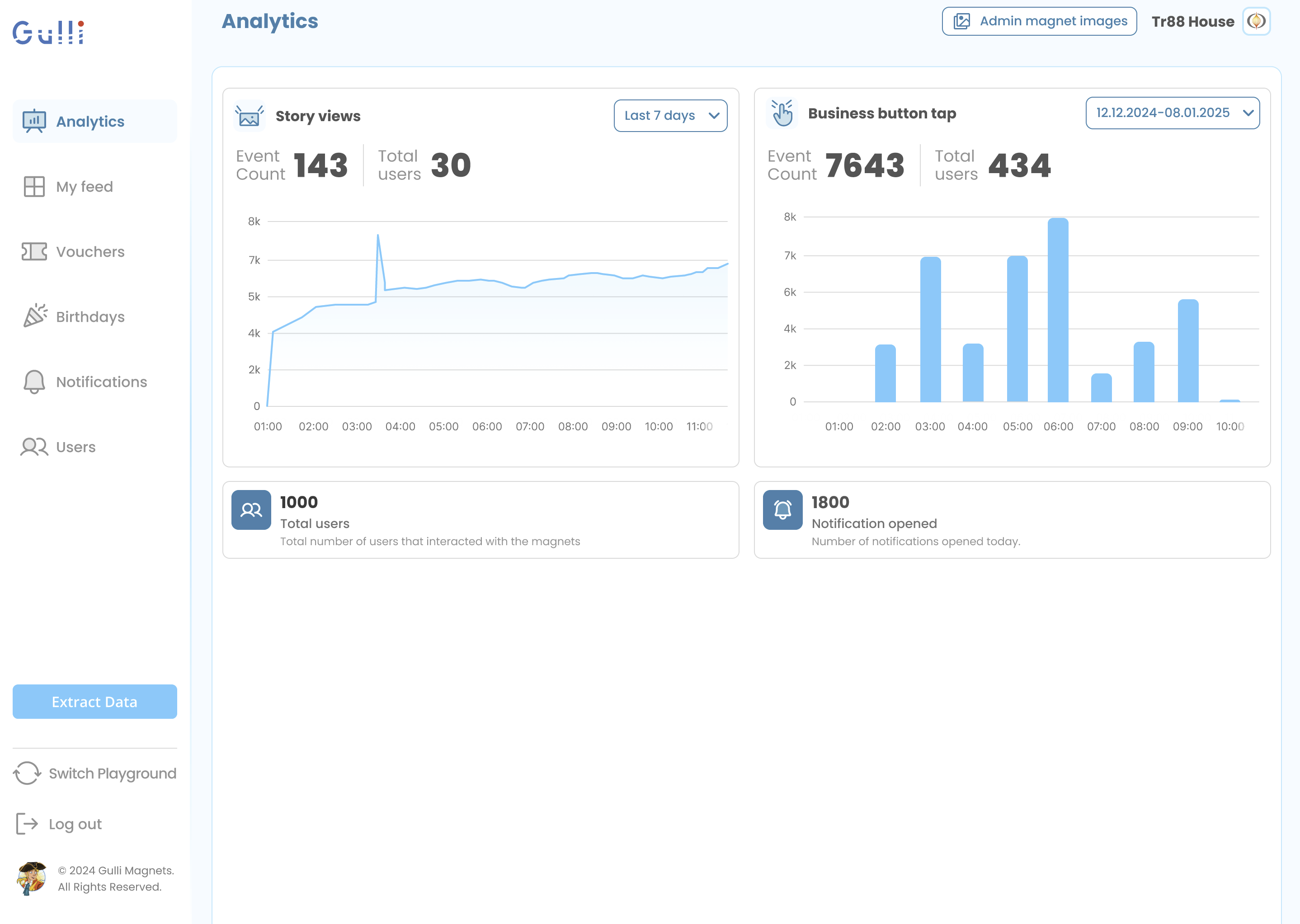
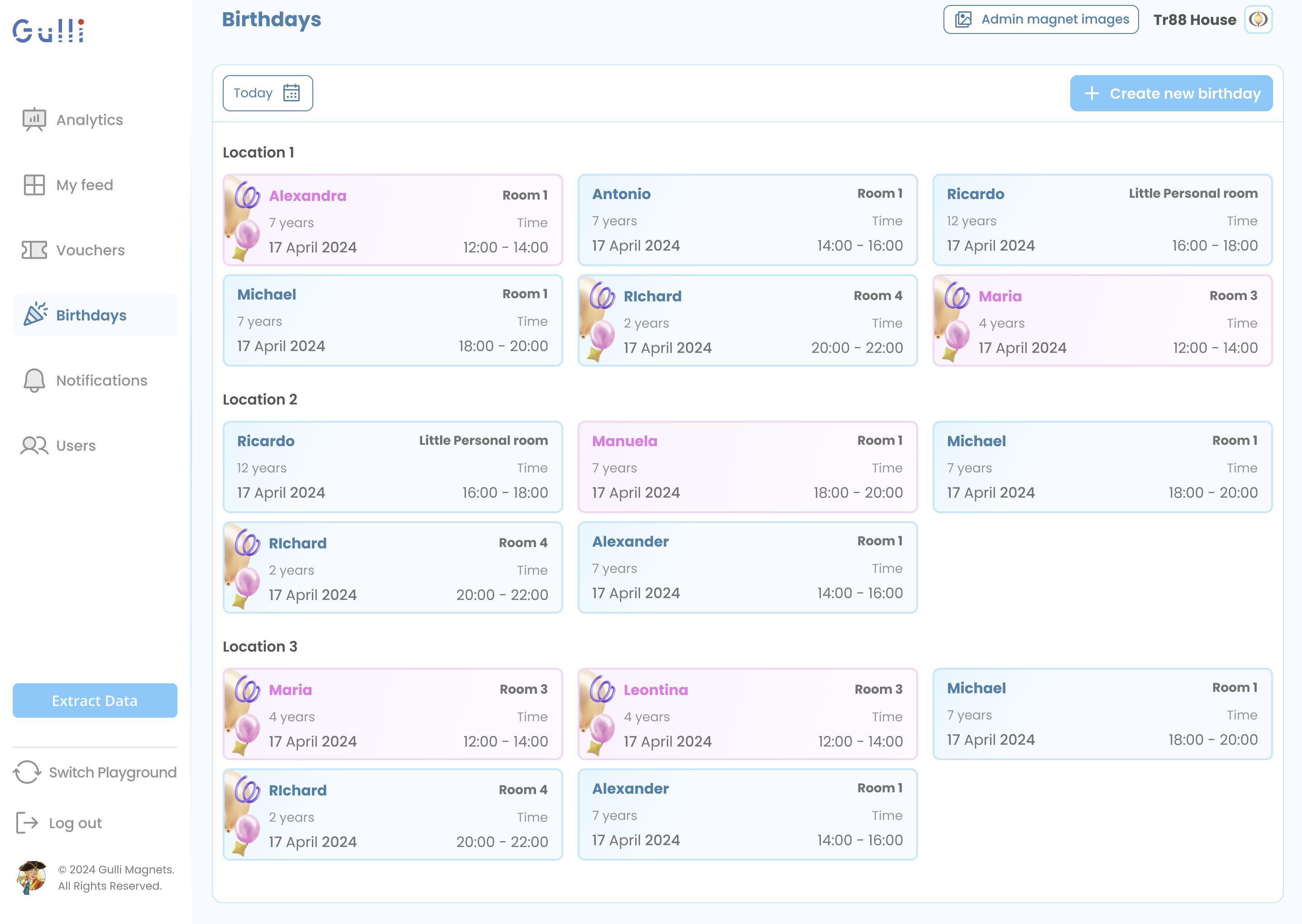
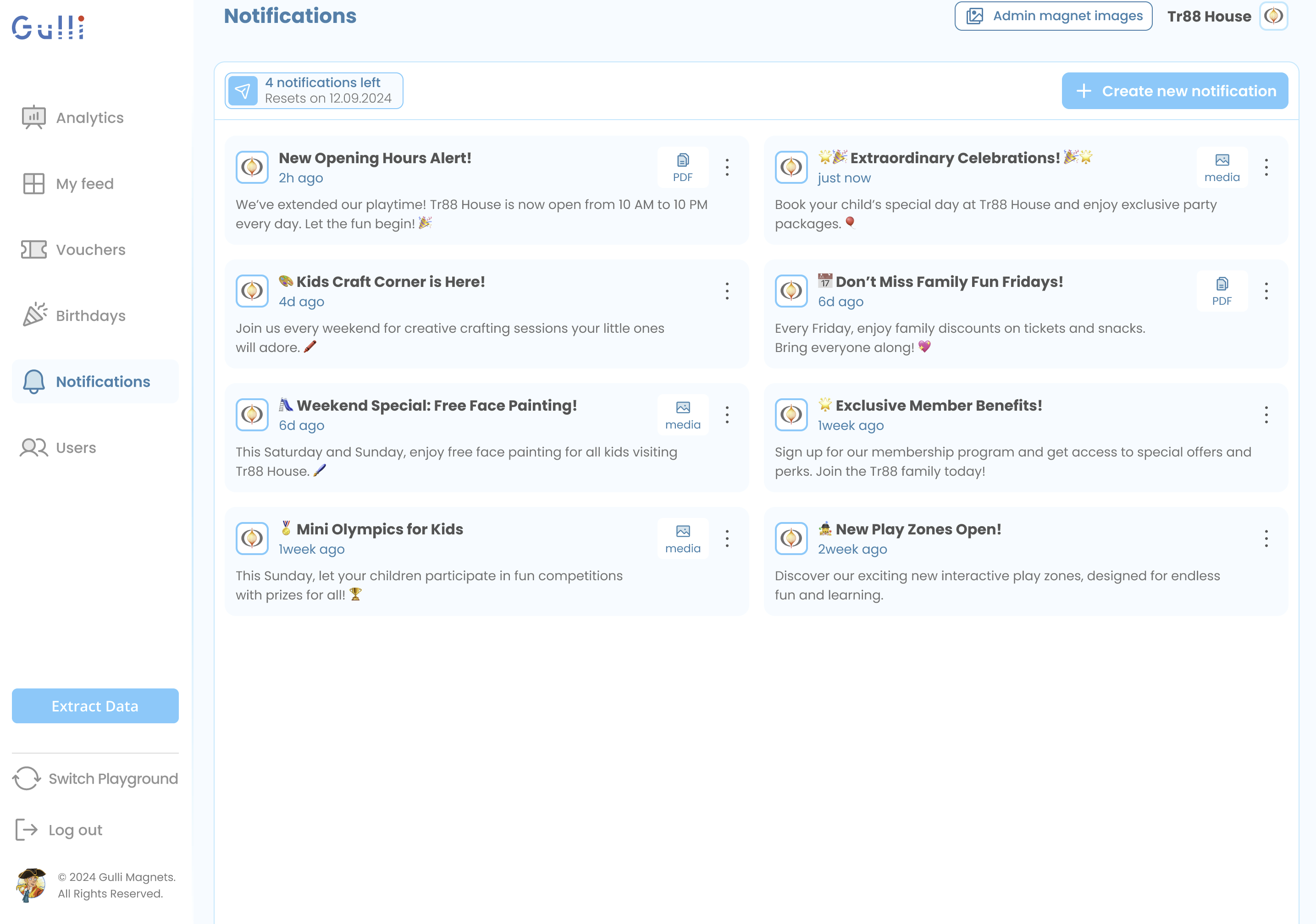
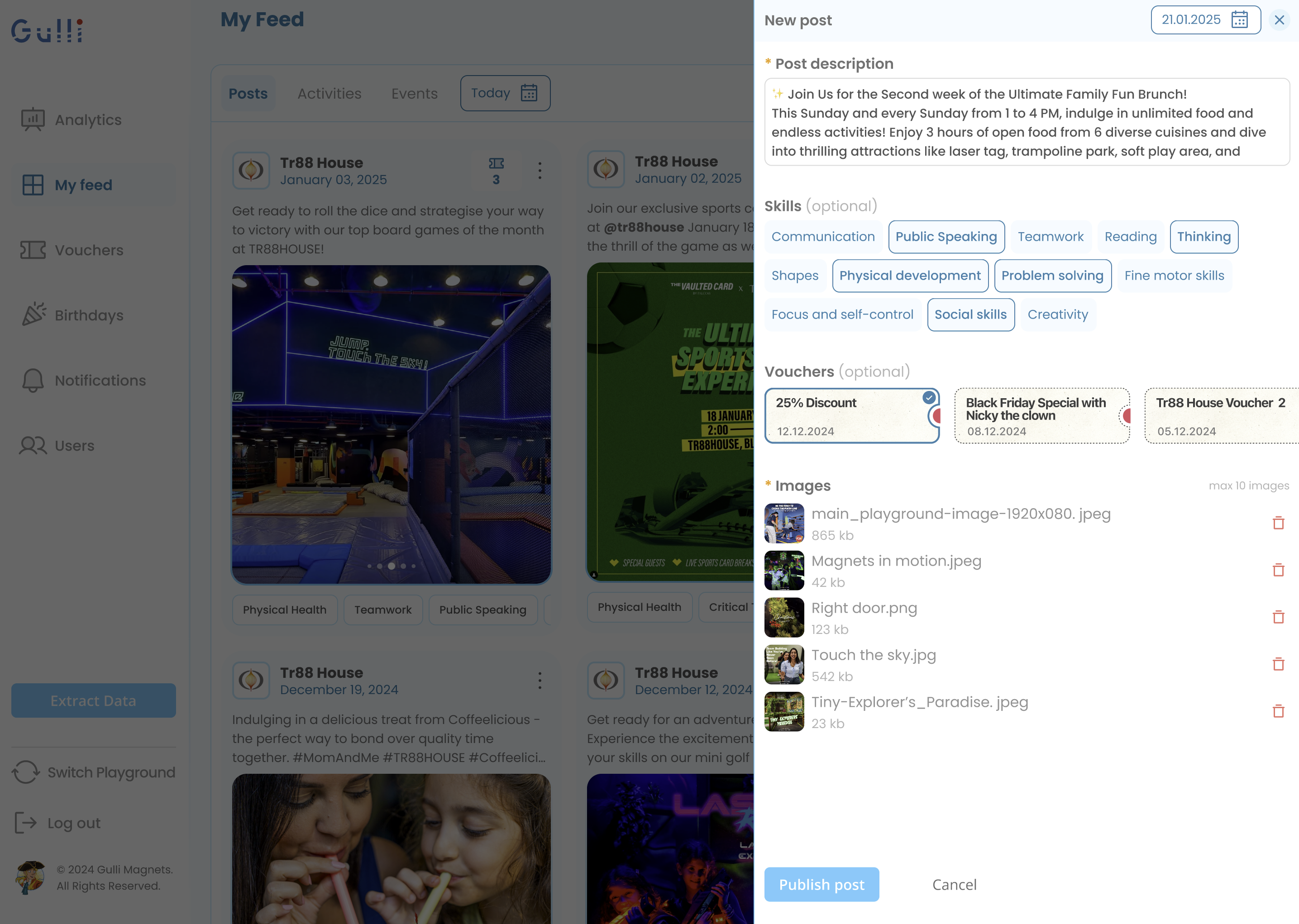
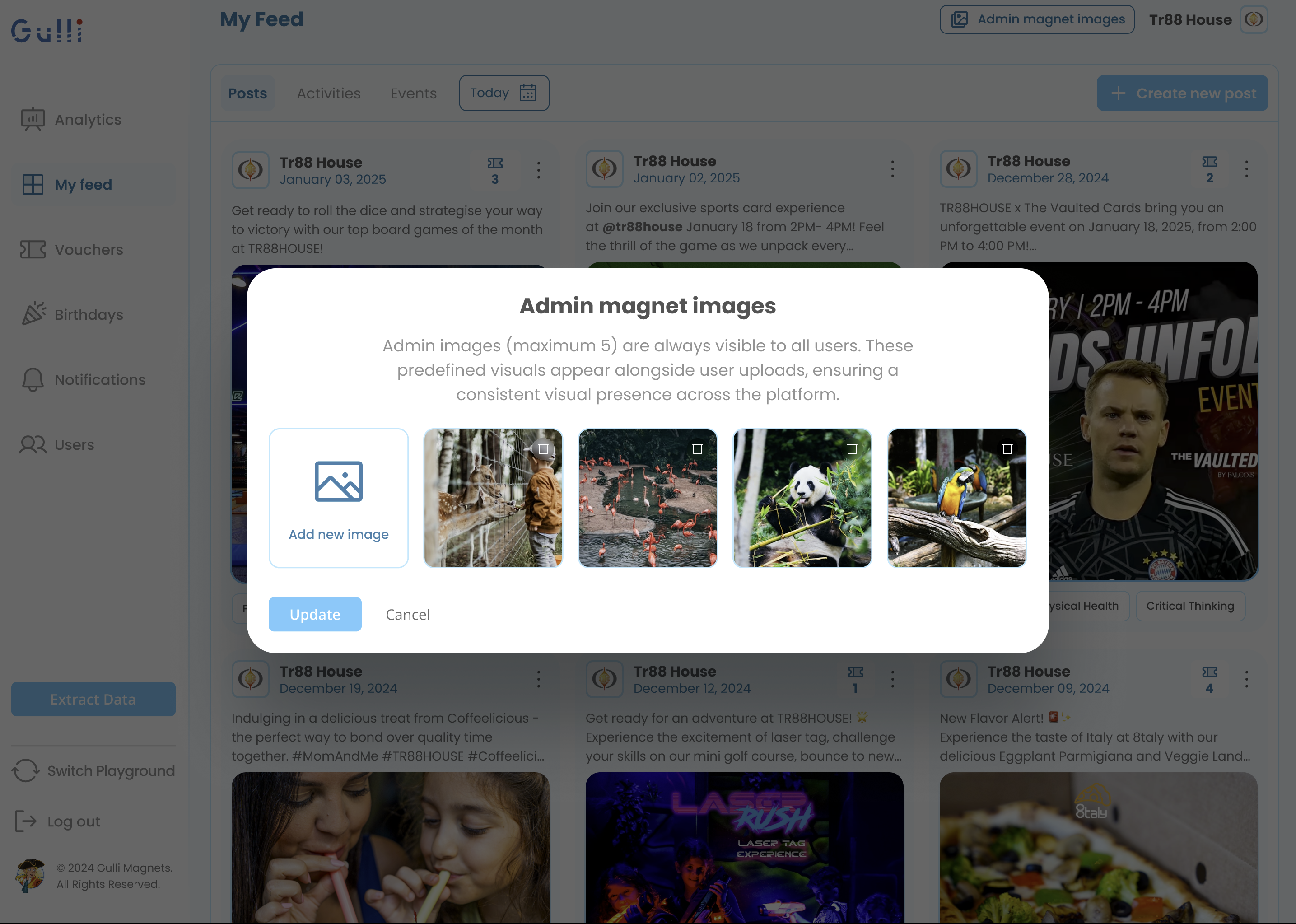
Reflections
More than a project. A story!
Designing Gulli taught me how to bridge two very different worlds.
On the B2C side, it was about tapping into emotion — making souvenirs feel personal, giftable, and worth collecting. On the B2B side, it was about simplicity — making sure hotels could adopt the system without added complexity.
One key lesson was learning how to defend simplicity against feature creep. Hotels often pushed for more controls and customization, but every added layer risked overwhelming travelers. Next time, I’d bring business stakeholders into co-creation earlier to align expectations before development.
Overall, Gulli reminded me that the best products live in the middle of business goals and human needs — and it’s the designer’s job to balance the two.16

Continuing the momentum
Turning locations into
living memories
The App Clip
I designed onboarding to give users the choice: download the app for the full feature set, or simply tap and use the App Clip for a frictionless, one-step flow.
User research guided me here: 88% wanted an app-free experience. So I prioritized building an App Clip that launches instantly when tapping a magnet, cutting onboarding time from nearly 90 seconds to under 20.
I prioritized App Clip to match the 88% app-free preference and reduce friction at first use.
Onboarding
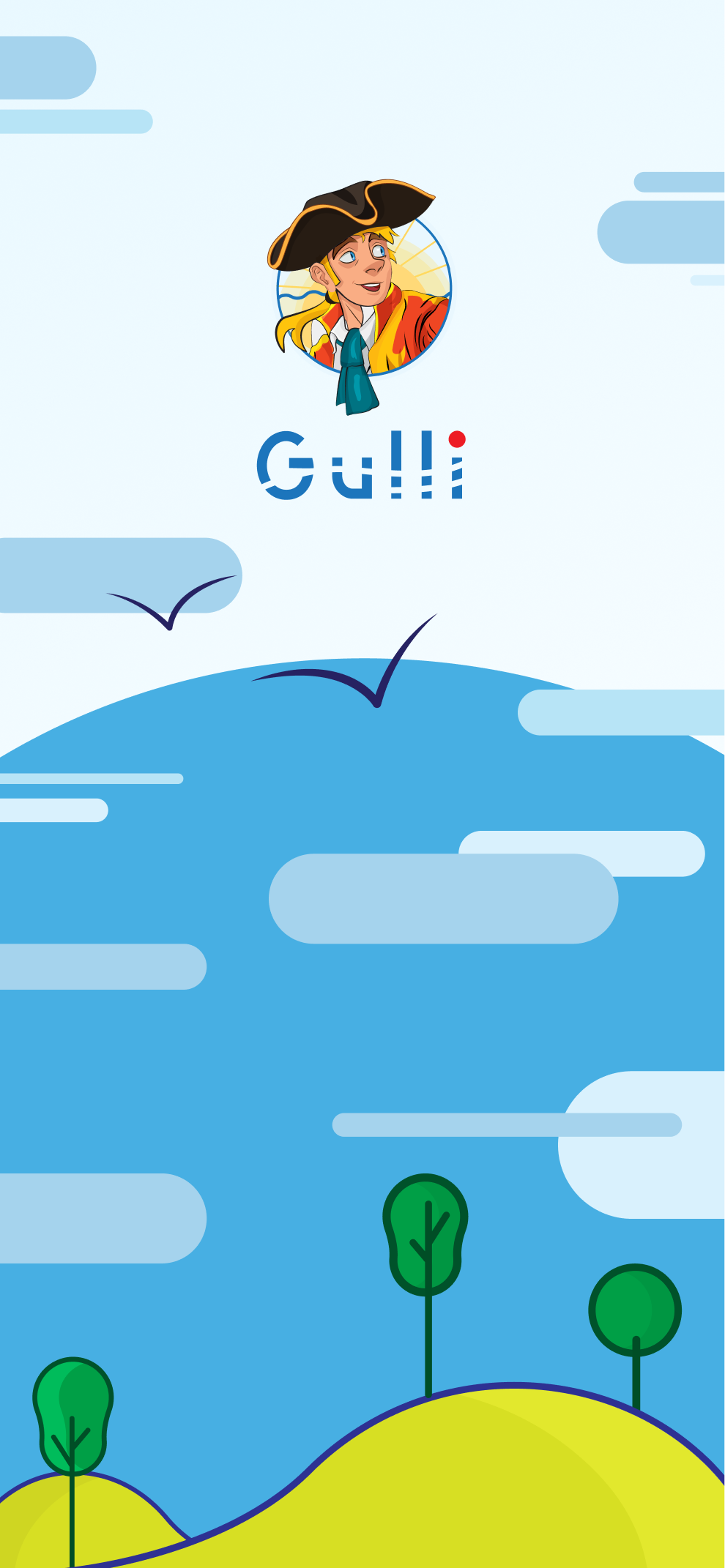
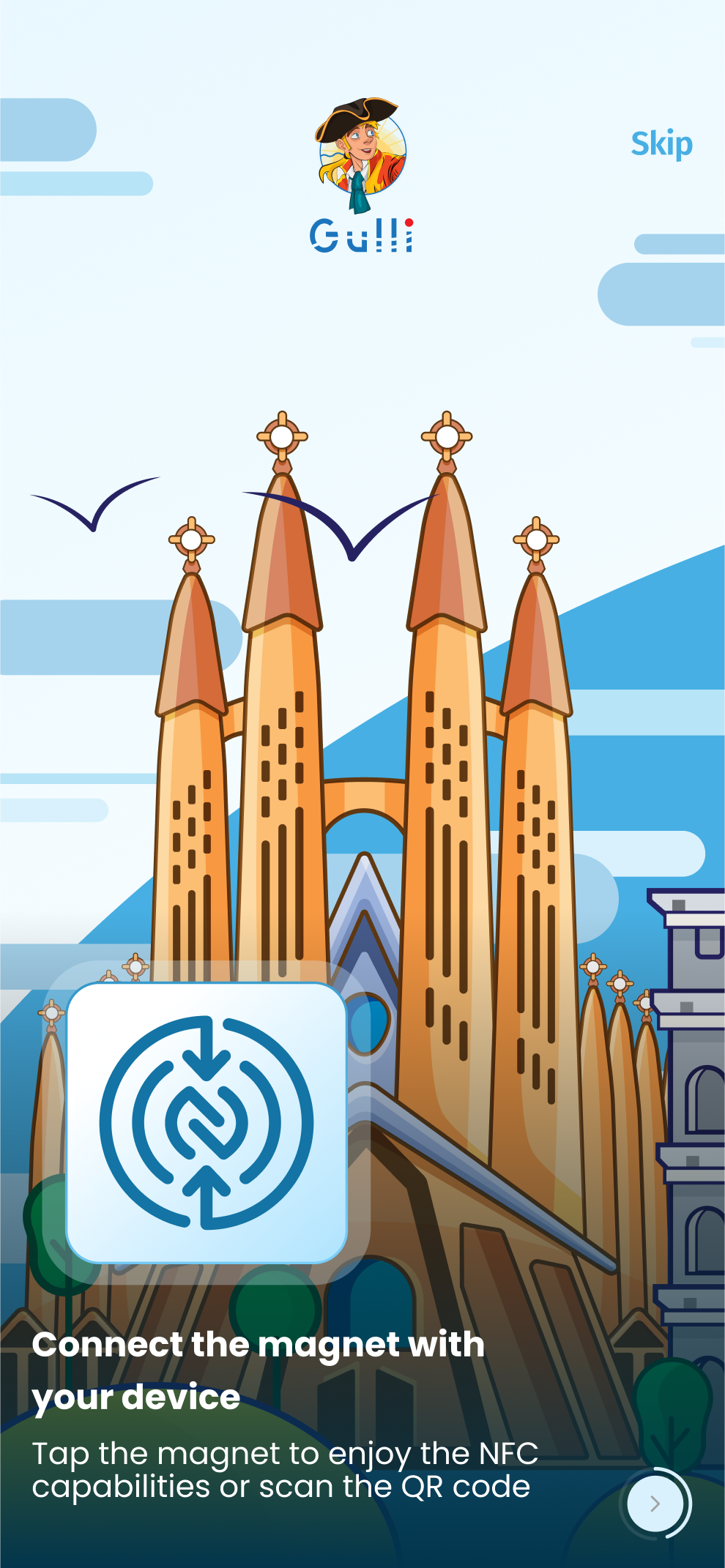
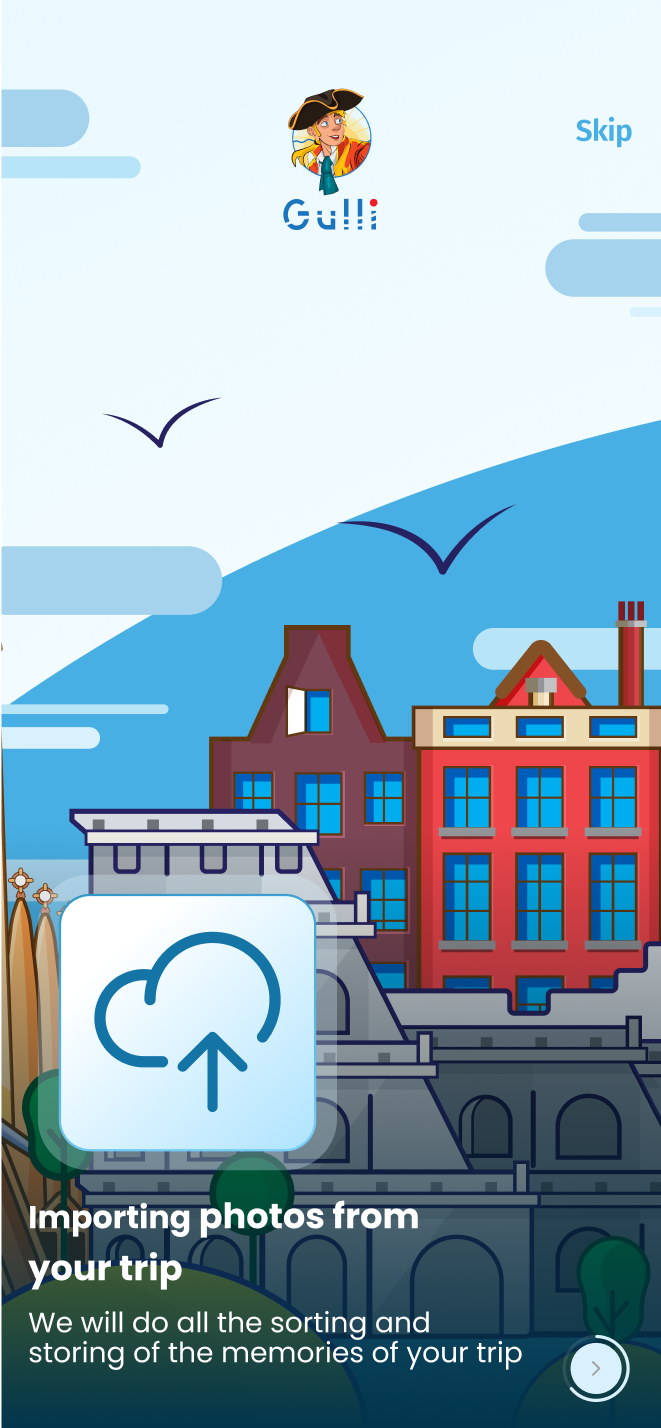
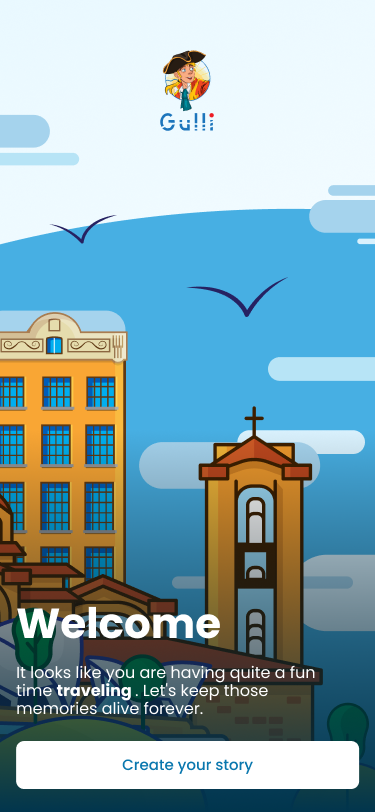
Branding is king, but onboarding is where the real magic happens. From the very first moment someone opens Gulli, I wanted them to feel like they’re holding something warm, familiar, and thoughtfully built. Like a small piece of travel magic in their hand.
The onboarding experience had to reflect that same vibe. Instead of overloading users, we introduce things gradually, starting with how Gulli works, and guiding them step by step. The idea was to make everything feel natural, like uploading a photo to your favorite social app, but more personal, and with a lot more meaning behind it.So, when the users taps on Create your story button, Gulli tries to find the photos from the trip (aka magnet) they’re holding in their hands, and it can upload them automatically for you, or you can always change them by selecting the photos from photo gallery.
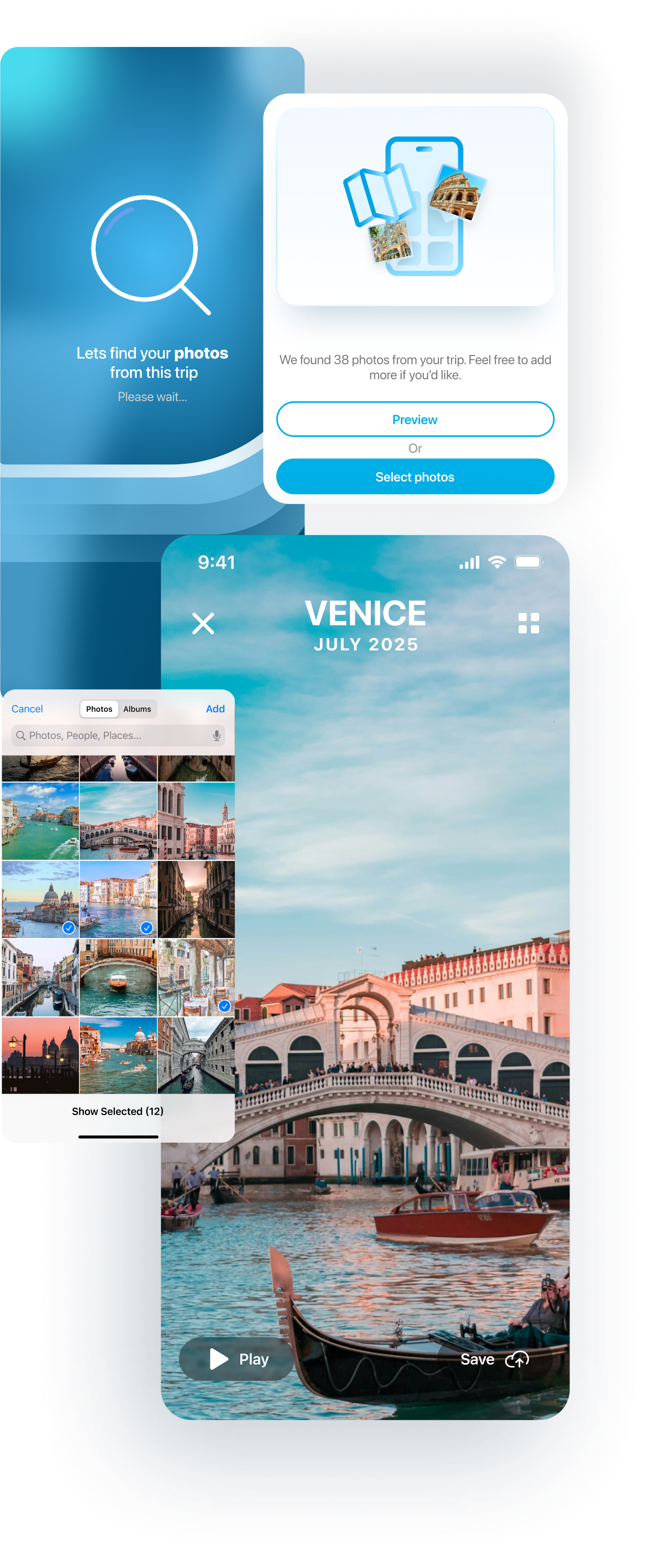
What if?
Users don’t have NFC enabled?
No problem. For users without NFC-enabled devices, we added a backup option—a QR code printed on the back of each magnet.
The flow remains the same, just with a few extra steps: open the camera app, scan the QR code, and then launch the Gulli App Clip. It takes a little longer, but the experience stays just as smooth.
Users didn’t create an account before activating the magnet?
We’ve got them covered. Each magnet “floats” in the cloud, temporarily linked to the user’s phone ID.
So even if they didn’t create an account right away, they can come back later, log in with a new account, reconnect the magnet—and voilà, it’s theirs again.
No memory lost. Just pick up where they left off.
User story generation was interrupted by users?
During early tests, we noticed that users were struggling with the story upload flow. Many assumed their story was already uploaded, closed the app too early, and ended up losing everything.
To solve this, we introduced a save button with a subtle Lottie animation to visually indicate the uploading process. Once the upload is complete, a blue checkmark appears—clearly signaling that the story is saved and ready to be shared or revisited.
Considered Concept
Photo magnets with QR only
Mobile App-Only memory keeper
AR souvenir app
Printed story cards with NFC
Partnering with existing travel apps
Why We Considered It
Low cost, easy scanning
Rich digital feature set
Trendy, immersive
Lightweight, portable
Instant audience access
Why We Moved On
No offline magic, less interactive
Requires download, breaks spontaneity
Tech-heavy, alienates non-tech users
Lacks collectible, display-worthy appeal
Brand dilution, fragmented UX
Outcome: NFC magnets offered the perfect balance of tactility, technology, and emotional resonance, making them the most viable path for both user experience and business scalability.
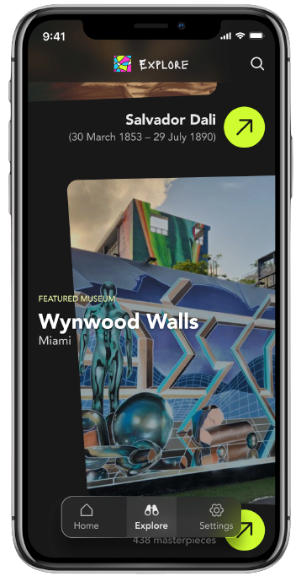
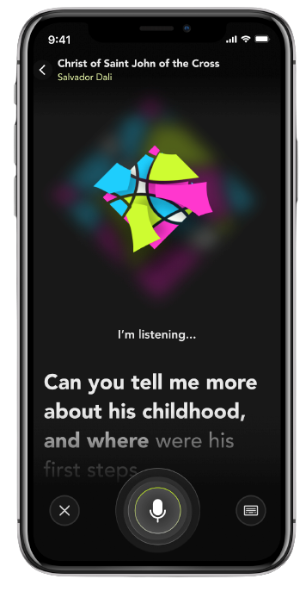
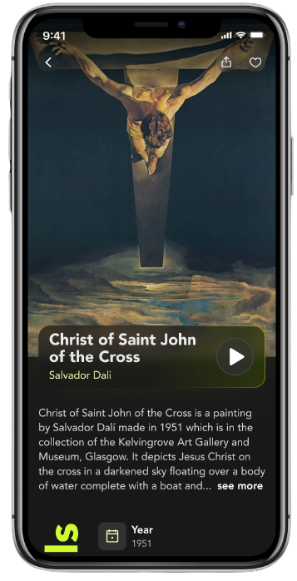
Mobile app
Verve
Museums. Reimagined.
Next project
Explored UX Alternatives
The Souvenir Crossroads
With clear personas and validated needs in place, we explored multiple directions to uncover the solution that would best serve our users while aligning with business goals.
Considered Concept
Photo magnets with QR only
Mobile App-Only memory keeper
AR souvenir app
Printed story cards with NFC
Partnering with existing travel apps
Why We Considered It
Low cost, easy scanning
Rich digital feature set
Trendy, immersive
Lightweight, portable
Instant audience access
Why We Moved On
No offline magic, less interactive
Requires download, breaks spontaneity
Tech-heavy, alienates non-tech users
Lacks collectible, display-worthy appeal
Brand dilution, fragmented UX
Outcome: NFC magnets offered the perfect balance of tactility, technology, and emotional resonance, making them the most viable path for both user experience and business scalability — and the foundation for a souvenir experience unlike anything else on the market.
User flows
The path of a memory
After conducting user research and gathering valuable insights, we developed personas and explored a variety of product concepts and scenarios. Ultimately, we identified the “digital fridge magnet with NFC” as our core highlight. From there, I began mapping the initial user flows — tapping the magnet with a phone, browsing photos, creating stories, uploading content, saving, commenting, sharing, and more. This stage was where our assumptions would be put to the test: either validated, challenged into a new direction, or, in the worst case, proving that this innovation wasn’t the right fit for our target customers.
Why these flows matter
These flows aren’t just steps on a diagram — they show how Gulli transforms a simple magnet into a shareable, living memory.
- App Clip flow highlights the instant, no-install experience, letting users relive a trip in seconds.
- Gift flow captures the joy of sending memories to loved ones, bridging the gap between physical keepsakes and digital storytelling.
By mapping these out early, we ensured that both first-time and returning users had an intuitive path — whether they were unlocking a memory for themselves or sharing it as a gift. Together, these flows turn travel memories into experiences that can be instantly unlocked, beautifully relived, and effortlessly shared.
Gift flow
Recipient receives the magnet/story
Start
Go to
Home screen
Select trip/magnet from Memories
Home screen
Tap the Share/Gift button
Enter a recipient name
Share dialog appears
Wrapping animation
Congrats screen
Magnet is successfully sent
Preview a story
Play/Pause the story
Story added to recipient’s profile
View images
Can view as a grid
App clip flow
Start
Go to
Home screen
User taps the magnet (NFC)
iOS App Clip launches
Splash screen/s
Onboarding
Finding images
from the trip
Creating a story
Actual story/images screen
If location is on
Automatically searches
from the location
If location is off
Manually select images
from the trip
Preview a story
Play/Pause the story
Congrats screen
Magnet is successfully activated
Save/Upload
Continue the flow
Repeat the step
Manually select images
Gulli at a Glance
Here’s how Gulli is being used in the real world
These outcomes weren’t accidental — they came directly from our user research.
Aligning features with stated user preferences (illustration, gifting, low-friction onboarding) directly fueled the 480k+ sales in 40+ countries.By choosing illustrated magnets (92% preference), we reached 480k+ sales worldwide. Prioritizing gifting (81% preference) led to 24k+ shared memories, while focusing on frictionless onboarding (88% preference) made Gulli a global keepsake. Each feature tied back to what users told us they valued most.
128
Cities & Partners
from boutique hotels
to souvenir shops
480k
Magnets Sold
now sitting on fridges in
over 40 countries
325
B-Day Memories
milestones captured
and kept forever
24k
Memories Gifted
moments shared instantly with friends and family
Figures based on sales & usage data from
Jan 2023 – Jun 2025
Our customers became our friends
Voices that keep us going.
From hotel directors to families and small business owners, Gulli has connected us with people who share the same love for meaningful memories. Their words aren’t just reviews — they’re stories, friendships, and proof that our magnets spark joy long after the first tap.
A perfect blend of modern design and a personalized story – each magnet is a digital work of art inspired by your adventures. It’s more than just a keepsake; it’s a way to relive the moments you cherish most.
Jana Spirkovska
Macedonia, Skopje
Gulli Magnets really helped streamline the whole process with the birthday photos, making it effortless to create lasting memories. Parents love how personal and fun the experience is for their children.
Nikolina Mizich
KiDS Escape Room Franchise
The magnets are amazing and appreciated by our guests. They create a lasting connection to their visit, serving as a beautiful reminder of their time here and adding an extra layer of warmth to their overall experience.
Sai Rasam
Director of Rooms, Kempinski Hotel Muscat, Sultanate of Oman
Everyone is loving the product, from guests to corporate clients. The magnets add a unique, thoughtful touch that makes each visit memorable, and they’ve quickly become a signature part of our hospitality experience.
Abhishek Mishra
Director of Sales,
Waldorf Astoria, Doha
A souvenir you can feel and relive
Making souvenirs smart, emotional, and unforgettable.
Our customers became our friends
Voices that keep us going.
From hotel directors to families and small business owners, Gulli has connected us with people who share the same love for meaningful memories. Their words aren’t just reviews — they’re stories, friendships, and proof that our magnets spark joy long after the first tap.
A perfect blend of modern design and a personalized story – each magnet is a digital work of art inspired by your adventures. It’s more than just a keepsake; it’s a way to relive the moments you cherish most.
Jana Spirkovska
Macedonia, Skopje
Gulli Magnets really helped streamline the whole process with the birthday photos, making it effortless to create lasting memories. Parents love how personal and fun the experience is for their children.
Nikolina Mizich
KiDS Escape Room Franchise
The magnets are amazing and appreciated by our guests. They create a lasting connection to their visit, serving as a beautiful reminder of their time here and adding an extra layer of warmth to their overall experience.
Sai Rasam
Director of Rooms, Kempinski Hotel Muscat, Sultanate of Oman
Everyone is loving the product, from guests to corporate clients. The magnets add a unique, thoughtful touch that makes each visit memorable, and they’ve quickly become a signature part of our hospitality experience.
Abhishek Mishra
Director of Sales,
Waldorf Astoria, Doha


ABOUT THE PROJECT
Travel memories fade, but keepsakes don’t. Gulli Magnets were born to capture that feeling — NFC-powered collectibles that turn moments into living stories. I led the design end-to-end — from creating over 30 illustrated cities and building the brand identity to designing onboarding flows, gamification elements, and the Admin SaaS platform that powers it all. My role was to shape both the emotional side for travelers and families, and the functional side for hotels and admins.
Role
Lead UX/UI Designer
Scope of work
Illustrations
Visual Design
Packaging
Prototyping
Research
Client
Gulli Magnets
Type
iOS & Android Apps
Timeline
Q2 2022 - Q1 2025
The Spark
Where the spark began
The idea itself
When I joined Echo LTD (the parent company of Gulli Magnets), there was already an app in development under the codename Magic Memories. It had a basic logo and some initial color foundations, but there was no sign of illustrated magnets—or even the idea of magnets at all.
Then I heard the concept: digitizing travel memories and making them accessible with just a tap of the phone, ideally through an App Clip. That’s when something clicked. Around the same time, my CEO was already envisioning souvenirs with embedded NFC chips. The pieces began to fall into place.
The magnets
From the beginning, I pushed for magnets without QR codes—I wanted the experience to feel seamless: just tap with your phone, and your memory is there.
The next challenge was shape and size. After rounds of informal testing with colleagues, I landed on ID card dimensions. Compact, familiar, and easy to slip into a wallet or pocket, they fit perfectly into a tourist’s journey home.

Before

After
Draft illustration
Knowing myself, I was never going to be the guy who settled for basic, already-shot photos. I wanted to leave my mark—to create something meaningful and lasting. So, I switched into “drawing mode” once again, two years after my last NFT art show, and the first draft was born.
It featured Ohrid’s Plaosnik Church, vibrant colors, those now-signature birds in the background, a big sun with soft clouds, and little green hills in the foreground, all reflecting the core brand elements of Magic Memories at the time.
First ever illustration
Even though I thought it was just the first draft, it turned out that the Ohrid illustration became the first official version of our magnets. After that came Sydney, then Rome, Barcelona, Amsterdam and Skopje—and just like that, the Gulli Magnets concept was born. Well, not quite, the name wasn’t settled yet.
First ever Gulli Magnets illustration

The name/The logo/ The branding
Naming the Vision, Shaping the Brand
So, cool, we already had the app built (early beta phase), but we needed a new name.
Now, we had stories from our trips stored in fridge magnets so tiny they could fit in our pockets or wallets.
Well, Gulliver’s Travels, the book, was all about a doctor’s voyages to Lilliput and Brobdingnag. That’s when it clicked! Gulli Magnets was the perfect name for an app that blends travel, exploration, and curiosity about the world!
The initial pinkish color was immediately replaced with a bluish tone, representing the seas and the Earth itself, complementary colors for travel and a life of wanderlust.
As I started to think more about design system and building it, at least basic foundations in terms of colors, typeface and components, I was jugling between creating the logo which will be gold starting point for our brand identity.
After all the draft logos were done, I realized it would be even more awesome if Gulli were a character for his future adventures.
He could fly, talk to horses, and explore bizarre worlds, just like in the book. So, the final logo was created, along with Gulli with his suitcase, ready to explore and enjoy life!
Draft logo versions of Gulli
The design system
The glue behind the Gulli look
While shaping Gulli’s branding, colors, and identity, I also built a design system designed to scale, both for future designers working alongside me, and for every developer that’s ever been part of our team.
I’ll be honest, I’ve updated it many times. As Figma rolled out new features like variables, tokens, advanced prototyping, and conditionals, I kept refining the system to stay current and usable.
Colors and typography were fully defined, with local variables, booleans, numbers, and text strings clearly organized, making handoff to developers smoother and more reliable. I’ve used t-shirt sizing for spacing and sizing consistency, and every component came with usage guidelines and notes for devs.
I built it with the future in mind, to support growing complexity and evolving features. Because without a strong design system early on, we risk building blindly. And eventually, everything starts to fall apart.

It’s been an absolute pleasure bringing your vision for Gulli to life as a real iOS app. Your designs were full of heart and thoughtful detail, and it was truly rewarding to help turn them into reality.
Nenad Ljubic
iOS developer @Gulli Magnets
As someone who's tested a lot of early products, Gulli stood out. The interface was stable, responsive, and clearly built on a well-structured design system. You can tell the designer thought about both user experience and developer implementation.
Igor Ilievski
QA tester @Echo LTD
User interviews
What we learned from our users
I conducted interviews across four categories, speaking with travelers about how they captured memories, their feelings toward souvenirs, and their openness to physical–digital hybrids.
The results were clear:
- 92% preferred illustrated magnets over generic photo-based ones.
- 88% loved the idea of tap-to-memory without downloading an app.
- 81% said gifting made memories more personal.
- 73% found gamification motivating and engaging.
These insights didn’t just validate the vision—they directly shaped the features I designed, from the onboarding flow to gift interactions.
1
Travel & Memory Habits
Questions
- Can you tell me about a trip that meant a lot to you? What made it special?
- How do you usually keep memories from your travels?
- Do you collect anything when you travel (e.g. magnets, postcards, tickets)?
- How do you feel when you look at a souvenir or photo from your travels?
Answers
- Yeah, my solo trip to Japan. I didn’t speak the language, but everything felt like an adventure. I met people I still talk to today and found a lot of peace just walking through Kyoto’s temples.
- Mostly through photos and short notes in my phone. Sometimes I write in a journal if I have time. And I keep all the tickets — trains, museums, even receipts sometimes.
- Always magnets. It started randomly, but now my fridge is full of places I’ve been. I also grab postcards, even if I don’t send them — I just like the designs.
- Honestly, I feel this warm rush. Like I’m briefly back there. It’s a mix of nostalgia and pride — like, “I’ve really lived that moment.”
2
Visual Storytelling
Questions
- What would make a travel souvenir more meaningful or personal to you?
- If you could carry your favorite travel stories in your pocket, what would that look like?
- How do you feel about travel magnets that are illustrated instead of photos?
- Do illustrated representations of cities/landmarks speak to you emotionally or creatively?
Answers
- If it had a story behind it — like something handmade, or if it reminded me of a specific moment or feeling. Personal touches always win over generic stuff.
- Maybe small cards or magnets with tiny illustrations and a quote or phrase that brings me back. Like a visual diary I can hold.
- I actually love that! Illustrations feel more timeless and unique. Photos can be generic, but a drawing feels like someone’s perspective, not just a snapshot.
- Definitely. They often capture a vibe more than a literal scene. It sparks imagination — like, “What’s the story here?” Makes me want to revisit or daydream.
3
App + Magnet Combo
Questions
- What do you think about the idea of an app that lets you collect illustrated travel magnets and order physical ones for your fridge?
- Would you rather have digital-only memories or physical ones you can gift or stick on your fridge?
- How important is it for you to personalize or “unlock” magnets based on places you've actually been to?
Answers
- That sounds really fun and nostalgic! I’d love a mix of digital collecting and being able to turn the special ones into real magnets. It’s like merging memories with art.
- Definitely physical. Digital is great for collecting, but there’s something special about holding it or seeing it every day. Plus, they make cute gifts for friends and family.
- That makes it more meaningful, honestly. If I could “earn” or unlock a magnet only after visiting a place, it would feel like a little badge of honor — a reward for the adventure.
4
Validation & Improvement
Questions
- What’s missing from how you currently capture or celebrate your trips?
- Would you recommend an app like this to a friend? Why or why not?
- How would you describe Gulli Magnets in your own words after hearing about it?
Answers
- I usually just take photos, but then they get buried in my phone. I wish there was a more fun or creative way to relive the highlights — something more visual and personal than just scrolling through albums.
- Yeah, for sure! Especially to friends who travel a lot or love collecting things. It’s different, artistic, and adds a playful twist to remembering trips. Plus, the physical magnets are such a nice touch.
- It’s like a mix between a travel journal and an art collection — but for your fridge! It’s a fun way to turn your memories into something you can see, touch, and even share.
User insights
Validating the vision with users
92 %
of users preferred illustrated magnets over generic photo-based souvenirs.
88 %
said they’d love to unlock magnets based on where they’ve actually been.
76 %
of users said they often forget or lose access to travel photos stored in their phone/cloud.
68 %
shared that they already collect something physical during trips (e.g. magnets, tickets, postcards).
User personas
Meet our travelers
After gathering the user data, the next step was creating user personas. Three to five is ideal, so I decided to stick with three personas for Gulli Magnets.
They include an freelance illustrator, accountant, and a UX designer, each with different needs, frustrations, and daily device usage habits.
Each persona had distinct needs, frustrations, and device habits—but together, they gave us a clear direction: build something memorable, effortless, and deeply personal.




Main illustration
NFC chip
The magnet
Product
info
Dimensions
85.5 mm x 54 mm
Building something unique
Not just another souvenir
I set out to design more than just a better magnet—I wanted to create a keepsake that people would interact with again and again. One that blended art, storytelling, and seamless tech in a way no other souvenir had done before. The result was Gulli Magnets—a product that doesn’t just hang on your fridge, but unlocks memories, sparks conversations, and keeps the spirit of travel alive long after the trip ends.
Gulli Fridge Magnets
NFC-enabled, digital storage
Store photos, share them as gift
Tap with a phone to access content
Update photos and content anytime
Scratch-resistant, long-lasting
No need for reprinting, reusable

Classic Fridge Magnets
Static, no tech features
Holds only printed images
Just for decoration
Permanent, no changes possible
Can fade, peel, or break over time
Often plastic-based, disposable
Visits
The first screen inside the full Gulli app is Visits: a dynamic map that visualizes every country the user has traveled to.
- At a glance, color highlights show where they’ve been.
- Zooming in reveals more detail—narrowing from countries to specific cities.
- For each location, users can see how many photos and stories are tied to it.
It transforms a static map into a living journal, letting users relive their journeys through place and memory, not just pins on a screen.






Gifts
Research showed us that 81% of users valued gifting, so we made it a core feature. The Gift Flow was designed to feel personal, celebratory, and easy:
- A dedicated flow with playful animations and a “Congrats” screen.
- Automatic story sharing that adds the memory to the recipient’s profile.
- Two ways to gift:
- Physical — order a duplicate magnet to share with friends or family.
- Digital — send the memory instantly from the app.
Instead of endlessly digging through photo folders or sending links, gifting turned memories into something tangible, meaningful, and delightful—for both the giver and receiver.



Gamification
Memories count. Literally!
73% of travelers said gamification would motivate them to engage more. We introduced milestone badges and a continent progress tracker to turn memory-collecting into an achievement system.
As someone who’s been a gamer almost my whole life, this was one of the features I was most excited about.
Sure, we had the world map, we had memories and pins, and users already knew how many countries they’d visited
so far.
So we thought, why not make that progress count? Why not create something that motivates users to travel more, collect more magnets, and share their adventures
with friends?
We introduced continents as major milestones—and each country within a continent adds to that progress.



Together with the development team, we discussed whether leaderboards would be a good addition something for users who wanted to chase points and rankings.
But based on our user interviews, most people were looking for a more personal, journal-like way to track their achievements. So, we decided to focus on milestones and progress, rather than competition.
That said, we still added 50 collectible badges so users could proudly showcase where they’ve been and what they’ve experienced around the world.



Pivot:
From Souvenirs
to Celebrations
A new direction, same destination
While Gulli started as a travel keepsake, we quickly realized its potential stretched far beyond tourism. Travel memories were powerful, but the same mechanics could create value in hospitality, events, and even family celebrations.
I designed an Admin flow that allowed “admin” users—such as hotels or event organizers—to upload photos. Instantly, all instances of their magnet could display these shared memories.
Hotels, yachts, and event businesses embraced this as a marketing solution. Soon, Gulli Magnets were being used not only for travel, but also for weddings, birthdays, and business trips—anywhere memories deserved to be celebrated.
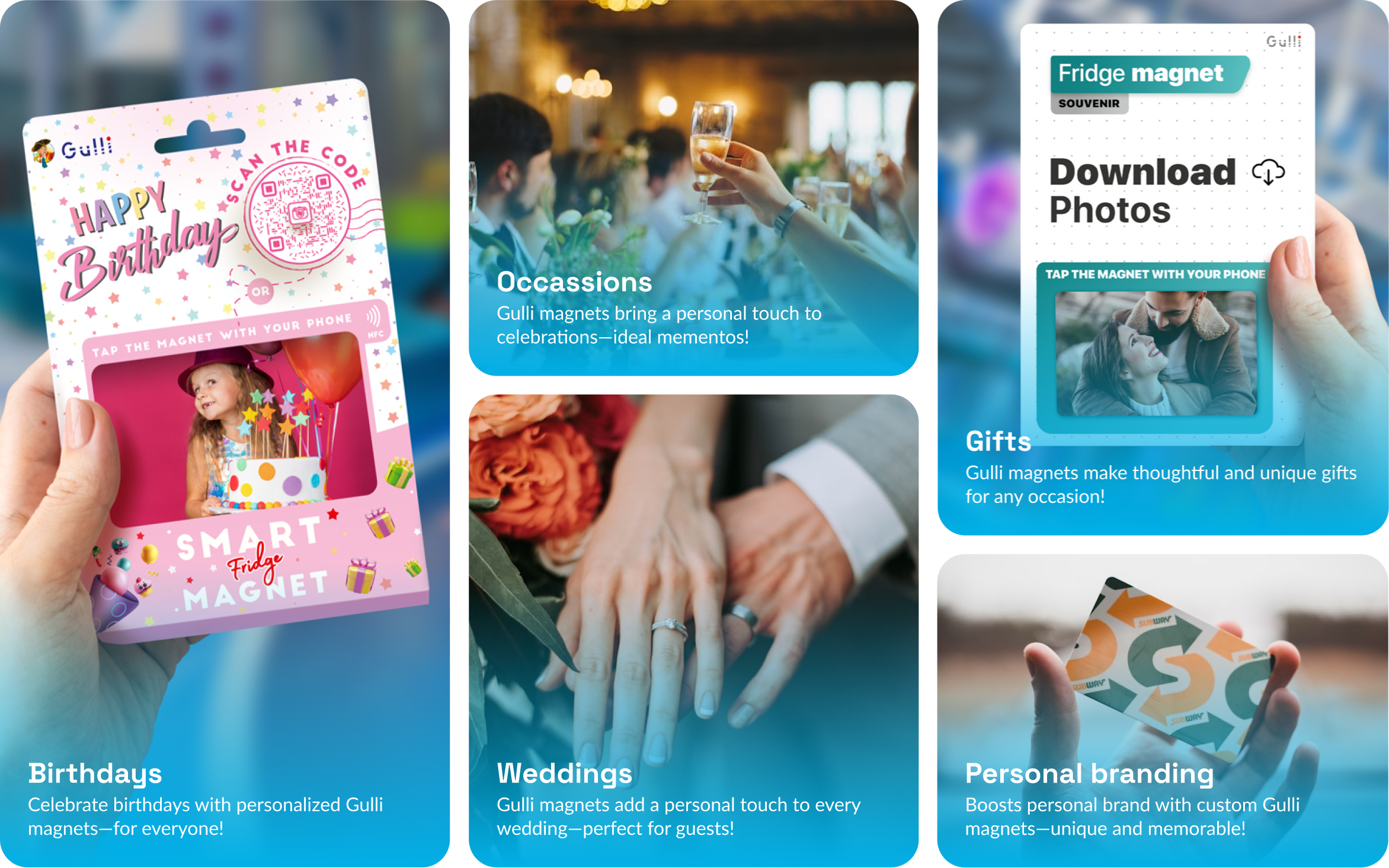
Birthdays
Tap. Smile. Happy Birthday.
In Dubai, birthday culture includes “reversible gifts,” where families give something back to their guests. Gulli fit perfectly into this tradition.
Playgrounds and family venues quickly adopted it:
- Kids loved the playful, personalized magnets.
- Parents loved the effortless way to capture and share moments.
- Playgrounds were amazed by the added engagement and loyalty.
For this iteration, I designed a tailored onboarding flow, explaining the birthday-specific features. We also added:
- A dedicated promotional feed for events and activities.
- A voucher & discount system to reward families and drive repeat visits.
What started as a souvenir became a tool for joy, marketing, and community building.








Onboarding
So, in this special “kids” iteration of Gulli, I created a different onboarding flow, one that clearly explains what this version of the app can do, and what kind of extra features it includes.
Playgrounds were amazed, right?Extra features? Oh yeah.





We added a dedicated feed for all promotional content from playgrounds, their events, activities, and announcements.
And on top of that, we built a brand-new feature for vouchers and discounts.
Next? Well, someone had to manage all of these new options, right? But I’ll get to that in a minute.





Gulli Admin Panel
One panel to rule all the magnets
I designed Gulli Admin, a SaaS dashboard built for playgrounds, hotels, and event organizers.
From one panel, they could:
- Add vouchers, manage bookings, and set room availability.
- Upload events, activities, and promotional content.
- Send push notifications directly to parents and guests.
- Track analytics like views, engagement, and notification performance.
The Admin Panel turned Gulli into a two-sided platform:
- On one side: families, travelers, and guests reliving memories.
- On the other: businesses powering those experiences with data and tools.





Reflections
More than a project. A story!
Designing Gulli taught me how to bridge two very different worlds.
On the B2C side, it was about tapping into emotion — making souvenirs feel personal, giftable, and worth collecting. On the B2B side, it was about simplicity — making sure hotels could adopt the system without added complexity.
One key lesson was learning how to defend simplicity against feature creep. Hotels often pushed for more controls and customization, but every added layer risked overwhelming travelers. Next time, I’d bring business stakeholders into co-creation earlier to align expectations before development.
Overall, Gulli reminded me that the best products live in the middle of business goals and human needs — and it’s the designer’s job to balance the two.16

Continuing the momentum
Turning locations into living memories
The App Clip
I designed onboarding to give users the choice: download the app for the full feature set, or simply tap and use the App Clip for a frictionless, one-step flow.
User research guided me here: 88% wanted an app-free experience. So I prioritized building an App Clip that launches instantly when tapping a magnet, cutting onboarding time from nearly 90 seconds to under 20.
I prioritized App Clip to match the 88% app-free preference and reduce friction at first use.
Onboarding




Branding is king, but onboarding is where the real magic happens. From the very first moment someone opens Gulli, I wanted them to feel like they’re holding something warm, familiar, and thoughtfully built. Like a small piece of travel magic in their hand.
The onboarding experience had to reflect that same vibe. Instead of overloading users, we introduce things gradually, starting with how Gulli works, and guiding them step by step. The idea was to make everything feel natural, like uploading a photo to your favorite social app, but more personal, and with a lot more meaning behind it.So, when the users taps on Create your story button, Gulli tries to find the photos from the trip (aka magnet) they’re holding in their hands, and it can upload them automatically for you, or you can always change them by selecting the photos from photo gallery.

What if?
Users don’t have NFC enabled?
No problem. For users without NFC-enabled devices, we added a backup option—a QR code printed on the back of each magnet.
The flow remains the same, just with a few extra steps: open the camera app, scan the QR code, and then launch the Gulli App Clip. It takes a little longer, but the experience stays just as smooth.
Users didn’t create an account before activating the magnet?
We’ve got them covered. Each magnet “floats” in the cloud, temporarily linked to the user’s phone ID.
So even if they didn’t create an account right away, they can come back later, log in with a new account, reconnect the magnet—and voilà, it’s theirs again.
No memory lost. Just pick up where they left off.
User story generation was interrupted by users?
During early tests, we noticed that users were struggling with the story upload flow. Many assumed their story was already uploaded, closed the app too early, and ended
up losing everything.
To solve this, we introduced a save button with a subtle Lottie animation to visually indicate the uploading process. Once the upload is complete, a blue checkmark appears—clearly signaling that the story is saved and ready to be shared or revisited.
The Problem
Traditional souvenirs are one-dimensional — they show where you’ve been, but not what it felt like. Travel memories often get buried in phone galleries, and sharing them digitally can feel impersonal or disconnected. What travelers really crave is something more meaningful — a way to relive the emotions behind their trip, not just the location.
The Goal
The mission was to design a collectible that blended physical charm with digital storytelling. My vision was simple: turn every illustrated magnet into a living memory capsule powered by NFC, with an effortless, app-free experience. From packaging to platform, every detail needed to feel cohesive, intuitive,
and fun.
It’s been an absolute pleasure bringing your vision for Gulli to life as a real iOS app. Your designs were full of heart and thoughtful detail, and it was truly rewarding to help turn them into reality.
Nenad Ljubik
iOS developer @Gulli Magnets
As someone who's tested a lot of early products, Gulli stood out. The interface was stable, responsive, and clearly built on a well-structured design system. You can tell the designer thought about both user experience and developer implementation.
Igor Ilievski
QA tester @Echo LTD
Explored UX Alternatives
The Souvenir Crossroads
With clear personas and validated needs in place, we explored multiple directions to uncover the solution that would best serve our users while aligning with business goals.
Considered Concept
Photo magnets with QR only
Mobile App-Only memory keeper
AR souvenir app
Printed story cards with NFC
Partnering with existing travel apps
Why We Considered It
Low cost, easy scanning
Rich digital feature set
Trendy, immersive
Lightweight, portable
Instant audience access
Why We Moved On
No offline magic, less interactive
Requires download, breaks spontaneity
Tech-heavy, alienates non-tech users
Lacks collectible, display-worthy appeal
Brand dilution, fragmented UX
Outcome: NFC magnets offered the perfect balance of tactility, technology, and emotional resonance, making them the most viable path for both user experience and business scalability — and the foundation for a souvenir experience unlike anything else on the market.



Mobile app
Verve
Museums. Reimagined.
Next project
User flows
The path of a memory
After conducting user research and gathering valuable insights, we developed personas and explored a variety of product concepts and scenarios. Ultimately, we identified the “digital fridge magnet with NFC” as our core highlight. From there, I began mapping the initial user flows — tapping the magnet with a phone, browsing photos, creating stories, uploading content, saving, commenting, sharing, and more. This stage was where our assumptions would be put to the test: either validated, challenged into a new direction, or, in the worst case, proving that this innovation wasn’t the right fit for our target customers.
Why these flows matter
These flows aren’t just steps on a diagram — they show how Gulli transforms a simple magnet into a shareable, living memory.
- App Clip flow highlights the instant, no-install experience, letting users relive a trip in seconds.
- Gift flow captures the joy of sending memories to loved ones, bridging the gap between physical keepsakes and digital storytelling.
By mapping these out early, we ensured that both first-time and returning users had an intuitive path — whether they were unlocking a memory for themselves or sharing it as a gift. Together, these flows turn travel memories into experiences that can be instantly unlocked, beautifully relived, and effortlessly shared.
Gift flow
Recipient receives the magnet/story
Start
Go to
Home screen
Select trip/magnet from Memories
Home screen
Tap the Share/Gift button
Enter a recipient name
Share dialog appears
Wrapping animation
Congrats screen
Magnet is successfully sent
Preview a story
Play/Pause the story
Story added to recipient’s profile
View images
Can view as a grid
App clip flow
Start
Go to
Home screen
User taps the magnet (NFC)
iOS App Clip launches
Splash screen/s
Onboarding
Finding images
from the trip
Creating a story
Actual story/images screen
If location is on
Automatically searches
from the location
If location is off
Manually select images
from the trip
Preview a story
Play/Pause the story
Congrats screen
Magnet is successfully activated
Save/Upload
Continue the flow
Repeat the step
Manually select images
Gulli at a Glance
Here’s how Gulli is being used in the real world
These outcomes weren’t accidental — they came directly from our user research.
Aligning features with stated user preferences (illustration, gifting, low-friction onboarding) directly fueled the 480k+ sales in 40+ countries.By choosing illustrated magnets (92% preference), we reached 480k+ sales worldwide. Prioritizing gifting (81% preference) led to 24k+ shared memories, while focusing on frictionless onboarding (88% preference) made Gulli a global keepsake. Each feature tied back to what users told us they valued most.
128
Cities & Partners
from boutique hotels
to souvenir shops
480k
Magnets Sold
now sitting on fridges in
over 40 countries
325
B-Day Memories
milestones captured
and kept forever
24k
Memories Gifted
moments shared instantly with friends and family
Figures based on sales & usage data from Jan 2023 – Jun 2025
A souvenir you can feel and relive
Making souvenirs smart, emotional, and unforgettable.
What started as a sketch turned into a global keepsake. In 18 months, Gulli Magnets grew into a hybrid product sold in 40+ countries, with 480,000 magnets in homes and 24,000 memories gifted. By combining research insights with branding, SaaS design, and physical product execution, I built an ecosystem that bridges travel, emotion, and technology.
Dejan Zafirovski
Product Designer and Illustrator
Work
About
Let’s work
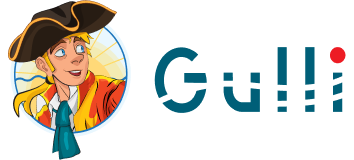
ABOUT THE PROJECT
Travel memories fade, but keepsakes don’t. Gulli Magnets were born to capture that feeling — NFC-powered collectibles that turn moments into living stories. I led the design end-to-end — from creating over 30 illustrated cities and building the brand identity to designing onboarding flows, gamification elements, and the Admin SaaS platform that powers it all. My role was to shape both the emotional side for travelers and families, and the functional side for hotels and admins.
Role
Lead UX/UI Designer
Scope of work
Illustrations
Visual Design
Packaging
Prototyping
Research
Client
Gulli Magnets
Type
iOS & Android Apps
Timeline
Q2 2022 - Q1 2025
A souvenir you can feel and relive
Making souvenirs smart, emotional, and unforgettable.
What started as a sketch turned into a global keepsake. In 18 months, Gulli Magnets grew into a hybrid product sold in 40+ countries, with 480,000 magnets in homes and 24,000 memories gifted. By combining research insights with branding, SaaS design, and physical product execution, I built an ecosystem that bridges travel, emotion, and technology.
The Problem
Traditional souvenirs are one-dimensional — they show where you’ve been, but not what it felt like. Travel memories often get buried in phone galleries, and sharing them digitally can feel impersonal or disconnected. What travelers really crave is something more meaningful — a way to relive the emotions behind their trip, not just the location.
The Goal
The mission was to design a collectible that blended physical charm with digital storytelling. My vision was simple: turn every illustrated magnet into a living memory capsule powered by NFC, with an effortless, app-free experience. From packaging to platform, every detail needed to feel cohesive, intuitive, and fun.
First ever Gulli Magnets illustration
The Spark
Where the spark began
The idea itself
When I joined Echo LTD (the parent company of Gulli Magnets), there was already an app in development under the codename Magic Memories. It had a basic logo and some initial color foundations, but there was no sign of illustrated magnets—or even the idea of magnets at all.
Then I heard the concept: digitizing travel memories and making them accessible with just a tap of the phone, ideally through an App Clip. That’s when something clicked. Around the same time, my CEO was already envisioning souvenirs with embedded NFC chips. The pieces began to fall into place.
The magnets
From the beginning, I pushed for magnets without QR codes—I wanted the experience to feel seamless: just tap with your phone, and your memory is there.
The next challenge was shape and size. After rounds of informal testing with colleagues, I landed on ID card dimensions. Compact, familiar, and easy to slip into a wallet or pocket, they fit perfectly into a tourist’s journey home.
Draft illustration
Knowing myself, I was never going to be the guy who settled for basic, already-shot photos. I wanted to leave my mark—to create something meaningful and lasting. So, I switched into “drawing mode” once again, two years after my last NFT art show, and the first draft was born.
It featured Ohrid’s Plaosnik Church, vibrant colors, those now-signature birds in the background, a big sun with soft clouds, and little green hills in the foreground, all reflecting the core brand elements of Magic Memories at the time.
First ever illustration
Even though I thought it was just the first draft, it turned out that the Ohrid illustration became the first official version of our magnets. After that came Sydney, then Rome, Barcelona, Amsterdam and Skopje—and just like that, the Gulli Magnets concept was born. Well, not quite, the name wasn’t
settled yet.
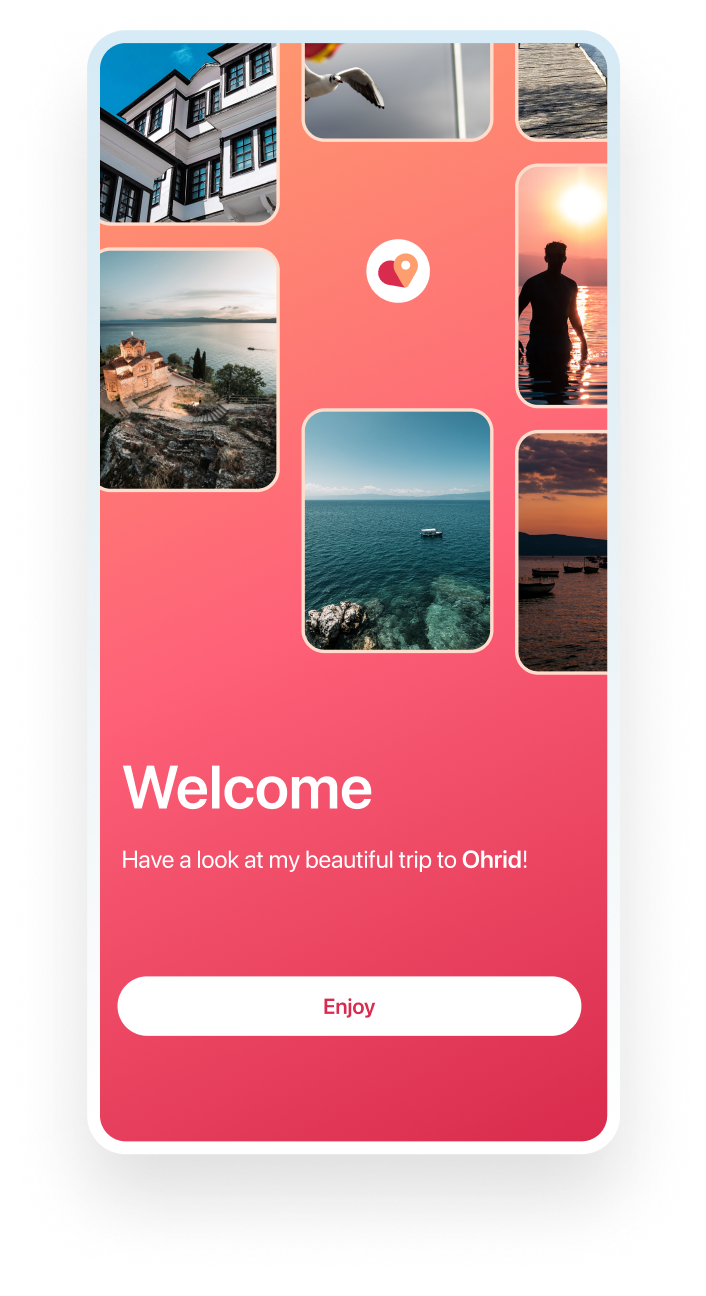
Before
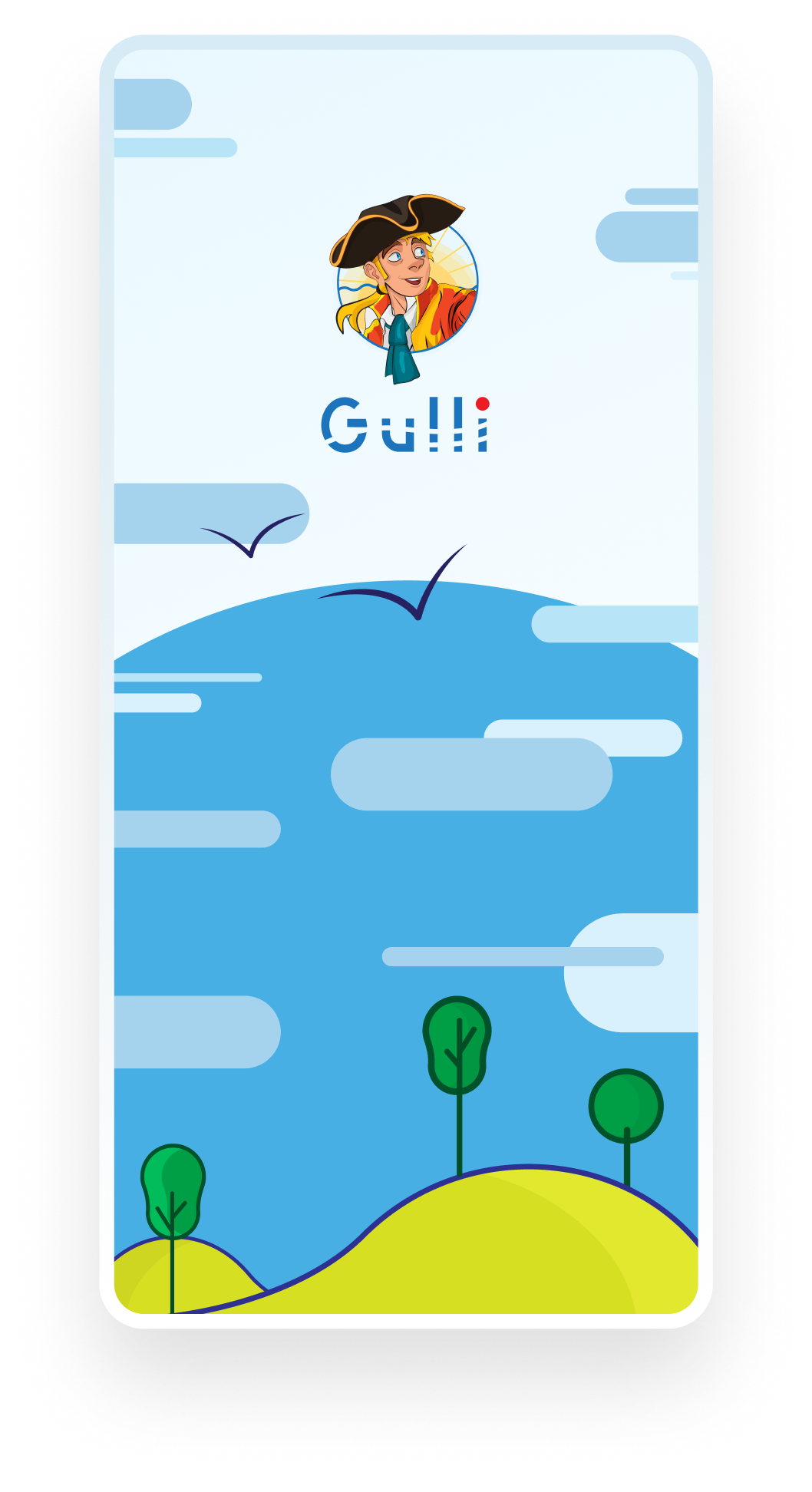
After
User interviews
What we learned from our users
I conducted interviews across four categories, speaking with travelers about how they captured memories, their feelings toward souvenirs, and their openness to physical–digital hybrids.
The results were clear:
- 92% preferred illustrated magnets over generic photo-based ones.
- 88% loved the idea of tap-to-memory without downloading an app.
- 81% said gifting made memories more personal.
- 73% found gamification motivating and engaging.
These insights didn’t just validate the vision—they directly shaped the features I designed, from the onboarding flow to gift interactions.
1
Travel & Memory Habits
Questions
- Can you tell me about a trip that meant a lot to you? What made it special?
- How do you usually keep memories from your travels?
- Do you collect anything when you travel (e.g. magnets, postcards, tickets)?
- How do you feel when you look at a souvenir or photo from your travels?
Answers
- Yeah, my solo trip to Japan. I didn’t speak the language, but everything felt like an adventure. I met people I still talk to today and found a lot of peace just walking through Kyoto’s temples.
- Mostly through photos and short notes in my phone. Sometimes I write in a journal if I have time. And I keep all the tickets — trains, museums, even receipts sometimes.
- Always magnets. It started randomly, but now my fridge is full of places I’ve been. I also grab postcards, even if I don’t send them — I just like the designs.
- Honestly, I feel this warm rush. Like I’m briefly back there. It’s a mix of nostalgia and pride — like, “I’ve really lived that moment.”
2
Visual Storytelling
Questions
- What would make a travel souvenir more meaningful or personal to you?
- If you could carry your favorite travel stories in your pocket, what would that look like?
- How do you feel about travel magnets that are illustrated instead of photos?
- Do illustrated representations of cities/landmarks speak to you emotionally or creatively?
Answers
- If it had a story behind it — like something handmade, or if it reminded me of a specific moment or feeling. Personal touches always win over generic stuff.
- Maybe small cards or magnets with tiny illustrations and a quote or phrase that brings me back. Like a visual diary I can hold.
- I actually love that! Illustrations feel more timeless and unique. Photos can be generic, but a drawing feels like someone’s perspective, not just a snapshot.
- Definitely. They often capture a vibe more than a literal scene. It sparks imagination — like, “What’s the story here?” Makes me want to revisit or daydream.
3
App + Magnet Combo
Questions
- What do you think about the idea of an app that lets you collect illustrated travel magnets and order physical ones for your fridge?
- Would you rather have digital-only memories or physical ones you can gift or stick on your fridge?
- How important is it for you to personalize or “unlock” magnets based on places you've actually been to?
Answers
- That sounds really fun and nostalgic! I’d love a mix of digital collecting and being able to turn the special ones into real magnets. It’s like merging memories with art.
- Definitely physical. Digital is great for collecting, but there’s something special about holding it or seeing it every day. Plus, they make cute gifts for friends and family.
- That makes it more meaningful, honestly. If I could “earn” or unlock a magnet only after visiting a place, it would feel like a little badge of honor — a reward for the adventure.
4
Validation & Improvement
Questions
- What’s missing from how you currently capture or celebrate your trips?
- Would you recommend an app like this to a friend? Why or why not?
- How would you describe Gulli Magnets in your own words after hearing about it?
Answers
- I usually just take photos, but then they get buried in my phone. I wish there was a more fun or creative way to relive the highlights — something more visual and personal than just scrolling through albums.
- Yeah, for sure! Especially to friends who travel a lot or love collecting things. It’s different, artistic, and adds a playful twist to remembering trips. Plus, the physical magnets are such a nice touch.
- It’s like a mix between a travel journal and an art collection — but for your fridge! It’s a fun way to turn your memories into something you can see, touch, and even share.
User insights
Validating the vision with users
92 %
of users preferred illustrated magnets over generic photo-based souvenirs.
88 %
said they’d love to unlock magnets based on where they’ve actually been.
76 %
of users said they often forget or lose access to travel photos stored in their phone/cloud.
68 %
shared that they already collect something physical during trips (e.g. magnets, tickets, postcards).
User personas
Meet our travelers
After gathering the user data, the next step was creating user personas. Three to five is ideal, so I decided to stick with three personas for Gulli Magnets.
They include an freelance illustrator, accountant, and a UX designer, each with different needs, frustrations, and daily device usage habits.
Each persona had distinct needs, frustrations, and device habits—but together, they gave us a clear direction: build something memorable, effortless, and deeply personal.




Main illustration
Showcasing the city, venue, or monument you’ve visited to highlight your memories even more.
NFC chip
An NFC chip is built in—just tap to instantly access and relive your memories.
The magnet
A durable magnet on the back ensures a firm grip, keeping your memories securely displayed.
Product
info
Dimensions
85.5 mm x 54 mm
Building something unique
Not just another souvenir
I set out to design more than just a better magnet—I wanted to create a keepsake that people would interact with again and again. One that blended art, storytelling, and seamless tech in a way no other souvenir had done before.The result was Gulli Magnets—a product that doesn’t just hang on your fridge, but unlocks memories, sparks conversations, and keeps the spirit of travel alive long after the trip ends.
Gulli Fridge Magnets

Classic Fridge Magnets
Technology
Memory Storage
Interactivity
Customization
Durability
Eco-Friendly
NFC-enabled, digital storage
Store photos, share them as gift
Tap with a phone to access content
Update photos and content anytime
Scratch-resistant, long-lasting
No need for reprinting, reusable
Static, no tech features
Holds only printed images
Just for decoration
Permanent, no changes possible
Can fade, peel, or break over time
Often plastic-based, disposable
Continuing the momentum
Turning locations into living memories
Onboarding
The App Clip
I designed onboarding to give users the choice: download the app for the full feature set, or simply tap and use the App Clip for a frictionless, one-step flow.
User research guided me here: 88% wanted an app-free experience. So I prioritized building an App Clip that launches instantly when tapping a magnet, cutting onboarding time from nearly 90 seconds to under 20.I prioritized App Clip to match the 88% app-free preference and reduce friction
at first use.
Branding is king, but onboarding is where the real magic happens. From the very first moment someone opens Gulli, I wanted them to feel like they’re holding something warm, familiar, and thoughtfully built. Like a small piece of travel magic in their hand.
The onboarding experience had to reflect that same vibe. Instead of overloading users, we introduce things gradually, starting with how Gulli works, and guiding them step by step. The idea was to make everything feel natural, like uploading a photo to your favorite social app, but more personal, and with a lot more meaning behind it.
So, when the users taps on Create your story button, Gulli tries to find the photos from the trip (aka magnet) they’re holding in their hands, and it can upload them automatically for you, or you can always change them by selecting the photos from
photo gallery.




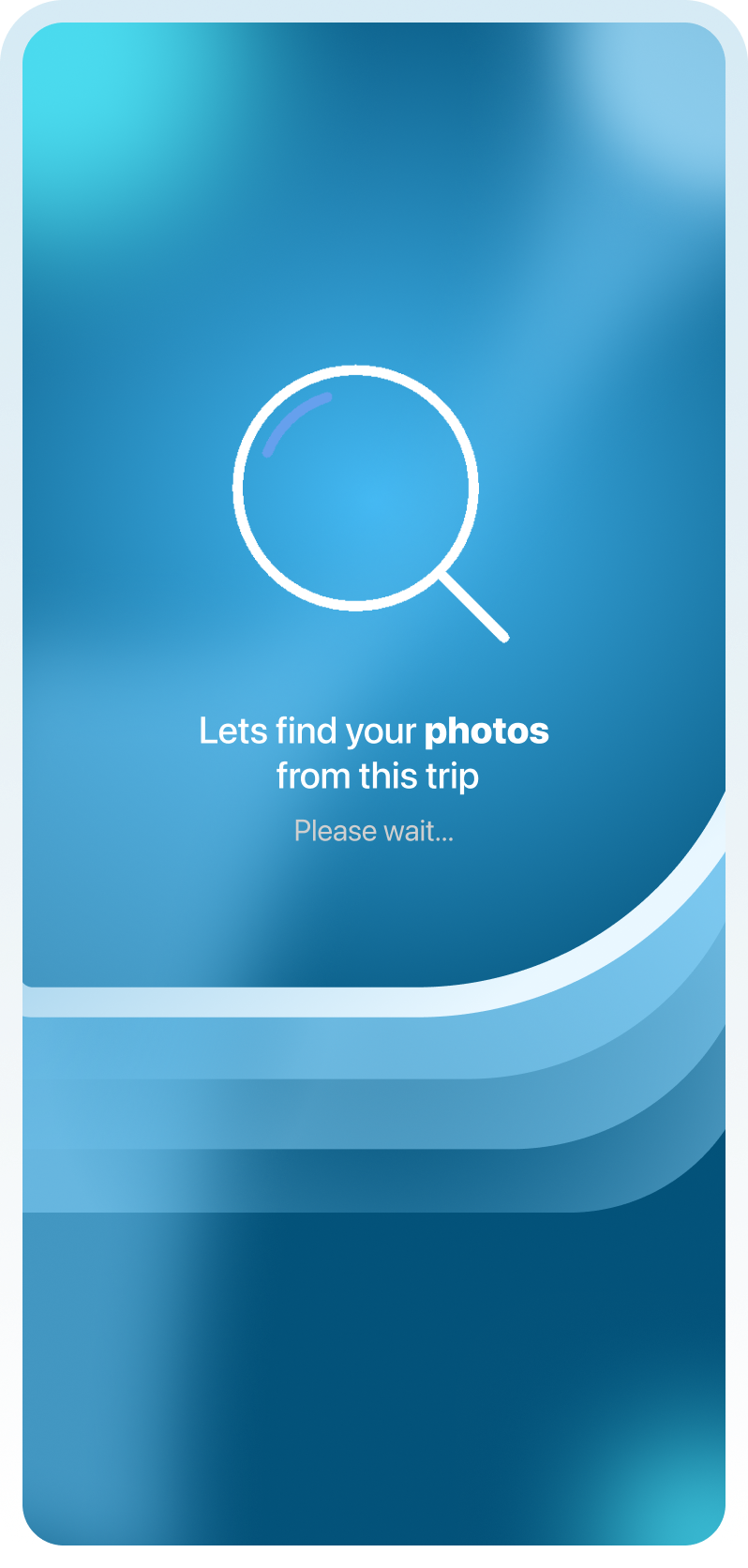
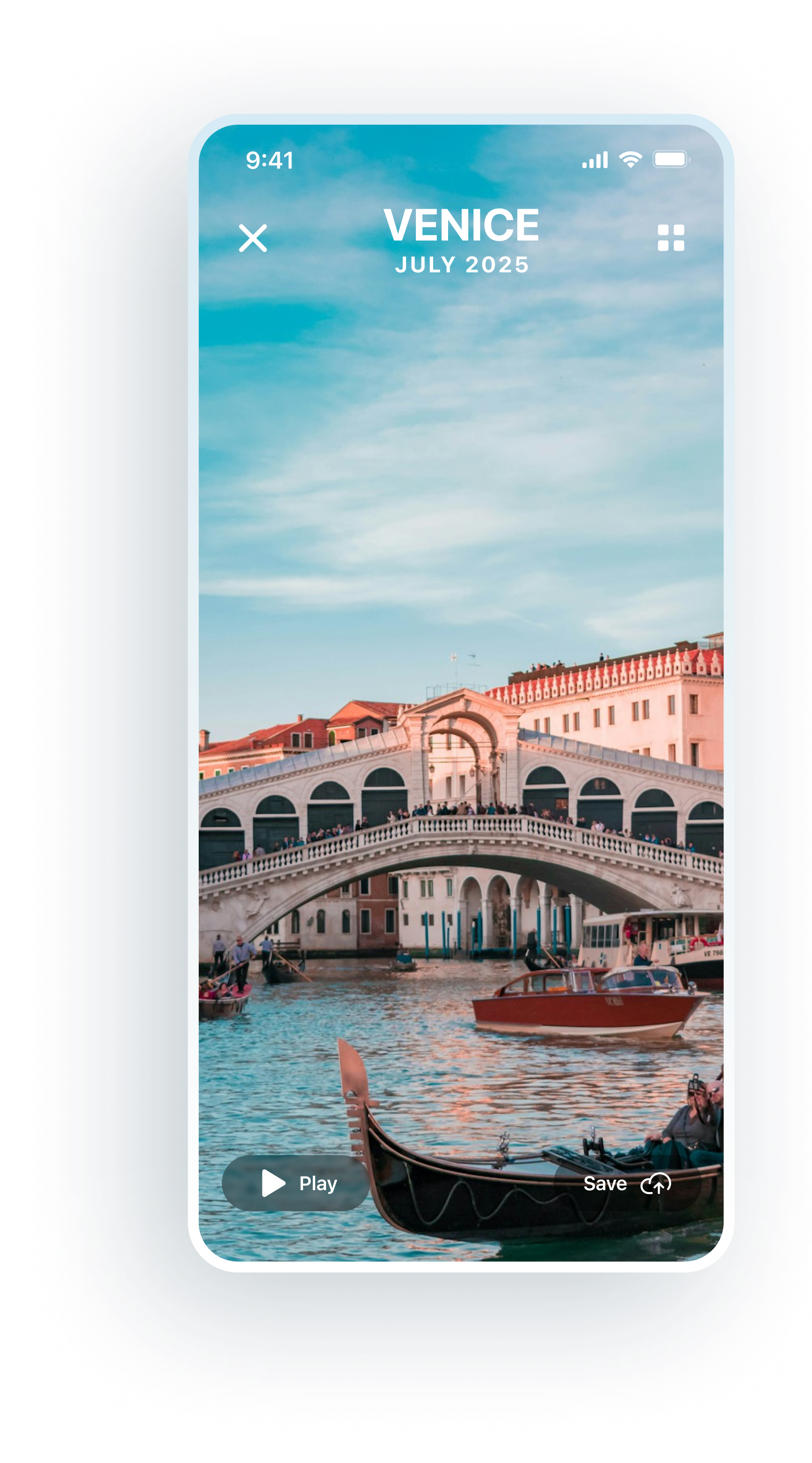
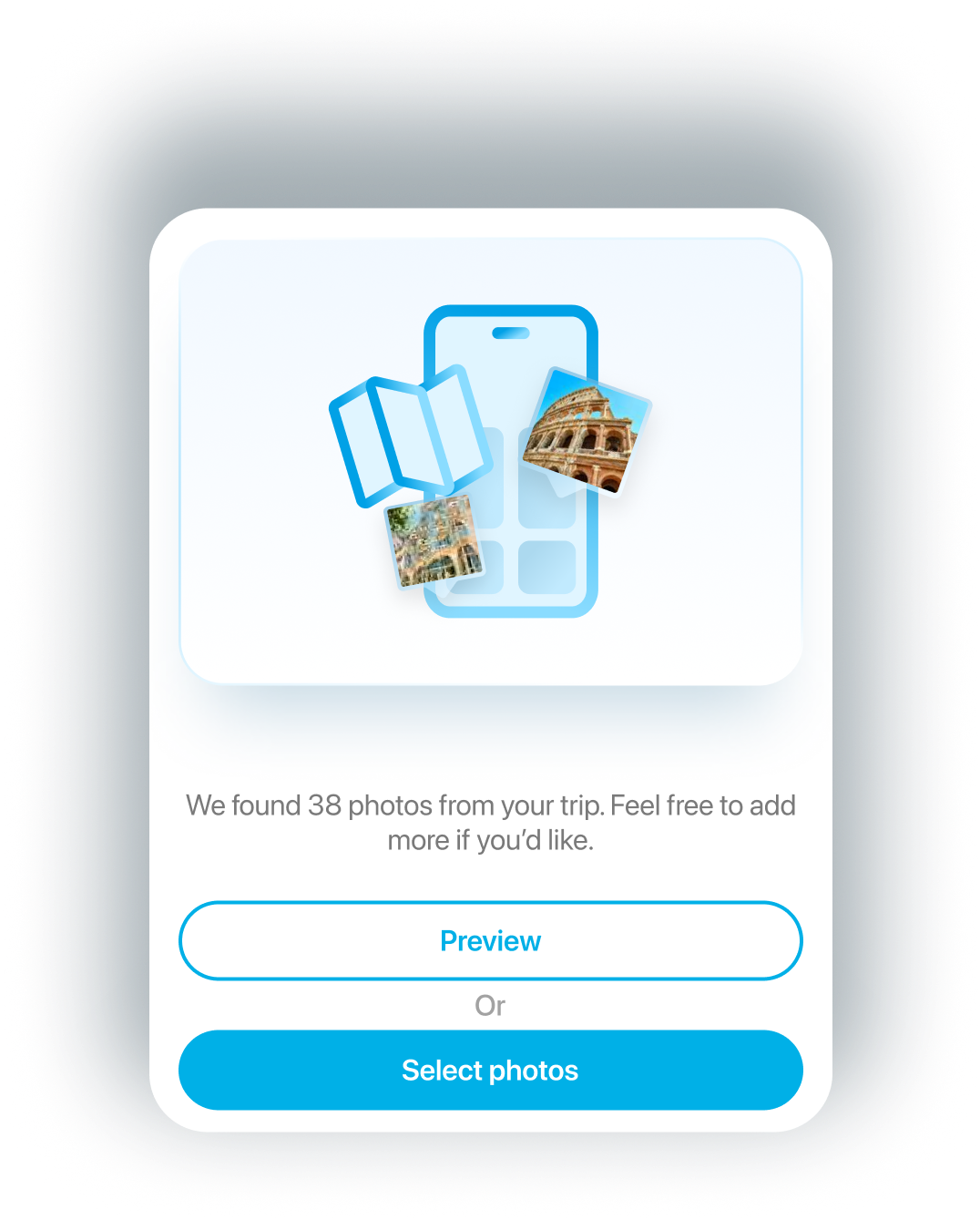
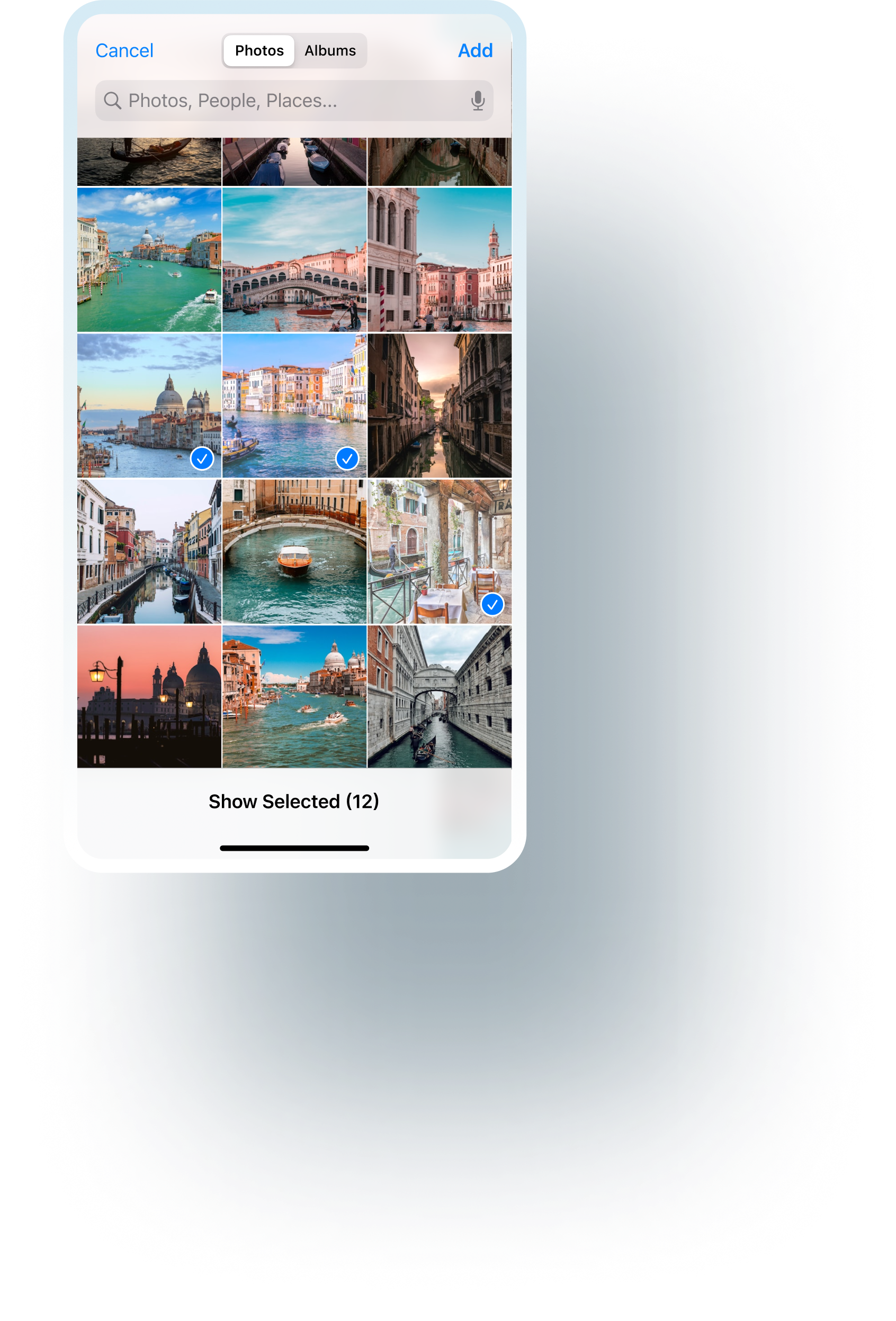
What if?
Users don’t have NFC enabled?
No problem. For users without NFC-enabled devices, we added a backup option—a QR code printed on the back of each magnet.
The flow remains the same, just with a few extra steps: open the camera app, scan the QR code, and then launch the Gulli App Clip. It takes a little longer, but the experience stays just as smooth.
Users didn’t create an account before activating the magnet?
We’ve got them covered. Each magnet “floats” in the cloud, temporarily linked to the user’s phone ID.
So even if they didn’t create an account right away, they can come back later, log in with a new account, reconnect the magnet—and voilà, it’s theirs again.
No memory lost. Just pick up where they left off.
User story generation was interrupted by users?
During early tests, we noticed that users were struggling with the story upload flow. Many assumed their story was already uploaded, closed the app too early, and ended up losing everything.
To solve this, we introduced a save button with a subtle Lottie animation to visually indicate the uploading process. Once the upload is complete, a blue checkmark appears—clearly signaling that the story is saved and ready to be shared or revisited.
It transforms a static map into a living journal, letting users relive their journeys through place and memory, not just pins on a screen.
Visits
The first screen inside the full Gulli app is Visits: a dynamic map that visualizes every country the user has traveled to.
- At a glance, color highlights show where they’ve been.
- Zooming in reveals more detail—narrowing from countries to specific cities.
- For each location, users can see how many photos and stories are tied to it.
Gifts
Research showed us that 81% of users valued gifting, so we made it a core feature. The Gift Flow was designed to feel personal, celebratory, and easy:
- A dedicated flow with playful animations and a “Congrats” screen.
- Automatic story sharing that adds the memory to the recipient’s profile.
- Two ways to gift:
- Physical — order a duplicate magnet to share with friends or family.
- Digital — send the memory instantly from the app.
Instead of endlessly digging through photo folders or sending links, gifting turned memories into something tangible, meaningful, and delightful—for both the giver and receiver.










Gamification
Memories count. Literally!
73% of travelers said gamification would motivate them to engage more. We introduced milestone badges and a continent progress tracker to turn memory-collecting into an achievement system.
As someone who’s been a gamer almost my whole life, this was one of the features I was most excited about.
Sure, we had the world map, we had memories and pins, and users already knew how many countries they’d visited
so far.
We wanted to make sure every step felt purposeful — turning progress into motivation. Why not create something that motivates users to travel more, collect more magnets, and share their adventures with friends?
We introduced continents as major milestones—and each country within a continent adds to that progress.
Together with the development team, we discussed whether leaderboards would be a good addition something for users who wanted to chase points and rankings.
But based on our user interviews, most people were looking for a more personal, journal-like way to track their achievements. So, we decided to focus on milestones and progress, rather than competition.
That said, we still added 50 collectible badges so users could proudly showcase where they’ve been and what they’ve experienced around the world.






Pivot: From Souvenirs to Celebrations
A new direction, same destination
While Gulli started as a travel keepsake, we quickly realized its potential stretched far beyond tourism. Travel memories were powerful, but the same mechanics could create value in hospitality, events, and even family celebrations.
I designed an Admin flow that allowed “admin” users—such as hotels or event organizers—to upload photos. Instantly, all instances of their magnet could display these shared memories.
Hotels, yachts, and event businesses embraced this as a marketing solution. Soon, Gulli Magnets were being used not only for travel, but also for weddings, birthdays, and business trips—anywhere memories deserved to be celebrated.

Birthdays
Tap. Smile. Happy Birthday.
In Dubai, birthday culture includes “reversible gifts,” where families give something back to their guests. Gulli fit perfectly into this tradition.
Playgrounds and family venues quickly adopted it:
- Kids loved the playful, personalized magnets.
- Parents loved the effortless way to capture and share moments.
- Playgrounds were amazed by the added engagement and loyalty.
For this iteration, I designed a tailored onboarding flow, explaining the birthday-specific features. We also added:
- A dedicated promotional feed for events and activities.
- A voucher & discount system to reward families and drive repeat visits.
What started as a souvenir became a tool for joy, marketing, and community building.
















Onboarding
So, in this special “kids” iteration of Gulli, I created a different onboarding flow, one that clearly explains what this version of the app can do, and what kind of extra features it includes.
Playgrounds were amazed, right?Extra features? Oh yeah.
We added a dedicated feed for all promotional content from playgrounds, their events, activities, and announcements.
And on top of that, we built a brand-new feature for vouchers and discounts.
Next? Well, someone had to manage all of these new options, right? But I’ll get to that in a minute.







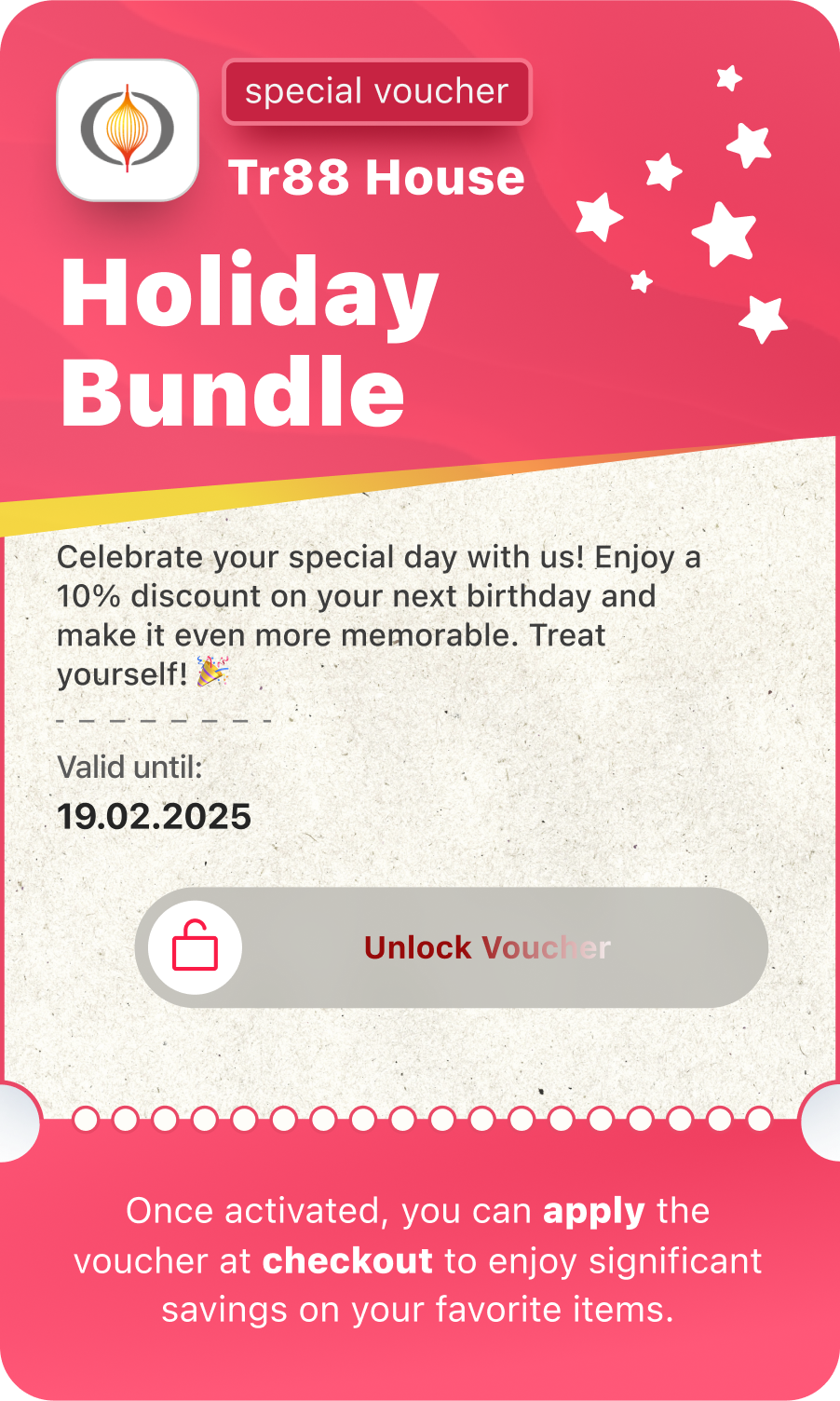
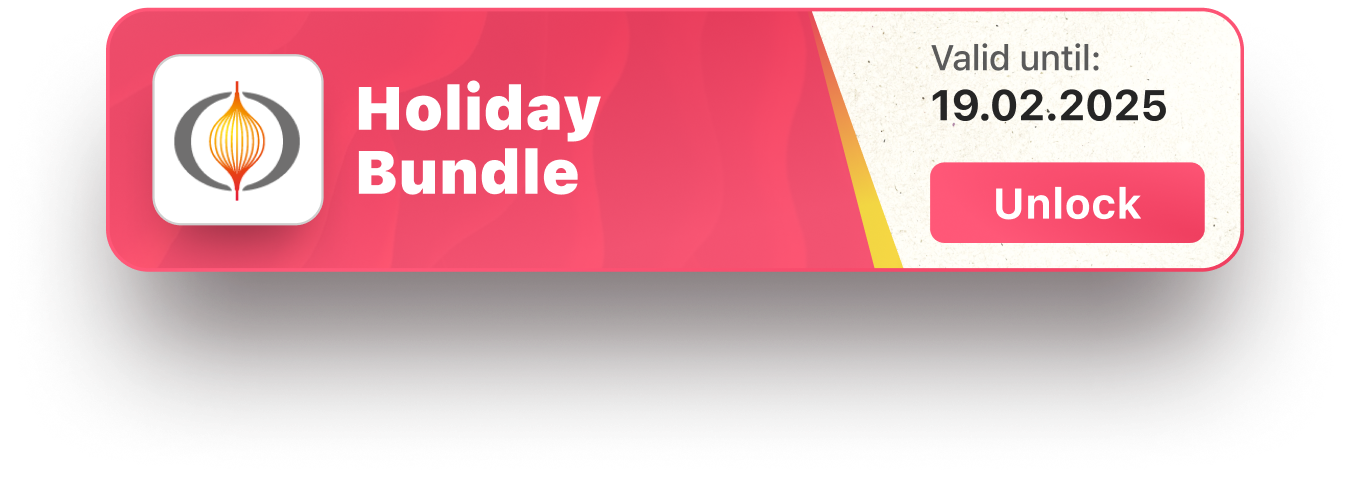
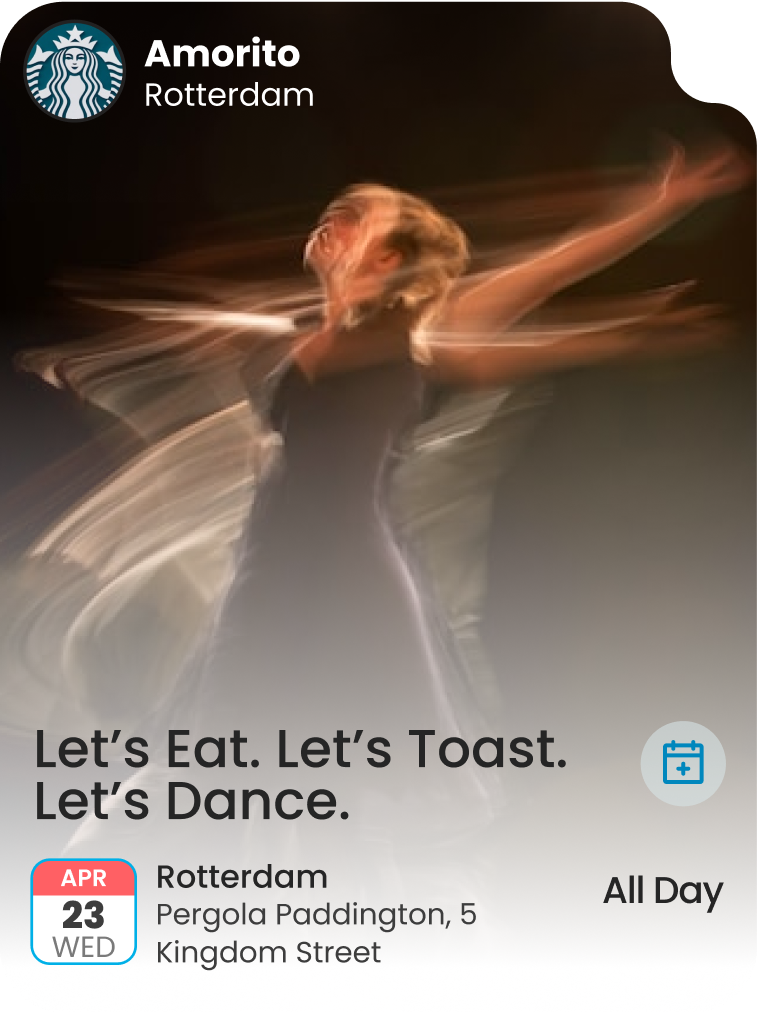
Gulli Admin Panel
One panel to rule all the magnets
I designed Gulli Admin, a SaaS dashboard built for playgrounds, hotels, and event organizers.
From one panel, they could:
- Add vouchers, manage bookings, and set room availability.
- Upload events, activities, and promotional content.
- Send push notifications directly to parents and guests.
- Track analytics like views, engagement, and notification performance.
The Admin Panel turned Gulli into a two-sided platform:
- On one side: families, travelers, and guests reliving memories.
- On the other: businesses powering those experiences with data and tools.





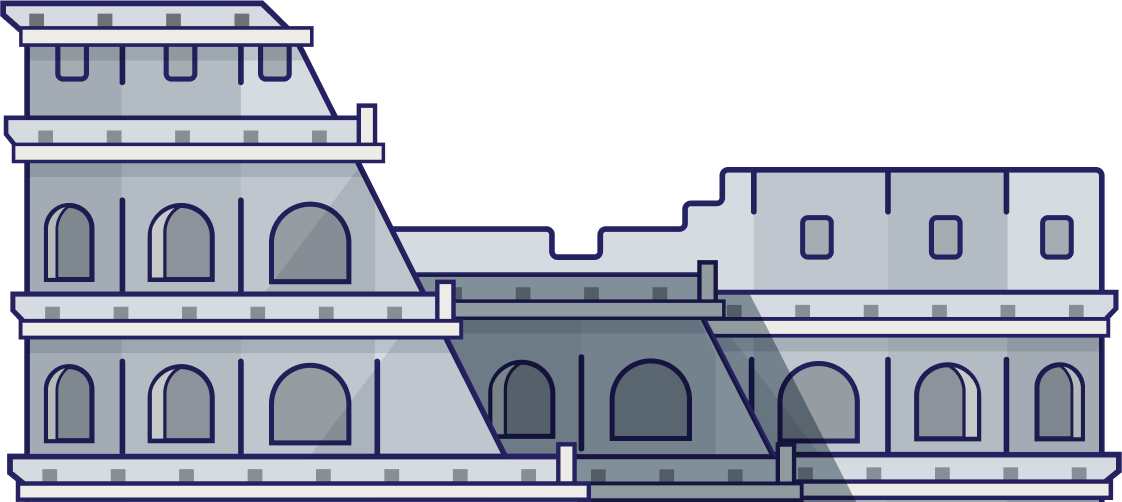
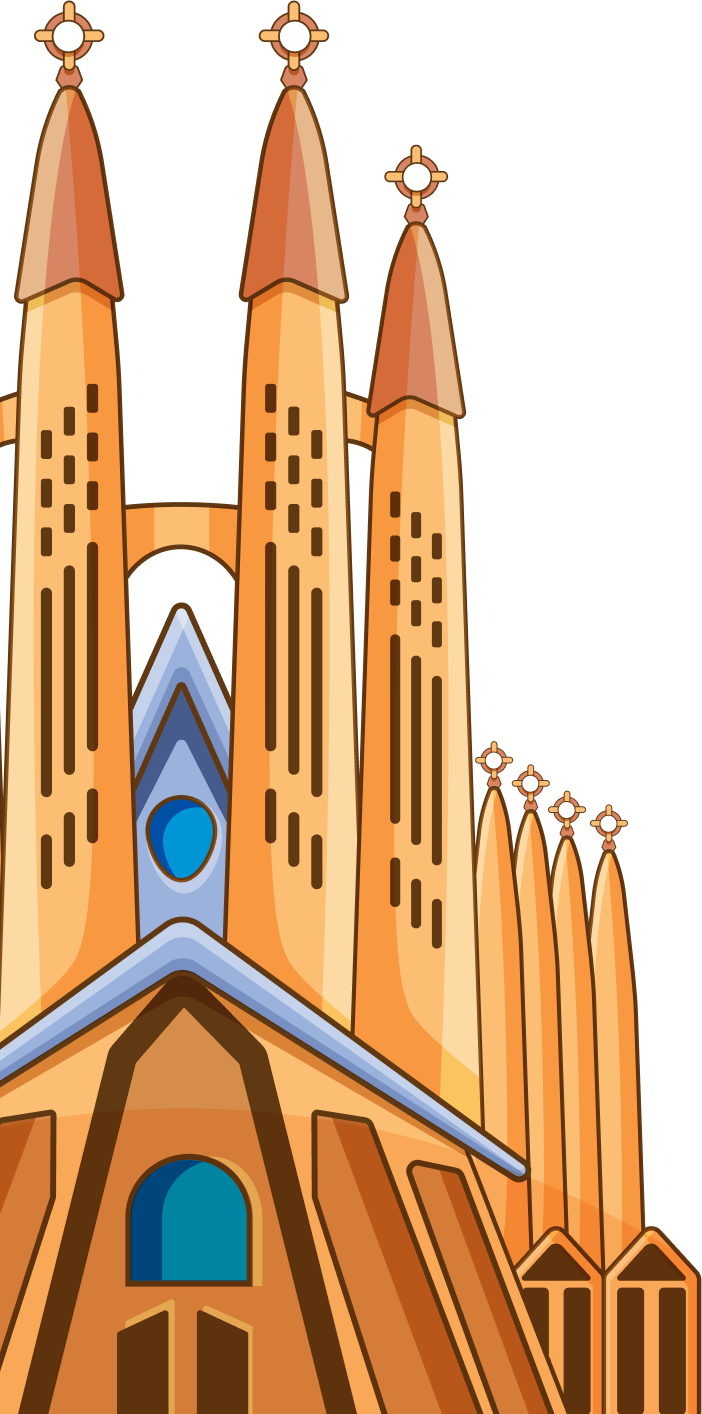
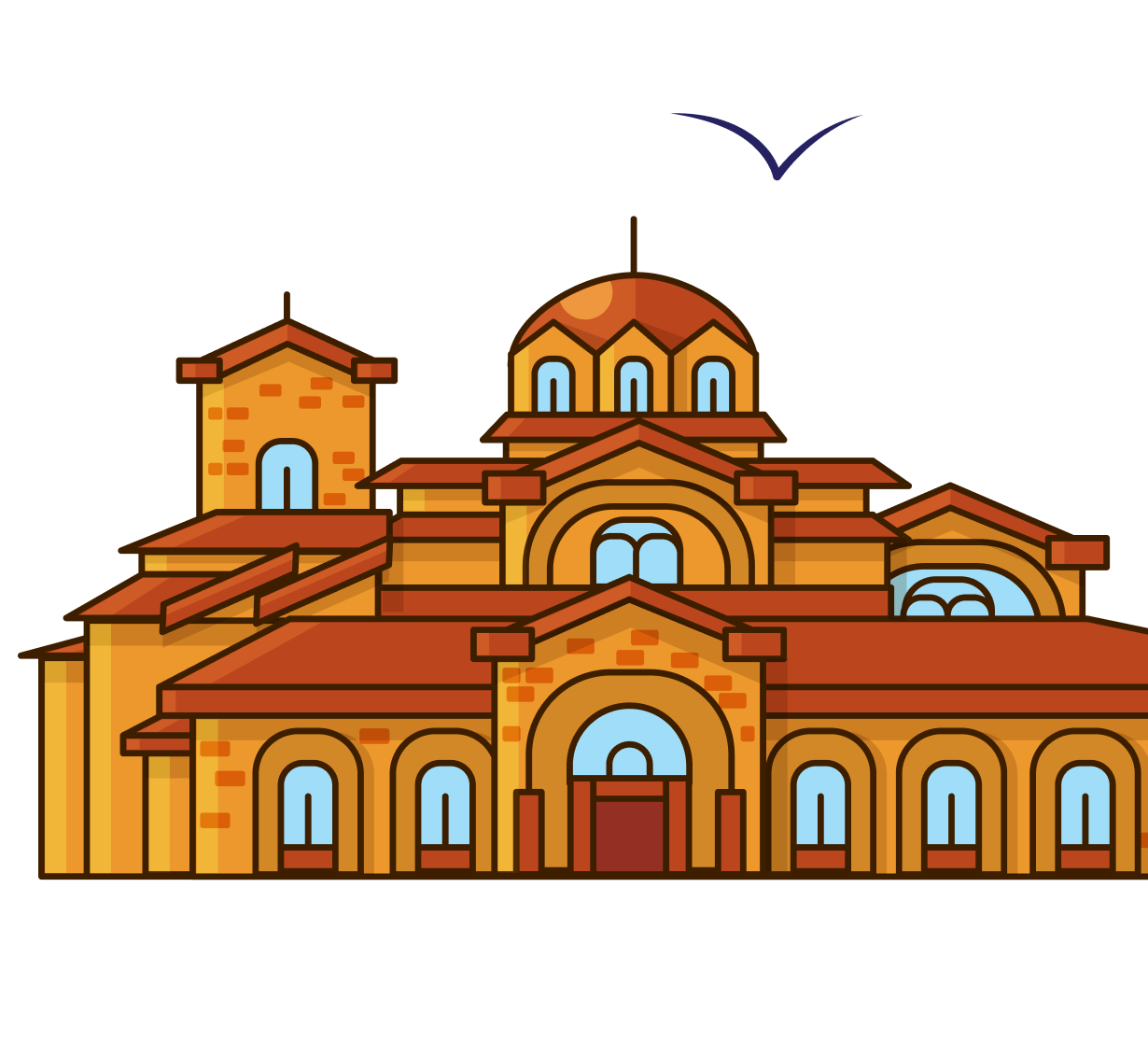
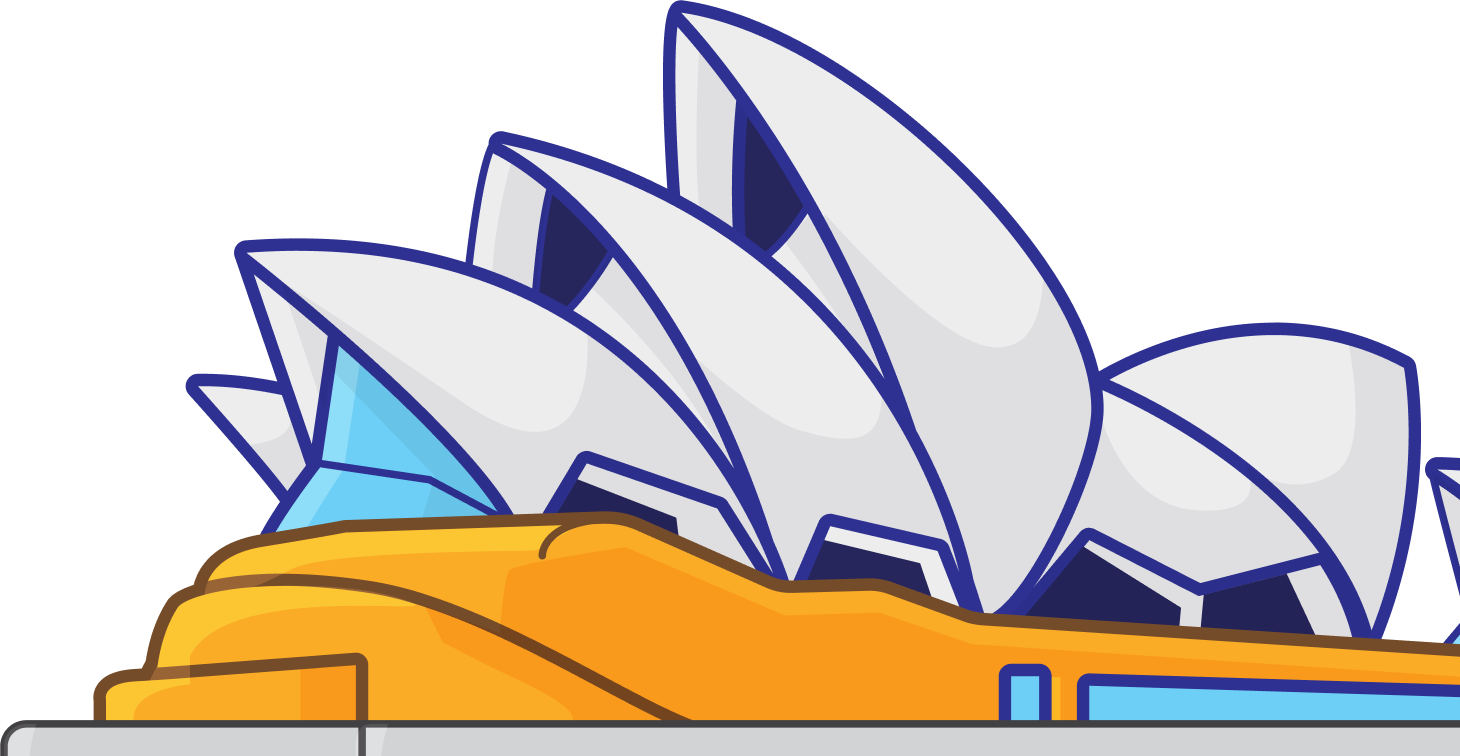
Reflections
More than a project. A story!
Designing Gulli taught me how to bridge two very different worlds.
On the B2C side, it was about tapping into emotion — making souvenirs feel personal, giftable, and worth collecting. On the B2B side, it was about simplicity — making sure hotels could adopt the system without added complexity.
One key lesson was learning how to defend simplicity against feature creep. Hotels often pushed for more controls and customization, but every added layer risked overwhelming travelers. Next time, I’d bring business stakeholders into co-creation earlier to align expectations before development.
Overall, Gulli reminded me that the best products live in the middle of business goals and human needs — and it’s the designer’s job to balance the two.




Draft logo versions of Gulli

The name/The logo/The branding
Naming the Vision, Shaping the Brand
So, cool, we already had the app built (early beta phase), but we needed a new name.
Now, we had stories from our trips stored in fridge magnets so tiny they could fit in our pockets or wallets.
Well, Gulliver’s Travels, the book, was all about a doctor’s voyages to Lilliput and Brobdingnag. That’s when it clicked! Gulli Magnets was the perfect name for an app that blends travel, exploration, and curiosity about the world!
The initial pinkish color was immediately replaced with a bluish tone, representing the seas and the Earth itself, complementary colors for travel and a life of wanderlust.
As I started to think more about design system and building it, at least basic foundations in terms of colors, typeface and components, I was jugling between creating the logo which will be gold starting point for our brand identity.
After all the draft logos were done, I realized it would be even more awesome if Gulli were a character for his future adventures.
He could fly, talk to horses, and explore bizarre worlds, just like in the book. So, the final logo was created, along with Gulli with his suitcase, ready to explore and enjoy life!
The design system
The glue behind the Gulli look
While shaping Gulli’s branding, colors, and identity, I also built a design system designed to scale, both for future designers working alongside me, and for every developer that’s ever been part of our team.
I’ll be honest, I’ve updated it many times. As Figma rolled out new features like variables, tokens, advanced prototyping, and conditionals, I kept refining the system to stay current and usable.
Colors and typography were fully defined, with local variables, booleans, numbers, and text strings clearly organized, making handoff to developers smoother and more reliable. I’ve used t-shirt sizing for spacing and sizing consistency, and every component came with usage guidelines and notes for devs.
I built it with the future in mind, to support growing complexity and evolving features. Because without a strong design system early on, we risk building blindly. And eventually, everything starts to fall apart.
It’s been an absolute pleasure bringing your vision for Gulli to life as a real iOS app. Your designs were full of heart and thoughtful detail, and it was truly rewarding to help turn them into reality.
Nenad Ljubik
iOS developer @Gulli Magnets
As someone who's tested a lot of early products, Gulli stood out. The interface was stable, responsive, and clearly built on a well-structured design system. You can tell the designer thought about both user experience and developer implementation.
Igor Ilievski
QA tester @Echo LTD



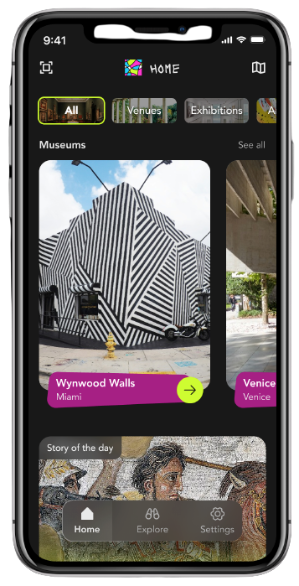
Mobile app
Verve
Museums. Reimagined.
Next project
Explored
UX Alternatives
The Souvenir
Crossroads
With clear personas and validated needs in place, we explored multiple directions to uncover the solution that would best serve our users while aligning with business goals.
Considered Concept
Photo magnets with QR only
Mobile App-Only memory keeper
AR souvenir app
Printed story cards with NFC
Partnering with existing travel apps
Why We Considered It
Low cost, easy scanning
Rich digital feature set
Trendy, immersive
Lightweight, portable
Instant audience access
Why We Moved On
No offline magic, less interactive
Requires download, breaks spontaneity
Tech-heavy, alienates non-tech users
Lacks collectible, display-worthy appeal
Brand dilution, fragmented UX
Outcome: NFC magnets offered the perfect balance of tactility, technology, and emotional resonance, making them the most viable path for both user experience and business scalability — and the foundation for a souvenir experience unlike anything else on the market.
User flows
The path of a memory
After conducting user research and gathering valuable insights, we developed personas and explored a variety of product concepts and scenarios. Ultimately, we identified the “digital fridge magnet with NFC” as our core highlight. From there, I began mapping the initial user flows — tapping the magnet with a phone, browsing photos, creating stories, uploading content, saving, commenting, sharing, and more. This stage was where our assumptions would be put to the test: either validated, challenged into a new direction, or, in the worst case, proving that this innovation wasn’t the right fit for our target customers.
Why these flows matter
These flows aren’t just steps on a diagram — they show how Gulli transforms a simple magnet into a shareable, living memory.
- App Clip flow highlights the instant, no-install experience, letting users relive a trip in seconds.
- Gift flow captures the joy of sending memories to loved ones, bridging the gap between physical keepsakes and digital storytelling.
By mapping these out early, we ensured that both first-time and returning users had an intuitive path — whether they were unlocking a memory for themselves or sharing it as a gift. Together, these flows turn travel memories into experiences that can be instantly unlocked, beautifully relived, and effortlessly shared.
Gift flow
Recipient receives the magnet/story
Start
Go to
Home screen
Select trip/magnet from Memories
Home screen
Tap the Share/Gift button
Enter a recipient name
Share dialog appears
Wrapping animation
Congrats screen
Magnet is successfully sent
Preview a story
Play/Pause the story
Story added to recipient’s profile
View images
Can view as a grid
App clip flow
Start
Go to
Home screen
User taps the magnet (NFC)
iOS App Clip launches
Splash screen/s
Onboarding
Finding images
from the trip
Creating a story
Actual story/images screen
If location is on
Automatically searches
from the location
If location is off
Manually select images
from the trip
Preview a story
Play/Pause the story
Congrats screen
Magnet is successfully activated
Save/Upload
Continue the flow
Repeat the step
Manually select images
Gulli at a Glance
Here’s how Gulli is being used in the real world
These outcomes weren’t accidental — they came directly from our user research.
Aligning features with stated user preferences (illustration, gifting, low-friction onboarding) directly fueled the 480k+ sales in 40+ countries.By choosing illustrated magnets (92% preference), we reached 480k+ sales worldwide. Prioritizing gifting (81% preference) led to 24k+ shared memories, while focusing on frictionless onboarding (88% preference) made Gulli a global keepsake. Each feature tied back to what users told us they valued most.
128
Cities & Partners
from boutique hotels
to souvenir shops
480k
Magnets Sold
now sitting on fridges in
over 40 countries
325
B-Day Memories
milestones captured
and kept forever
24k
Memories Gifted
moments shared instantly with friends and family
Figures based on sales & usage data from Jan 2023 – Jun 2025
Our customers became our friends
Voices that keep us going.
From hotel directors to families and small business owners, Gulli has connected us with people who share the same love for meaningful memories. Their words aren’t just reviews — they’re stories, friendships, and proof that our magnets spark joy long after the first tap.
A perfect blend of modern design and a personalized story – each magnet is a digital work of art inspired by your adventures. It’s more than just a keepsake; it’s a way to relive the moments you cherish most.
Jana Spirkovska
Macedonia, Skopje
Gulli Magnets really helped streamline the whole process with the birthday photos, making it effortless to create lasting memories. Parents love how personal and fun the experience is for their children.
Nikolina Mizich
KiDS Escape Room Franchise
The magnets are amazing and appreciated by our guests. They create a lasting connection to their visit, serving as a beautiful reminder of their time here and adding an extra layer of warmth to their overall experience.
Sai Rasam
Director of Rooms, Kempinski Hotel Muscat, Sultanate of Oman
Everyone is loving the product, from guests to corporate clients. The magnets add a unique, thoughtful touch that makes each visit memorable, and they’ve quickly become a signature part of our hospitality experience.
Abhishek Mishra
Director of Sales,
Waldorf Astoria, Doha
